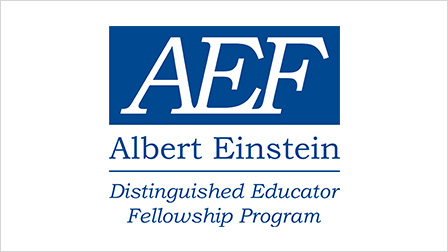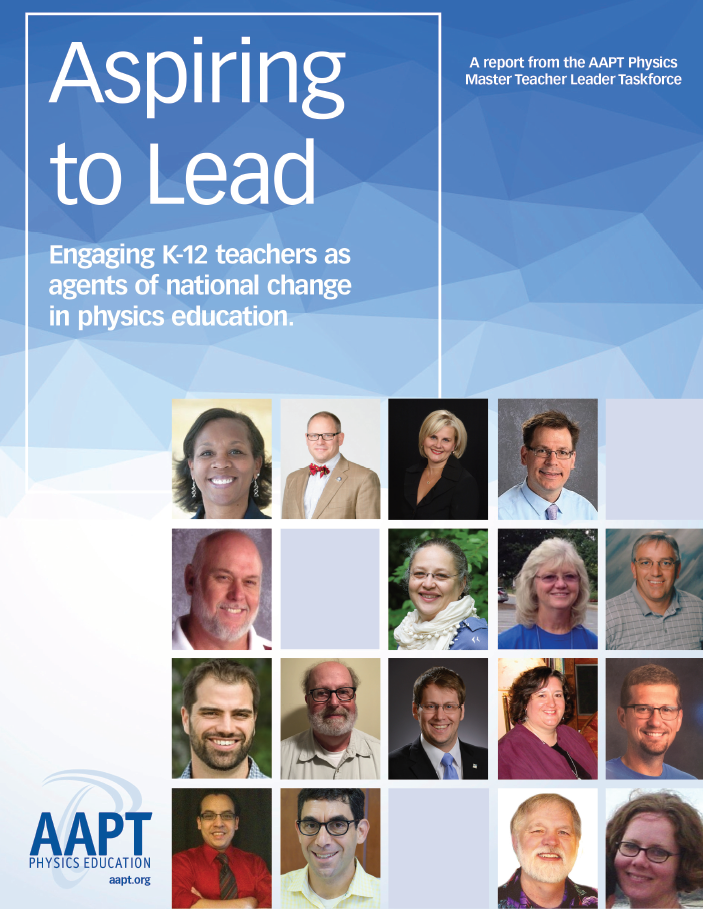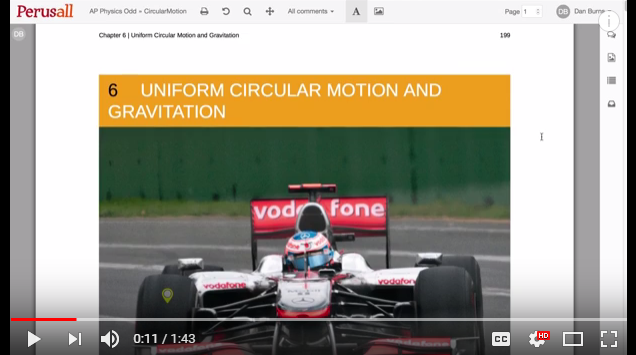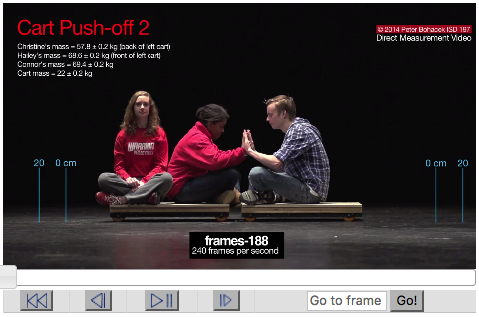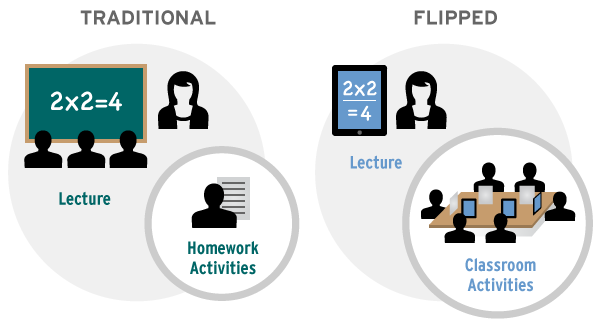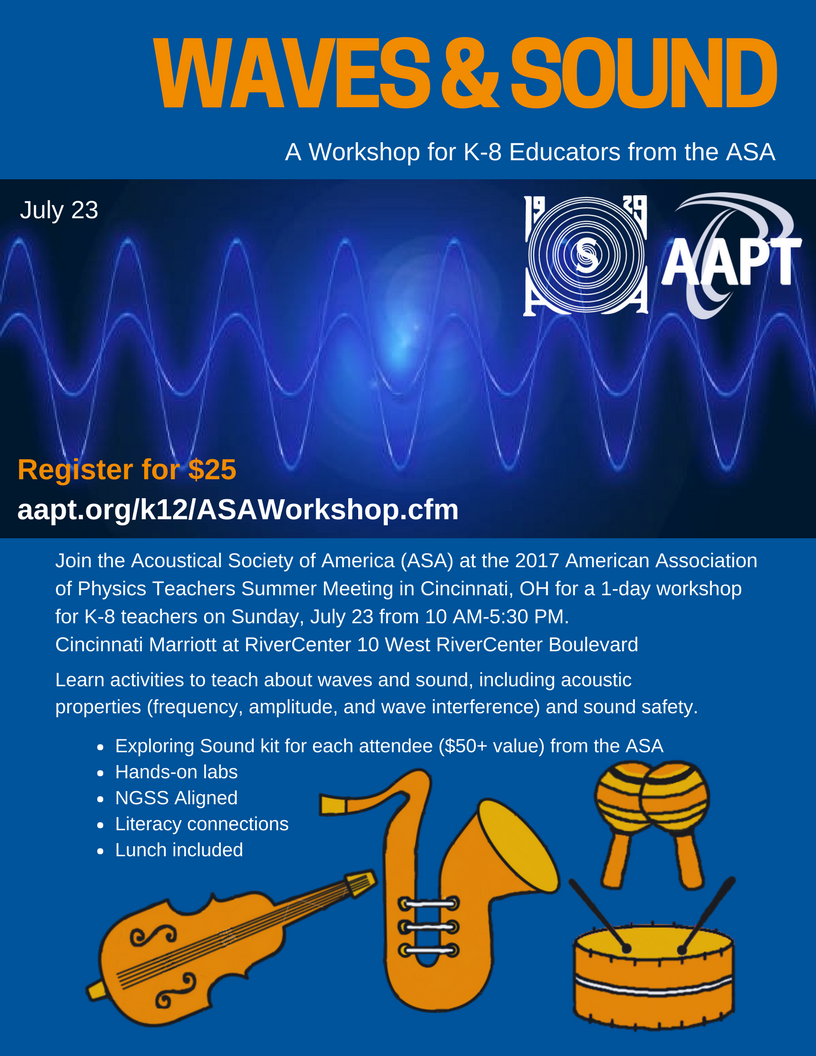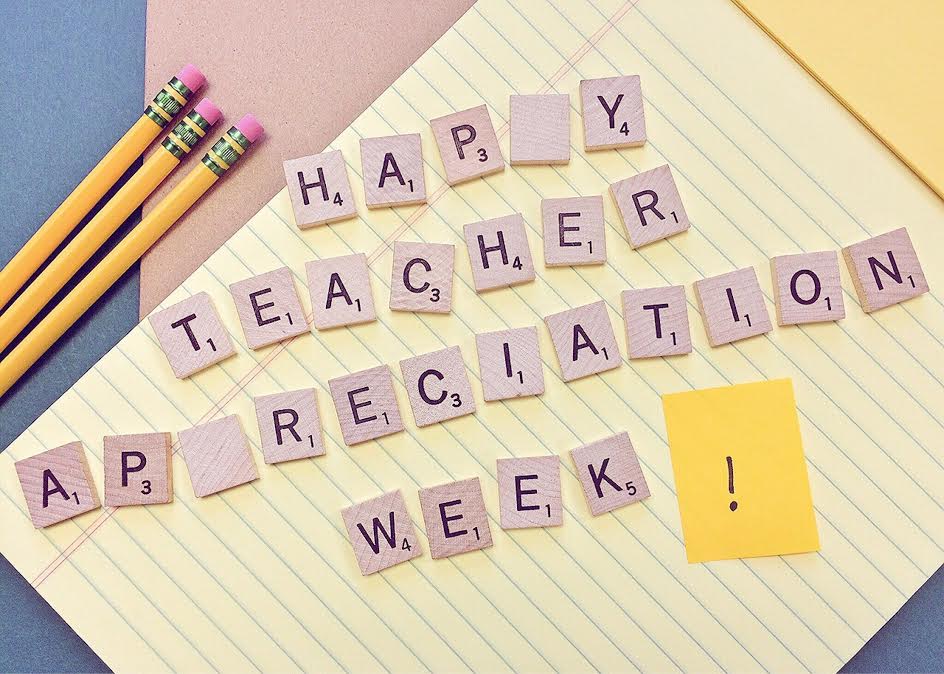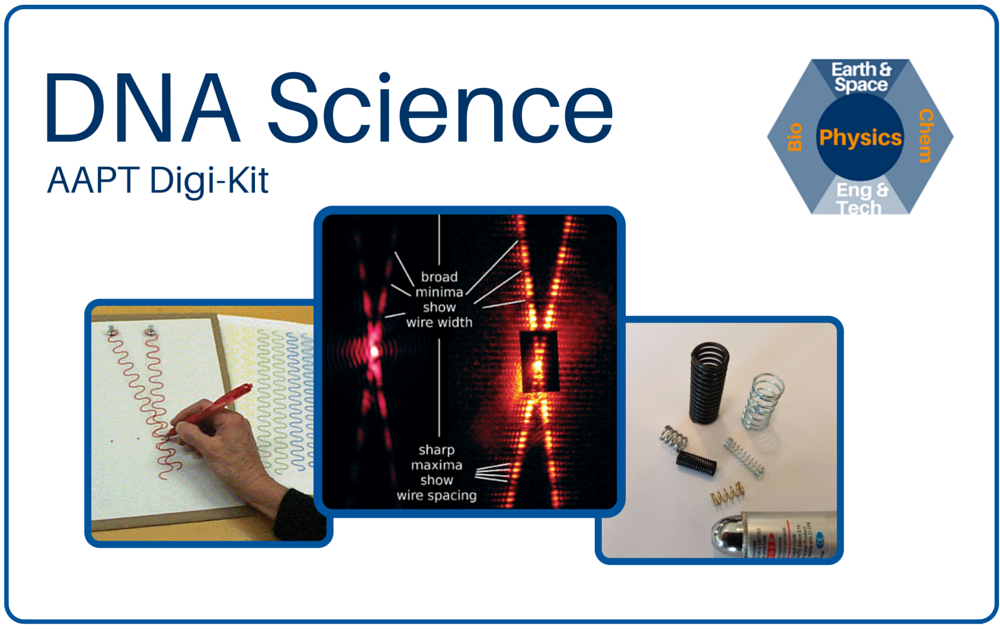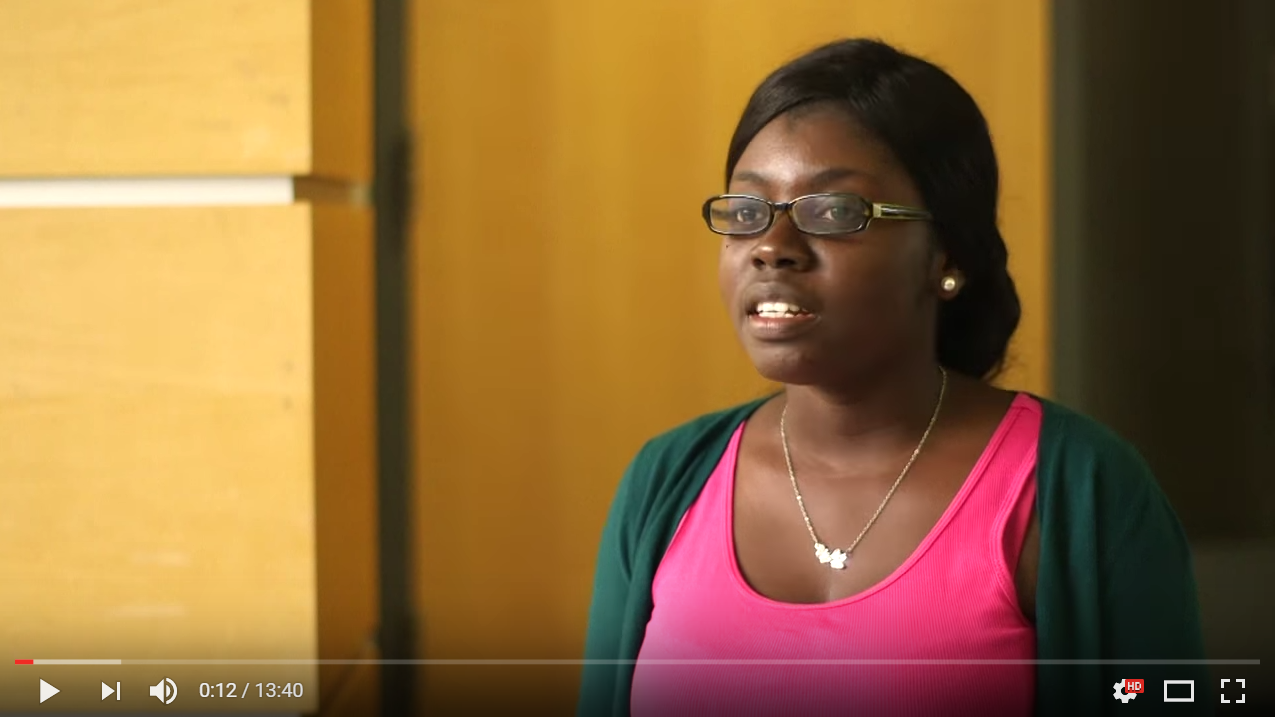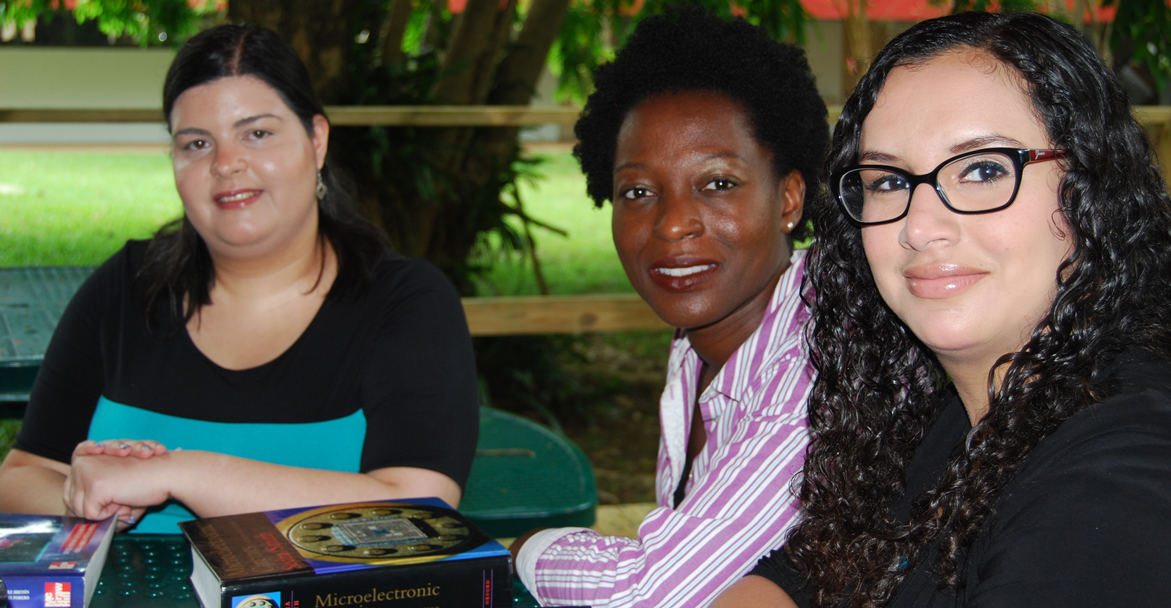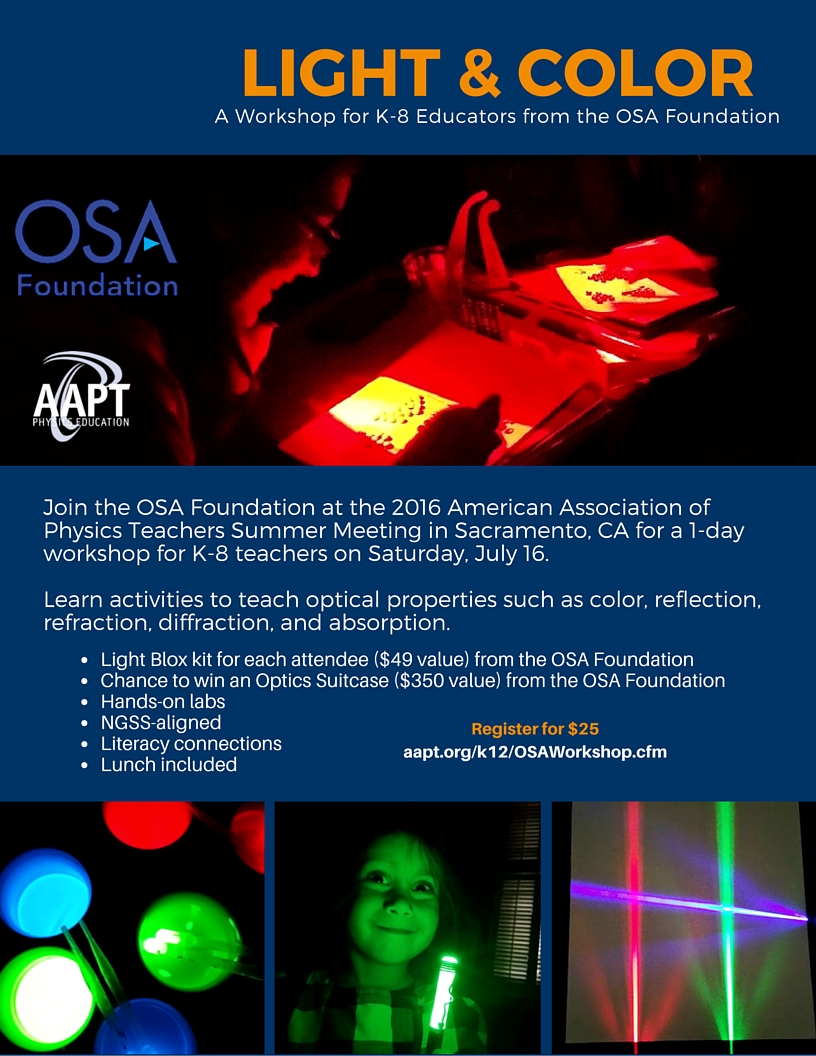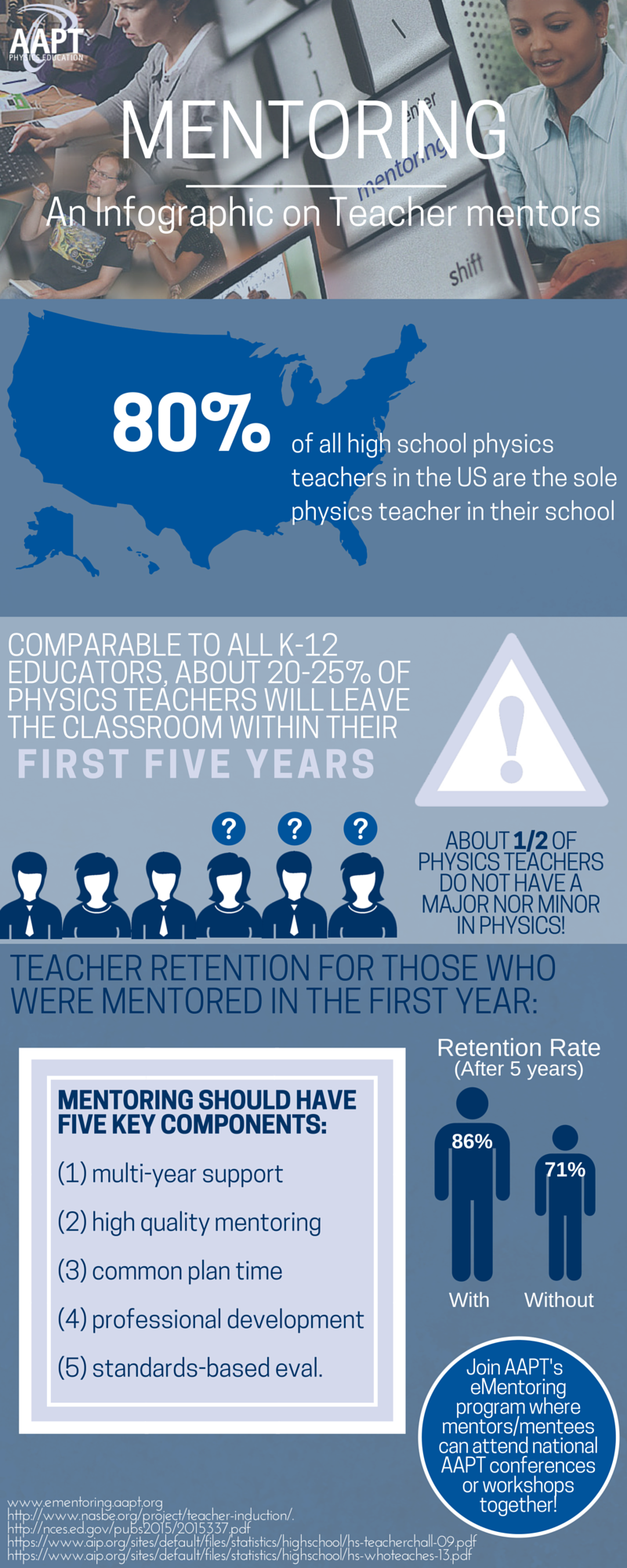Science. Power. Policy. And You. (Pt. 2)
by Justine Boecker and Dr. Bethany Johns, 29 May 2018
Reference this post: http://aapt.org/K12/K12-Blog.cfm#29May2018
You are the most influential person to your elected official and they want to hear from you. You are the expert and a voice for your profession, your colleagues, and your students. Elected officials need to hear from you, otherwise they may make decisions on complex issues, such as science and education, that are misinformed. Being engaged and having a long, productive relationship with your elected officials, whether you meet them in DC, in the district, or communicate online is important
This June AAPT hosts the second in a two part series hearing from Dr. Bethany Johns on science educators in policy. View the first part of the series here. Attendees will leave with practical strategies and instructions on how to initiate effective communication with your elected officials. For example, AAPT has set up a Congressional Visits Day program to support you to engage with your policy makers while in Washington, DC for the 2018 Summer Meeting. Sign up here. The goal is to have as many AAPT members as possible meet with their representatives during the week of the conference to begin to establish relationships and dialogues that can continue throughout the year.
In this webinar you will learn:
Your role in advocating for issues you care about most
What to expect in a meeting with an elected official
Planning for a meeting
How to schedule a meeting in DC or your district
How to conduct your meeting
Storytelling techniques to convey your message
AAPT Message to Congress
Follow-up after a meeting
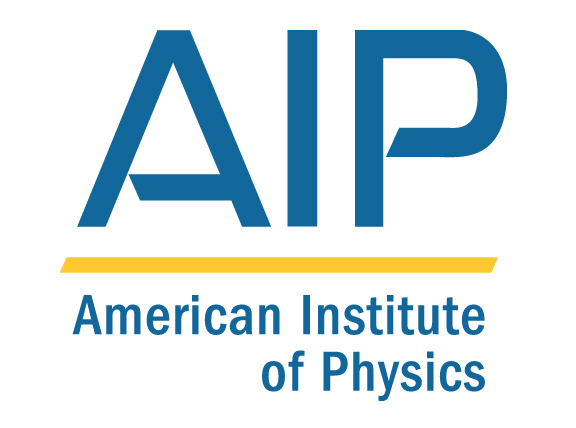
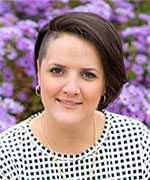
A Journey Through the U.S. Physics Team Competition
by Justine Boecker, 30 April 2018
Reference this post: http://aapt.org/K12/K12-Blog.cfm#30April2018
Students who join the U.S. Physics Team have the unique opportunity to compete in an international arena of other passionate physics students their age. AAPT and the American Institute of Physics sponsor select students to go forward into the International Physics Olympiad Competition as a team representing the United States. Competing is not only an honor, but a monumental experience in students' early careers.
To enter the competition, students must take two summative tests. The first is titled F=ma, and the second, the USAPhO exam. Based on scores on these two exams, students can earn an invitation to compete for the U.S. Physics Team. About 4,000 students per year take the first level of exams. After a few rounds of increasingly difficult tests, only twenty students remain. Those twenty are invited to a two-week camp at the University of Maryland where they prepare to represent the U.S. at the International Physical Olympiad.
In the upcoming webinar, we have the privilege of hearing from Mike Winer. Winer has not only been a coach for the team, but served on the team himself for two years, in addition to his winning first place at the Intel Science Fair. Along with coaching, Winer is currently a third year physics students at the Massachusetts Institute of Technology. Join the conversation at the webinar on May 8th to learn about the logistics of you or your students participating, ask questions, and hear Winer's exciting experiences with the U.S. Physics Team.
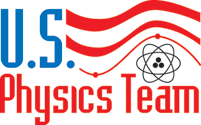
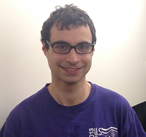

Science. Power. Policy.
by Justine Boecker, 9 March 2018
Reference this post: http://aapt.org/K12/K12-Blog.cfm#9March2018
There are a number of ideologies guiding the political debate in Washington DC. This debate affects you, your students, your career, and the funding for science and education. Your experience and expertise can help inform public policy. Congress must hear from you, their constituents, about the importance of science and education. Increasing the quality of science education is critical to helping the nation strengthen its global competitiveness by preparing a workforce for the 21st century. As a member of the scientific and education community, and a citizen in a democracy, we hope you will rise to the challenge of participating in your government.
In the upcoming webinar, Dr. Bethany Johns will focus on policy and advocacy and how you can effectively play a role. Dr. Bethany R. Johns works in Government Relations for the American Institute of Physics (AIP) managing the government relations advocacy services and administering tailored, nuanced strategies to educate, inform and constructively influence policy and policy-makers.
Dr. Johns has worked on a broad spectrum of issues regarded science and innovation including: Agriculture, energy, and environmental science for American Society of Agronomy, Crop Science Society of America, and Soil Science Society of America; Science policy consultant to the Commercial Spaceflight Federation, the premier trade association of over 40 businesses at the forefront of commercial aerospace; and at the American Astronomical Society’s public policy office successfully in securing millions of federal dollars appropriated for the space sciences
With the benefit of Dr. Johns’ experience in this webinar, you will learn:
Basics on science policy, federal budget, and legislative process;
Current politics that impact you;
Your role in advocating for science;
Methods for effective individual advocacy;
What the AAPT and AIP Public Policy Office is doing for you;
How you can get involved
Advocacy opportunities at the Summer AAPT meeting in Washington DC.
To learn more, join our webinar at the link at the top of this post.


Engage Your Students in the High School Physics Photo Contest
by Justine Boecker, 22 February 2018
Reference this post: http://aapt.org/K12/K12-Blog.cfm#22February2018
You have seen them at the summer meetings. Rows of student-taken pictures on display for members to view and vote on. The High School Physics Photo Contest has been an attraction at the meetings for years. The contest was established in 1998 commonly sponsored by Vernier Technology. High school physics students from around the country are given the opportunity to showcase their understanding of physics and their camera skills to turn physics into art. A student takes a picture showcasing a physics phenomenon and submits their image with a description of the applicable physics concepts. The entries are placed into one of three categories: Natural Photos, Contrived Photos or Photos with Multiple Images.
The judging then follows a two-step process beginning with a committee of teachers choosing the top 100. About 40% of the judgement will consider the essay description while the other 60% is on the photo itself. The second step is where the members and attendees of the AAPT Summer Meeting get involved. The boards displayed at the summer meeting consist of the top 100 for members to vote for the final winners. To view the 2017 winners, click here.
In the webinar on March 6th, coordinator of the High School Physics Photo Contest Tommi Holsenbeck will share more details on the photo contest with a highlight on the changes in the contest throughout the years. Tommi reflects, “The HS Photo Contest has been conducted by AAPT since 1998... If you look back at the beginning years, the contrast is striking. The advances in technology can be tracked by looking at the advancing years up until today.
To learn more, join our webinar at the link at the top of this post.

2017 1st Place - Contrived
Photo Credit: Ryan Michael Brohm
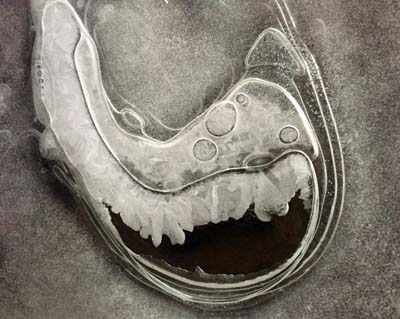
2017 3rd Place - Natural
Photo Credit: Aerianna Beth Porter
On the Shoulders of Giants: Pathways of Teacher Leaders
by Justine Boecker, 16 February 2018
Reference this post: http://aapt.org/K12/K12-Blog.cfm#16February2018
REGISTER HERE for an upcoming webinar on 22 February, at 8PM ET on this topic!
The AAPT Physics Master Teacher Leader Taskforce (PMTL) in their recent report Aspiring to Lead outlines the current need for highly qualified physics teachers in our country. According to the report, in schools which offer physics, less than half of the teachers have degrees in either physics or physics education. Often these teachers are specialized in different branches of science. This lack of pre-service education also reaches down into the elementary schools. Elementary teachers have little to no professional development in teaching their own developmentally appropriate physics concepts. As a result, teachers report high discomfort when approaching these topics.
The Physics Master Teacher Leader Task Force describes the lack of qualified physics teachers as a complex issue influenced by societal constructs of the teaching profession, lack of community and support upon entrance into the field, and narrow pathways to initiating change. With these in mind, the Aspiring to Lead report outlines a plan to support the next generation of teacher leaders. The plan addresses the issue from three sides. The first being Mentoring and Induction. PMTL aims to begin supporting teacher leaders in the first few years of teaching. This would provide new physics teachers with a solid foundation for success in the classroom. The second aspect the report outlines is a vertical alignment group. The goal being to form relationships between teachers in the elementary grades and those in the secondary grades allowing learning and mentoring to and from both levels. The final area of concern by the Physics Master Teacher Leaders is Program Support and Advocacy. This will train and support teachers in advocating for their own programs and opportunities within their local states and districts. With these three areas of support, the PMLT intend to raise up the next teacher leaders in physics.
In the upcoming webinar, Alice Flarend and Josh Underwood, both members of the Physics Master Teacher Leader Task Force will be sharing their own journeys to becoming teacher leaders. Alice began her teaching career after leaving a Ph.D. program in nuclear engineering. Her path then continued through both private and public school settings, countless professional development sessions and a recent completion of a Ph.D. in Curriculum & Instruction with an emphasis in teacher professional development. Alice reflects, “Teacher leadership is important because an educator never stops learning and that process does not happen alone. Leadership means seeking out opportunities to grow by reaching out to others. This means I become a better teacher for my students and help other teachers do the same.” Additionally Alice recognizes, “Finally, education is not just about what happens in my classroom. Leadership from classroom teachers is also needed to guide authentic reform in education so that changes are meaningful and practical.”
Josh has been teaching for 18 years currently in Kentucky public schools. His path to teacher leadership included being a PTRA, a National Board Certified Teacher, and being named 2011 Presidential Awardee for Excellence in Mathematics and Science Teaching, Kentucky Teacher Retirement System Trustee, and Kentucky Education Association Teacher of the Year. Josh concludes, “Teacher leadership is important because we are the ones who are truly connected to the students and what is working in our classrooms. Because of this, we need to be the ones stepping up to help others and sharing our experiences.”
To hear more about Alice and Josh’s journey in teacher leadership and the programs described in the Aspiring to Lead report, join the upcoming webinar February 22nd at 8:00PM EST.
To learn more, join our webinar at the link at the top of this post.
Learn about Physics Education from a National Perspective
by Justine Boecker, 1 January 2018
Reference this post: http://aapt.org/K12/K12-Blog.cfm#1January2018
Are you or do you know a promising undergraduate physics or physics education major? Physics students interested in K-12 physics education (including Spring 2018 graduates) are welcome to apply for the SPS Summer Internship program.
Each year, the AAPT hosts one summer intern to support the work and professional development of K-12 teachers of physics. Interns are provided with a summer stipend, travel to/from Washington, DC, and housing. This upcoming summer, the intern will be able to support exciting national K-12 initiatives, including STEP UP for Women, Computational Modeling in Physics First, Physics Teacher Policy Leadership, and development of curricular resources.
APPLY HERE by January 15th for the SPS Summer Internship program and to learn more. Contact AAPT K-12 Program Manager, Rebecca Vieyra, at rvieyra@aapt.org for details about the summer experience at AAPT.
Here are some reflections from AAPT's most recent SPS intern, Justine Boecker:
"I can vividly remember listening to the message that I was chosen for the SPS internship at AAPT the upcoming summer. It was during my spring break from college, and I was working my part time job at a childcare center. I was crouched in the closet checking my phone in expectation of the call. As I listened to James Merrick’s voice, I could not help but come bouncing out of the the closet to tell my mentors and co-workers the news. As much as I love being there at the center working with toddlers, I could not work for them this summer. I was going to be in Washington DC."As excited as I was for the internship before hand, in reality the experience was more than I could have imagined it would be. I did things and met people I never could have predicted. I had meetings in the US Department of Education building and the Library of Congress. I went to the National Academies. I met with senate staffers. I traveled to Miami, Cincinnati, and New York. I met people who were as passionate about both quality and equitable physics education as I. I was introduced to more people than I can count that will support my big and small dreams of influencing physics education. Those ten weeks I saw science education from a whole new perspective. I had never considered science education through a national lens.
"Now that I have started my first year as a classroom teacher, I look back on the whole experience with yet another lens of perspective. I see even more value in the experience than I could back then. I gained more leadership skills than I realized. I am now more confident in my understanding, but at the same time even more open to the things I don’t know. I am grounded in my solid foundation of current best practice that was affirmed through my work at AAPT, but also much more aware of my limitations. I learned that it is okay that I still have things to learn. It is okay for me to ask questions. It is okay to ask for help. This skill, as a first year teacher, has thoroughly impressed my administration, and helped me to develop more quickly into the quality teacher my students deserve."
Would you recommend this internship to another college student?
"Absolutely, without a doubt, yes. I would recommend this internship. Not only was the AAPT portion of my internship career shaping for me, working with SPS puts this internship far above many others. As an SPS intern, you are supported in all areas of your life in Washington as you learn and grow.
Remembering back, as the May move-in date got closer and closer for me to leave Minneapolis for DC, I developed some doubts. I knew this would be an important step for me in the science education leadership career path I planned, but I did not realize that it would be coming so soon and take me to places I had never been with people I had never met. I also did not know what I was doing. I felt highly inadequate and under qualified. I was just a 22 year old college student with little experience. I wish I could go back and tell myself to calm down. I was about to have the biggest adventure of my life so far, and I was ready for it."
Learn more about recent interns' experiences at their blogs.
- Justine Boecker (2017)
- Simon Wright (2016)
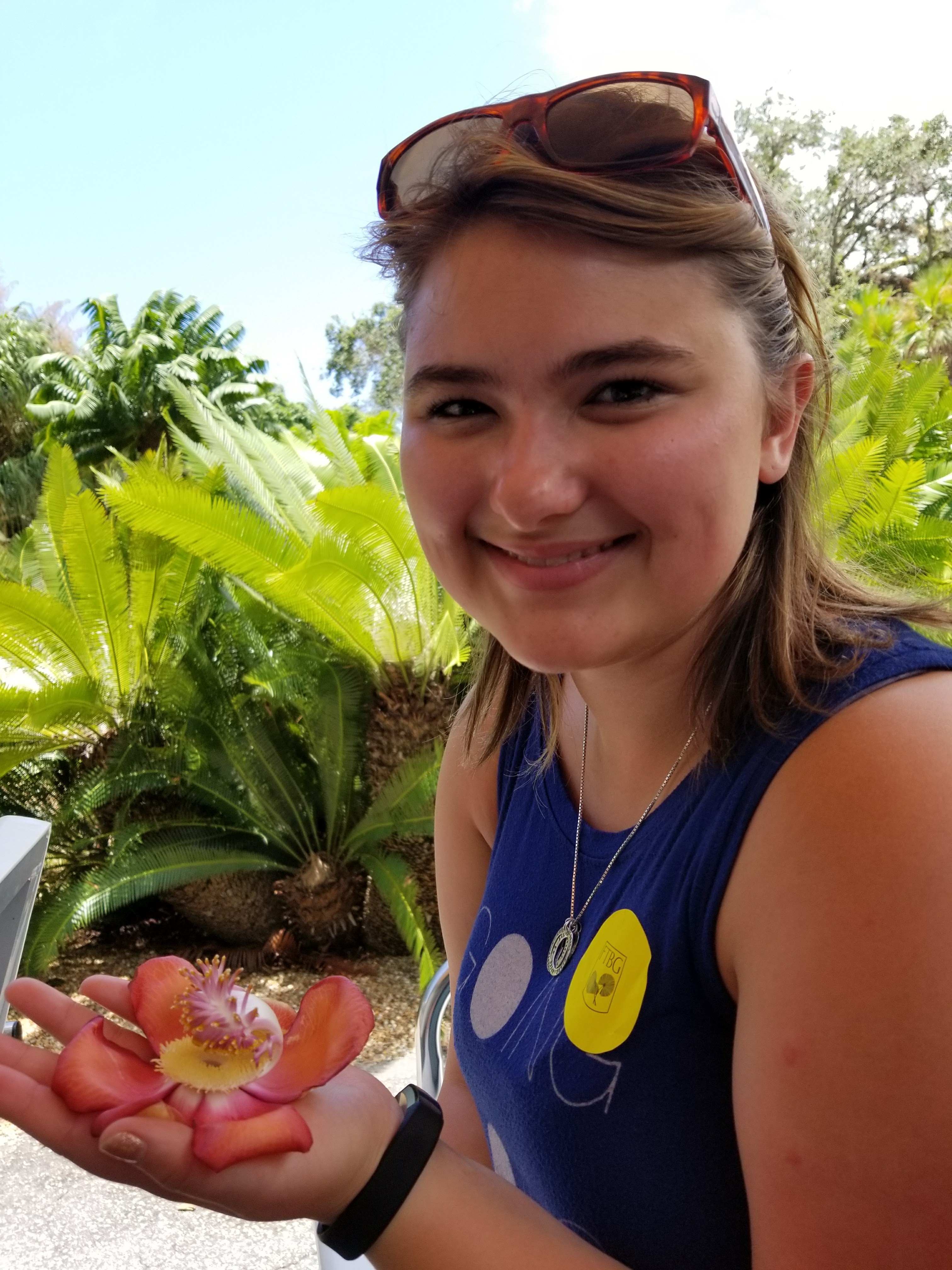
Teacher Leadership through the Albert Einstein Distinguished Educator Fellowship
by Rebecca Vieyra, 18 September 2017
Reference this post: http://aapt.org/K12/K12-Blog.cfm#18September2017
REGISTER HERE for an upcoming webinar on Monday, 25 September, at 8PM ET on this topic!
For many, the classroom is a whole universe unto itself. The field of education ultimately relies on irreplaceable one-to-one experiences between teachers, students, and their classmates. Deep learning happens at the level of the individual. This learning, however localized, happens within the wider context of a school culture, a state-based system, and a national climate.
The policies and attitudes that surround how schools operate and what teachers and students are allowed to do can be significantly beneficial or detrimental to student learning. Some teachers feel particularly called to addressing these wider issues, and this places them in a position of opportunistic leadership. The most common, and frequently the only readily available, leadership trajectory is for teachers to join the ranks of administration, but some teachers feel particularly called to supporting education in ways that remain uniquely tied to the STEM disciplines. Some schools offer STEM-specific administrative positions that can include department leadership or STEM curriculum coordination or coaching. For those teachers looking to impact state or national-level STEM education policy, however, opportunities are frequently lacking. While AAPT has a history of supporting teacher leadership through association roles in committees, topical groups, and conference activities, teachers sometimes also seek more formalized public leadership roles, or activities in the realm of public policy.
In recent years, the National Research Council held a convocation on Exploring Opportunities for STEM Teacher Leadership. A number of different programs were featured, including the following:
- Albert Einstein Distinguished Educator Fellowship
- Knowles Science Teaching Foundation Fellowship
- Math for America
- Presidential Award for Excellence in Mathematics and Science Teaching
- National Academies Teacher Advisory Council
- Fulbright Distinguished Awards in Teaching Program
K-12 teachers of physics are eligible for all of the above, including some programs supported by Math for America. If you are eager to dip your toe into formal STEM teacher leadership, don’t overlook an immediate opportunity to apply for the Albert Einstein Distinguished Educator Fellowship.This program places eligible K-12 STEM teachers at offices on Capitol Hill and in various federal agencies, typically including the National Aeronautics and Space Administration (NASA), National Science Foundation (NSF), and Department of Energy (DoE). Teachers take a leave of absence from teaching during their 11 month placement to learn about federal government and to provide guidance on critical education issues. Many teacher fellows take the year to engage in significant professional development, support the authoring of federal legislation, help manage national programs, serve on review panels for major grants, and create substantial publications. Fellows report that their view of STEM education and system-wide policy-making changes significantly over the course of their year. Many teachers return to the classroom with a complete sense of renewal as they come back armed with new knowledge and skills to share with their schools and districts, and others pursue new pathways in higher education, professional societies, or even take on employment within state or federal government.
Eligible teachers must be U.S. citizens who have taught STEM for at least 5 years. Selected applicants are across the career spectrum, with some having taught as little as 7 years, and others nearing their retirement. Teachers need only have a passion for leadership and a desire to learn more about STEM education beyond the classroom. The program is eager for additional teachers with a physics or physical science teaching background. Don’t let fear of “not being good enough” prevent you from applying! The application is fairly straight-forward, and requires a number of reflective essays, recommendation letters, and a detailed professional history. Applications are due by November 16th, 2017, before 8:00 PM Eastern.
The wide perspectives gained by those teachers help them get a strong sense of the urgency of national science education reform -- and their power to do something about it. Currently, seven Albert Einstein Distinguished Educator Fellows have supported the AAPT Physics Master Teacher Leader Task Force’s strategic report on new directions for AAPT’s programs for K-12 teachers of physics, Aspiring to Lead. Read more about two of these co-authors of the report and their experiences as Albert Einstein Fellows in last year’s blog. Curious to know about the week-to-week experiences of a fellow? Feel free to check out my own 49 entries in my weekly blog about my transition to DC as an Albert Einstein Distinguished Educator Fellow at NASA HQ in the Aeronautics Research Mission Directorate.
To learn more, join our webinar at the link at the top of this post.
Building Physics Literacy through Engagement with Text
by Dolores Gende, with a cross-posting from The Blog of Phyz by Dean Baird and Dan Burns, 8 September 2017
Reference this post: http://aapt.org/K12/K12-Blog.cfm#8September2017
REGISTER HERE for an upcoming webinar on Thursday, 13 September, at 8PM ET on this topic!
Assigned textbook readings are typical in many introductory science courses. Instructors expect students to complete the assigned readings and come to class prepared with some background knowledge that will enable an active learning environment. However, a grand majority of instructors report that students do not complete the readings as expected, perhaps due to boredom or lack of motivation, the high cognitive load of reading technical textbooks, or because of differences in teacher and student perceptions of the usefulness of reading their text. Perhaps even more importantly, few students approach text in a way that results in engaged learning. Perusall is a free platform that helps students take part in collaborative discussion of textbook readings and see the value in their preparatory work.
Perusall is a new tool that encourages students to read assignments and interact with the material in a thoughtful way. They can highlight text and figures and leave comments and questions for other students in their cohort, a bit like a "social media-based textbook." Perusall was developed by a group that includes Harvard physicist and pioneering physics education researcher, Eric Mazur. When using public domain documents, it can be used at no cost to teachers or students.
In the upcoming webinar, AAPT member Dan Burns of Los Gatos High School, CA, will share his experience using Perusall with his physics students over the last two years and explain some of the essential features for teachers wanting to use it. Here are some excerpts of what Dan had to say back in a June 2016 Blog of Phyz post about his experience using Perusall with his students (re-posted with permission):
"I have been an admirer of Harvard physics professor Eric Mazur ever since I got a copy of his book, Peer Instruction, back in the late 1990s. I found that the more I implemented his teaching strategies in my physics class, the more my students learned.
I was excited when I heard he would be speaking at the teacher outreach event in San Jose hosted by The Optical Society of America. Most of his talk was from his famous "Confessions of a Converted Lecturer" speech that I have seen before. He said for Peer Instruction to be the most successful, students need to do some preparation before coming to class. For most classes, this means reading a textbook or similar resource. The problem arises when only some students actually complete the reading assignment. Perusall was developed to solve this problem.
Students
log in to Perusall and read their textbook or any PDF reading their
teacher uploads. They can print it out or download it. As they read
online, they can highlight text and graphics that confuses them and ask
questions. They can also highlight and add comments that others might
find interesting or useful. They can link to other resources that they
think might be helpful. They are put into groups of 20. Their peers can
see their highlights and click on them to see the questions, comment, or
other information. They can respond if they want to. As Dr. Mazur
described this, I thought, what a nightmare to grade. He then revealed
that Perusall uses artificial intelligence software to automatically
grade comments. Each comment is assigned a 1, 2, or 3 depending on how
it relates to the highlighted text. The instructor can download a
spreadsheet that has the scores for each student.
Perusall
is mainly meant for use by colleges as an online textbook purchase.
This wouldn't work well for me because I recently purchased new physics
textbooks. I couldn't ask my students to buy it online. I decided to
select readings from the open source physics textbook found on Open
Stax. I uploaded my first reading for our circular motion unit. I gave
out the login information and waited to see how my students would
respond.
The response was very positive.
The comments started appear right away, and they looked thoughtful and
helpful for the most part. As we did more assignments, they got better
at pleasing the artificial intelligent agent and got higher scores.
I did not do any formal research about the effectiveness of Perusall on my students' learning or engagement. I do know that most of my students actually did read the assignments and posted hundred of applicable comments. Mazur did research of Perusall use at Harvard and found that it was effective."
Curious to learn more about Perusall? Join our webinar on September 13th, and check out Dan's follow up blog posting, Perusall Trial Update.Physics Concepts Made Alive with Direct Measurement Videos
by Dolores Gende, 22 August 2017
Reference this post: http://aapt.org/K12/K12-Blog.cfm#22August2017
REGISTER HERE for an upcoming webinar on 29 August at 8PM ET on this topic!
Direct Measurement Videos are short, high-quality videos of real physical scenarios that allow students to easily explore physical phenomena. The videos show overlays of grids, rules, and frame-counters that enable the students to make precise measurements of position and time. They were originally created by physics teacher Peter Bohacek (Henry Sibley High School in Minneapolis) along with colleague Matthew Vonk (University of Wisconsin-River Falls) with a grant from the National Science Foundation. These videos work across many devices: laptops, iPads, and Chromebooks.
Here are some ideas for implementing direct measurement videos (DMV) in your courses:
1. DMV as problem-solving exercises
A video can be presented to the students with specific directions to solve for a particular problem. The teacher can discuss the physics concepts shown in the video and have the students decide what information needs to be gathered in order to answer the question.

Example: Students can determine the rotational inertia of the solid disk and the hoop. See the Falling Disk and Falling Hoop DMVs.
2. DMV for analysis of a real-life scenario
Use direct measurement videos of scenarios that are not accessible in the classroom.
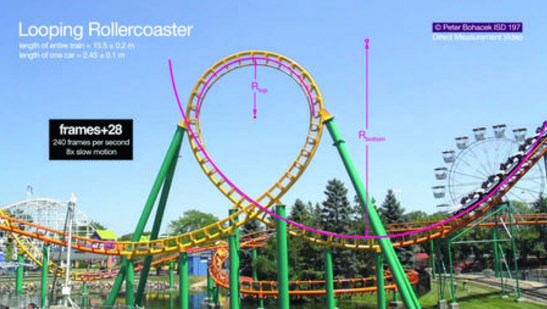
Example: Students can compare the net force at the top of the loop with the net force at the bottom of the loop with this Roller Coaster DMV.
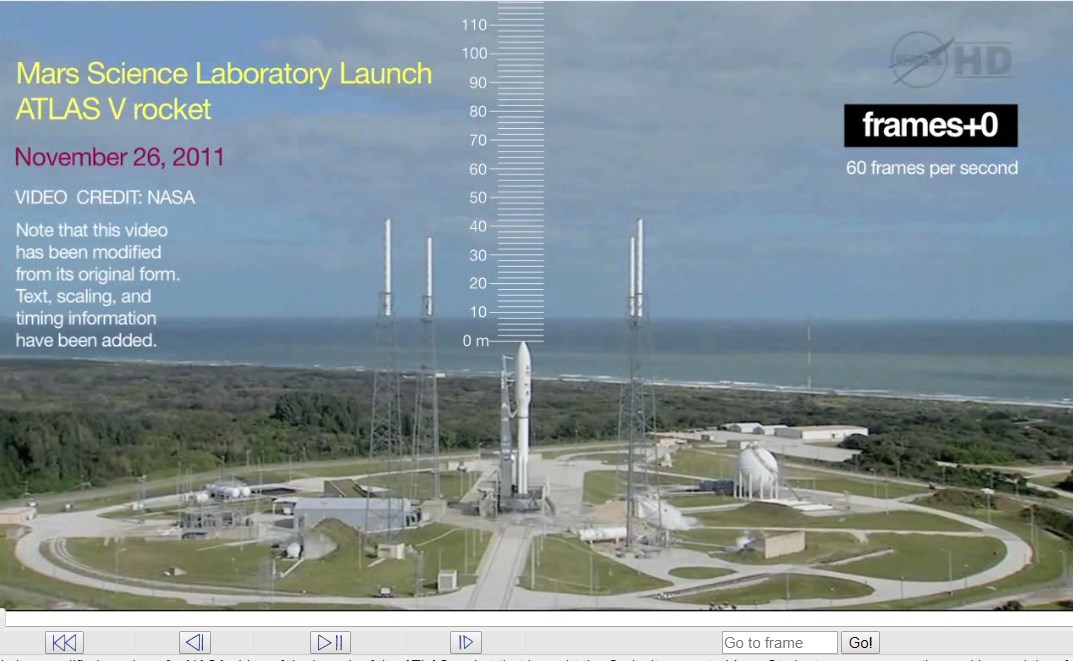
Example: Students can investigate kinematics in one dimension by determining the acceleration of the rocket in the first 100 meters with this Rocket Launch DMV.
3. DMV as a student project
Have your students select a video and create their own problems. Students can present their problems to the class. Check out this Student Video Library.
4. DMV as a physics demonstration
Teachers can present a video and ask students to show how the data in the video can be used to demonstrate a physics concept.
Example: use this Disk on Disk Collision DMV to spark classroom discussion.

Students can measure the initial angular momentum of the rotating disk before the collision and comopare it with the momentum of both disks after the collision. Students can be asked to determine whether and why angular momentum is contstant in this situation. A full library of teacher-created activities can be found in this Activities archive.
The creators of DMV have recently partnered with Vernier to offer a subscription-based platform for direct measurement videos called Pivot Interactives. This platform includes classroom-ready activities and high quality videos that allow the students to do experimentation in a wide variety of topics including mechanics, dynamics, energy, momentum, rotational motion, simple harmonic motion, waves, electricity, and magnetism.
The webinar "The Nuanced University: Letting Students Discover Simple Models and Push Them to Their Limits" presented by developers Peter Bohacek and Matt Vonk will highlight video-based experiments from their new Pivot Interactives collection. To join this webinar, register at the link above.
Enhance Student Engagement by Flipping your Classroom
by Dolores Gende, 8 June 2017
Reference this post: http://aapt.org/K12/K12-Blog.cfm#8June2017
Would you like to know what it really means to flip a physics classroom?
When physics sometimes requires teacher-directed lecture instruction, teachers can still maintain high levels of classroom engagement by providing information as homework rather than taking up class time. Flipped classroom is an instructional strategy and a type of blended learning that reverses the traditional learning environment by delivering instructional content, often online, outside of the classroom. This approach is regularly used by Jonathan Thomas-Palmer, physics teacher, flipping educator, and creator of Flipping Physics.
Harvard professor Eric Mazur played a significant role in the development of concepts influencing flipped teaching through the creation of an instructional strategy called Peer Instruction. Mazur details his approach in this video presentation. He found that his approach, which moved information transfer out of the classroom and information assimilation into the classroom, allowed him to coach students in their learning instead of lecture.
The flipped model can be integrated into the physics classroom
by having students use online resources to study the content at home and then
use face-to-face instruction for deepening into topics, allowing for more
practice time, classroom discussion, laboratory investigations and additional
hands-on activities. There are a number of helpful resources to learn both the methods and tools for designing a flipped classroom, including Flipped Learning Simplified with Jon Bergmann, The Teacher's Guide to Flipped Classrooms, A Short Overview of 12 Tools for Creating Flipped Classroom Lessons, and 54 Flipped Classroom Tools for Teachers and Students.
The webinar will focus on the mechanics of how to move your lectures from school to home, what to do in class, and how flipped learning can transform your students’ learning. Learn firsthand from a teacher who is successfully employing flipped learning and who has made plenty of mistakes, which he will help you avoid. Come away from this this webinar equipped with the tools to successfully flip your physics classroom. To aid you in your quest, Jonathan has some video homework for you. Prepare for the webinar by watching this Flipping Physics video.
Workshop for K-8 Educators: Waves and Sound from the ASA
by Justine Boecker with Rebecca Vieyra, 5 June 2017
Reference this post: http://aapt.org/K12/K12-Blog.cfm#5June2017
What: Full-day workshop for K-8 educators (including formal educators, homeschooling parents, and museum/library/extracurricular STEM specialists). From human waves to hand-made instruments, this full-day event will include resources and skills to introduce sound and waves in a relevant and interactive hands-on experience for students in younger elementary grades through upper middle grades.
All participating educators will receive an Exploring Sound Kit (a $50+ value) and will be provided lunch.
When: Sunday, 23 July. 10AM - 5:30 PM
Where: Cincinnati Marriott at RiverCenter, 10 West River Center Blvd.
Details: Workshop activities will include...
- Modeling waves with your body
- Crafting a mosquito buzzer to learn about frequency and pitch
- Building a string resonator to see standing waves
- Constructing palm pipes, panpipes, and a cuica to hear resonance
- Using digital sound meters to measure noise
- ...and more!
Are you not a K-8 educator? Help spread the word by downloading this flyer and passing it along to your contacts in elementary and middle school science education. Please contact AAPT K-12 Program Manager, Rebecca Vieyra, at rvieyra@aapt.org, for additional information.
AAPT: Where Physics Teachers Get Inspired
by Rebecca Vieyra, with Michael Hall, 3 May 2017
Reference this post: http://aapt.org/K12/K12-Blog.cfm#3May2017
Join this webinar to learn from AAPT Past President David Sokoloff about ways to increase your engagement through leadership. To learn more about why you might consider pursuing leadership within the AAPT, check out the following from AAPT's Michael Hall, Director of Membership:
When I ask our most active members why they got involved with AAPT, the answer is often “because my advisor told me to!” Many of our members joined as students and were lucky enough to have mentors who understood the value of being a part of the leading organization that serves your professional community. Others have found AAPT later in their careers, though a peer, an online search for lesson plans or assessments, or an intriguing ad for a conference. Regardless of how or when you came to join, know that there is a place for you in the spectrum of AAPT member engagement. The more that you become involved in AAPT’s programs, activities and resources, the greater the impact will be for your career, and for physics education.
Becoming an active and engaged member can not only fuel your passion to improve physics instruction and education, it is also an essential piece of career-building. Mel Sabella (AAPT Vice President) recently said, “AAPT is where I learn about new research in my field, connect to and collaborate with colleagues, and have an opportunity to talk about my work. The vast majority of my current collaborations have come from interactions at either the national AAPT conferences or at local Chicago and Illinois Section meetings.” The relationships that you build through AAPT will serve you well throughout your professional career and beyond.
Sometimes for members of a professional organization, the volunteer structure can be intimidating. It is easy to feel isolated, underqualified to contribute, or simply that you are not part of the inner circle and afraid that your ideas will not be welcome. AAPT is an open community. Our members come from all over the world. We are K-12 educators, 2-year college faculty, university faculty, program officers from funding agencies, and so much more. Whether you just joined yesterday or you have been a member for 10 years…. a first-year teacher, launching your second career or a veteran educator… AAPT and your fellow members welcome your input and involvement. Our power and effectiveness comes from the knowledge generated by the diversity of our members.
Here are a few of the many ways that you can become more engaged with your fellow physics educators at AAPT:
-
Attend an AAPT Summer or Winter Meeting: Registration is open for the Summer Meeting 2017 in Cincinnati. Whether as a presenter or an attendee, our annual meetings are a great place to get a sense of what is happening in physics education, to grow and improve your craft, and to connect with others in your profession.
-
Contribute to AAPT Journals: Publish your research and writings in one of AAPT’s two peer-reviewed journals. The Physics Teacher (TPT), published nine times per year, focuses on teaching introductory physics at all levels. Contents include tutorial papers, articles on pedagogy, current research or news in physics, articles on history and philosophy, and biographies. The American Journal of Physics (AJP), published 12 times per year, is geared to an advanced audience, primarily at the college level. Contents include novel approaches to laboratory and classroom instruction, insightful articles on topics in classical and modern physics apparatus notes, historical or cultural topics, and book reviews. Your expertise can also be used to review manuscripts submitted to either journal. Contact the Editors of the journals to express your interest in reviewing.
-
Participate in our eMentoring Program: This program is designed to connect AAPT members of the K-12 physics education community with each other. More experienced educators (mentors) are connected with more novice educators (mentees), and communicate through email, voice chat, telephone, or in some cases face-to-face. Whether a mentor or a mentee, all participants will have the opportunity to grow professionally and connect with colleagues at a regional or national level. Click here for details.
-
Serve on an Area Committee: Area Committees are the drill-down specialty areas within AAPT. They are considered the Association's intellectual resource and knowledge base, and advise the Board of Directors, the Executive Office, and the Association at-large on issues relating to their particular areas of focus. Area Committees can also develop new resources and present technical sessions at our annual meetings. Click here for a list of current Area Committees.
-
Join the Physics Education Research Topical Group (PERTG): Are you interested in research on the teaching and learning of physics? As an AAPT member, you are eligible to join PERTG. Attend the PER Conference, held in conjunction with AAPT’s Summer Meeting and get involved with the dynamic community focused on physics education research. Click here for details.
-
Host or Participate in an AAPT Webinar: AAPT webinars take place on an approximately monthly basis, and provide an opportunity to meet with leaders in physics and science education, to learn about what's new in educational resources, and to connect virtually with your colleagues from around the world. Do you have a topic that you would like to present? Contact Rebecca Vieyra.
-
Participate in Online Discussions: AAPT hosts a number of email lists across different topical areas. Engage in discussion from AAPT members around the world on the topics that matter to you. Click here to list of discussion areas.
-
Participate in a Contest or Competition: Help cultivate the next generation of physicists by working with the Physics Bowl, US Physics Team, or serving as a judge in the High School Physics Photo Contest.
-
Help Review Physics Programs: Undergraduate physics programs benefit from receiving feedback on the quality of the program. In order to assist physics programs that are planning a review, AAPT maintains a list of reviewers whose name will be supplied to institutions submitting requests. Click here for more information.
-
Become a Physics Teaching Resource Agent (PTRA): Our PTRA program is the leading in-service physics professional development program. PTRA provides professional development on physics content, teaching techniques based on research in physics education, and integration of technology into curriculum for middle and high school teachers. The program maintains a nationwide cadre of more than 150 accomplished high school teacher-leaders who are trained and continually involved in professional development. PTRAs are certified by AAPT to lead workshops throughout the country. Click here for more information.
-
If it Doesn’t Exist Yet, Help us Build it: Haven’t found what you are looking for yet? What is your impactful, difference-making idea? Talk to us – if it is a project or potential resource that could help improve physics education, we will do what we can to help, whether it’s working with you to secure funding, helping with infrastructure, or finding experts to work with from among our qualified members. Contact us!
We look forward to continuing to work with you!
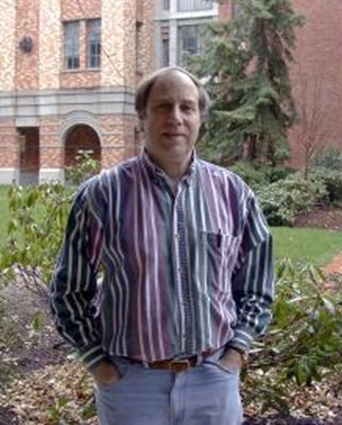




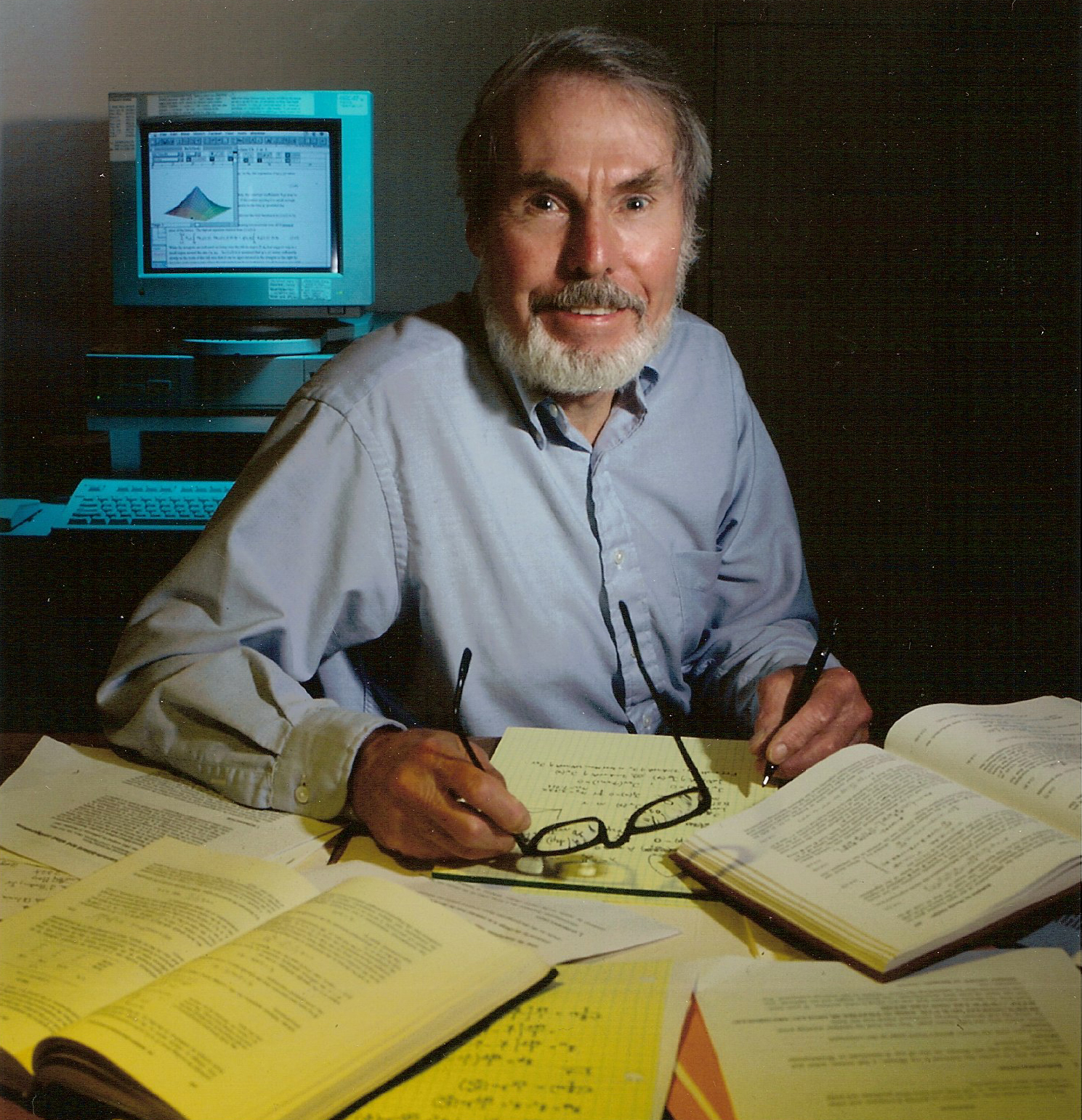
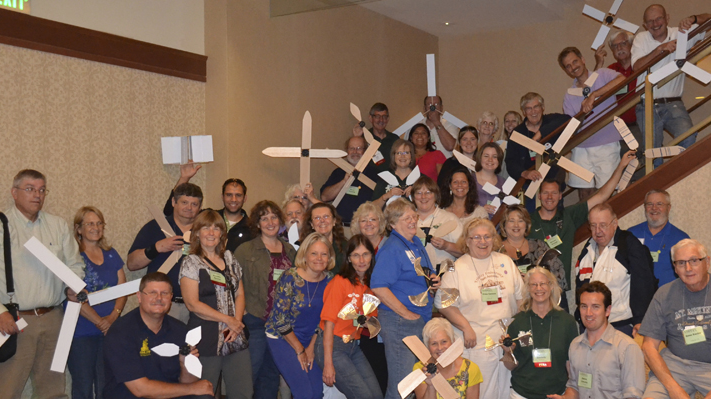
Physics Teachers Make a Difference
by Dolores Gende, 1 May 2017
Reference this post: http://aapt.org/K12/K12-Blog.cfm#1May2017
The challenging and
worthy undertaking of schools, colleges and universities is preparing young
people to take part in a world that is becoming at once smaller and more
complex. They attempt to help students take part with both an awareness of inherent responsibilities as
well as the confidence to come to grips with constantly changing local and
global realities. According to the U. S. Department of Commerce, ‘science,
technology, engineering and mathematics workers play a key role in the sustained
growth and stability of the U. S. economy, and are a critical component to
helping the U.S. win the future. STEM education creates critical thinkers,
increases science literacy and enables the next generation of innovators.’
More often than not, as we are engaged in the day to day of our profession, we lose sight of the larger picture that entails the long-term positive consequences that ultimately result from those efforts. The larger picture entails long-term positive consequences that ultimately result from our teaching efforts. We physics teachers have the opportunity to teach things that are meaningful and relevant to our students’ lives and interests. We help students discover their full potential by leading them, no matter the challenges, to the next step in their understanding and appreciation. High school and university faculty that make their classrooms centers of creativity have a powerful influence on students selecting STEM careers and are especially influential in the decision of women (much more so than for men) to pursue physics degrees, a trend affirmed in research by the AIP Statistical Research Center.
The lasting impact a STEM teacher can have on a student’s life is significant. Consider the following findings from the STEM jobs 2017 update:
- In 2015, there were 9.0 million STEM workers in the United States. About 6.1 percent of all workers are in STEM occupations, up from 5.5 percent just five years earlier.
- Employment in STEM occupations grew much faster than employment in non-STEM occupations over the last decade (24.4 percent versus 4.0 percent, respectively), and STEM occupations are projected to grow by 8.9 percent from 2014 to 2024, compared to 6.4 percent growth for non- STEM occupations.
- STEM workers command higher wages, earning 29 percent more than their non-STEM counterparts in 2015. This pay premium has increased since our previous report, which found a STEM wage advantage of 26 percent in 2010.
- Nearly three-quarters of STEM workers have at least a college degree, compared to just over one-third of non-STEM workers.
- STEM degree holders enjoy higher earnings, regardless of whether they work in STEM or non- STEM occupations. A STEM degree holder can expect an earnings premium of 12 percent over non-STEM degree holders, holding all other factors constant.
Of course, our
responsibilities include planning, leading instruction, assessing student
outcomes, grading and classroom management. But knowing that we matter to our students in many significant ways--though often academic00are always the result of a meaningful teaching/mentoring connection. Those relationships make differences that we may never know and our students certainly could not predict. It is through this powerful student-teacher interaction that most teachers draw immense satisfaction.
Good teachers would probably be successfully in many, and often more lucrative, endeavors. But, for most of us, the satisfaction we derive from being of service compensates with great personal rewards.
On behalf of the AAPT, we take a moment to recognize this Teacher Appreciation Week by giving a special shout out to each of you, our readers and all members of AAPT. Thank you for all you do and the important differences you each make!
On behalf of the AAPT, we take a moment to recognize this Teacher Appreciation Week by giving a special shout out to each of you, our readers and all members of AAPT. This week only, AAPT members that register for the 2017 AAPT Summer Meeting in Cincinnati will receive $50 off the full meeting registration price using voucher code 50OFFSM17, plus be entered to win a $50 gift card. If you're not a member, join AAPT this week and you'll be entered to win a $50 AMEX gift card using the code TAW17. Thank you for all you do and the important differences you each make!
STEM Classroom to Career: Opportunities to Close the Gap
by Rebecca Vieyra, with Michael Conn, 13 April 2017
Reference this post: http://aapt.org/K12/K12-Blog.cfm#13April2017
REGISTER HERE for an AAPT-hosted webinar on Thursday, 20 April, at 8PM ET, to learn what we currently know about persistence of students as they advance from the K-12 STEM classroom to a STEM career. As teachers, we frequently wonder about the impact of our teaching and the experiences we provide to students on their selection of careers in STEM.
During this webinar, join Michael Conn of the Student Research Foundation (SRF) to look at findings from a nationwide survey of high school students about their aspirations toward STEM career and educational paths. Learn as well about ways to encourage students to pursue STEM in general, and physics in particular. Data from student respondents, and from related research, suggests that equity efforts can strategically increase the STEM workforce and help students realize their full potential.
Interestingly, almost equal percentages of female and male high school students, and of historically under- and over-represented groups (in the STEM workforce), said that their current STEm studies will be important to their future careers. However, noteworthy differences emerge when we probe more deeply, suggesting points of potential intervention.
Other patterns emerge as we look specifically at high school physics-taking, and student persistence in physics, astronomy, and other physical science careers through undergraduate, graduate, and post-doctoral experiences. To supplement the research on the aspiration of K-12 students, Senior researcher, Patrick Mulvey, of the American Institute of Physics' Statistical Research Center will also provide information about key findings specific to physics.
Collectively, the Student Research Foundation collects data to further understand student career pathways in STEM. Michael Conn shares that this work is highly collaborative: "Destination Imagination, National Alliance for Partnerships in Equity, National Girls Collaborative, and the Educational Reserach Center of America formed the Research Consortium on Science, Technology, Engineering, and Math (STEM) Career Pathways to help spark a dialogue among students, parents, and educators about students' career paths. The Student Research Foundation serves as the overall facilitator of the research efforts, and is very excited to announce that the American Association of Physics Teachers has joined the Consortium for the next round of high-school surveys (back-to-school season 2017 onward)!"
Learn more about this research and how you can take part in helping to open the doors to STEM careers for your students by joining the conversation in this upcoming webinar.
Too Much Green this St. Patrick's Day? Trying Looking through "Rose"(Red)-Colored Glasses
by Rebecca Vieyra, 16 March 2017
Reference this post: http://aapt.org/K12/K12-Blog.cfm#16March2017
The importance of light and color is thread across all of the science disciplines, from chemical mineralogy to biological optics to transmission, absorption, and reflection of light, as it is often studied in physics. Newton and Hooke were both key players in developing a color theory of light, a topic that between them resulted in significant public controversy. The pinnacle of Newton's experiments, however, were than sunlight is made of many colors of light, which can be separated by a prism. Placing a filter in the path of light doesn't "apply color to it," but rather serves as something of a "sieve" that only certain colors can go through (literally, serving as a "filter.")
Thanks to an idea I borrowed from AAPT member Diane Riendeau in my own teaching, I regularly used Jell-O in my teaching about light. One of the most effective activities of Diane's that I used was to project three dots of primary colors of light (via an LCD projector and a PPT slide) onto a screen. I asked students to predict which colored dots would be visible through the gelatin, and to explain why, in detail. There was always a notable "whoah...!" from the class as the lights were turned out and the gelatin held up to students' eyes. To the delight of my students, the Cherry Jell-O only permitted the red spot of light to be seen, but not the blue or St. Patrick's green. This was not what they had predicted! Curious to know why? Try observing green light through a red filter using the PhET Color Vision simulation.
Curious to learn more about this lab idea? Check out Jelly Filter Science from the AAPT's Optics Collection, created in coordination with the Optical Society of America.
On St. Patrick's Day, you might try puzzling your students with yet another question that has implications for astrophysics and evolutionary biology: Why are most of Earth's plants green? (Why is chlorophyll green?) Start that conversation by learning more about our sun, a "white" star. To do so, AAPT members can check out the recently-released Star Spectra Science by logging in with their membership ID at the Lesson Page.
Happy St. Patrick's Day!

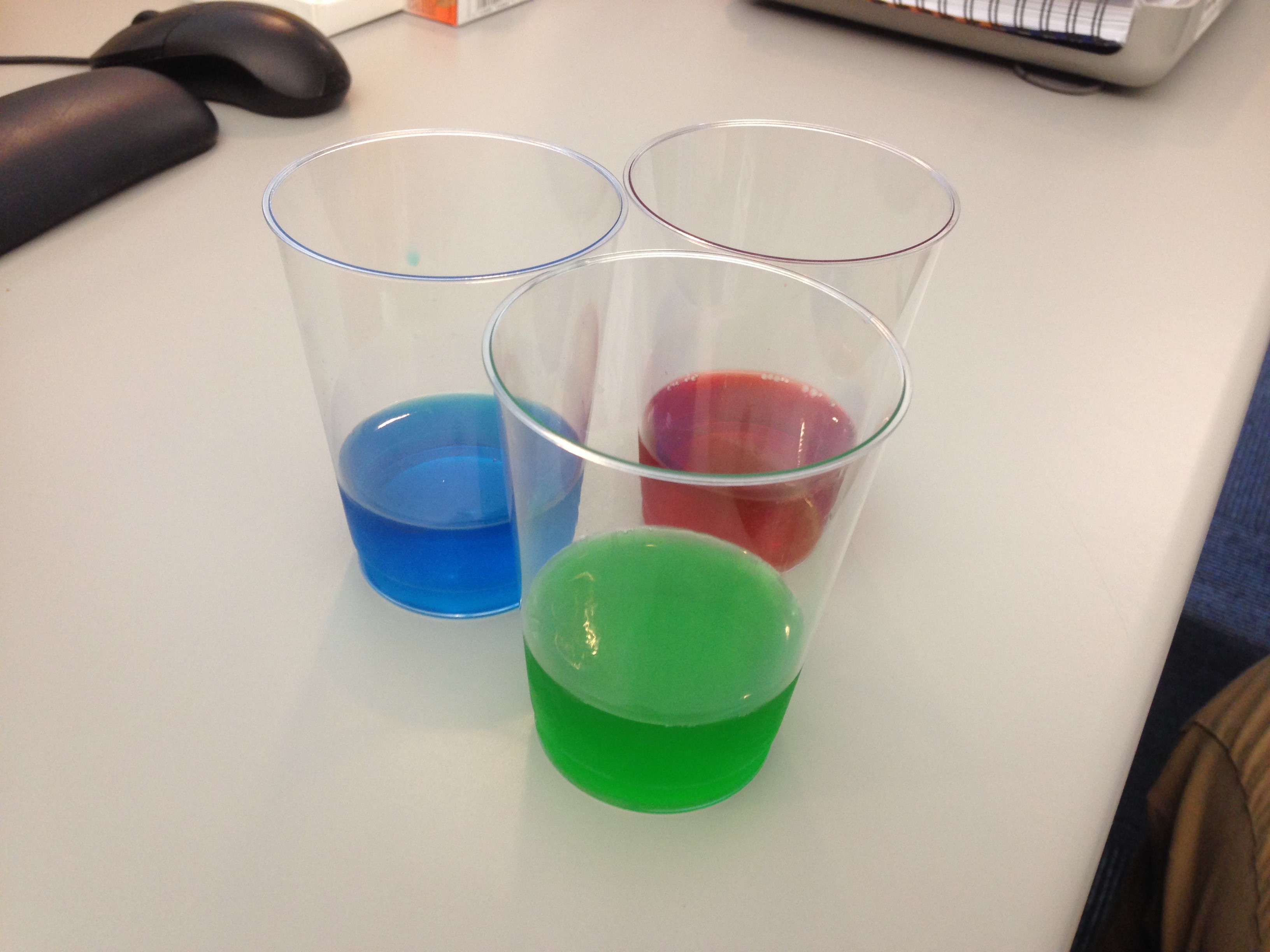

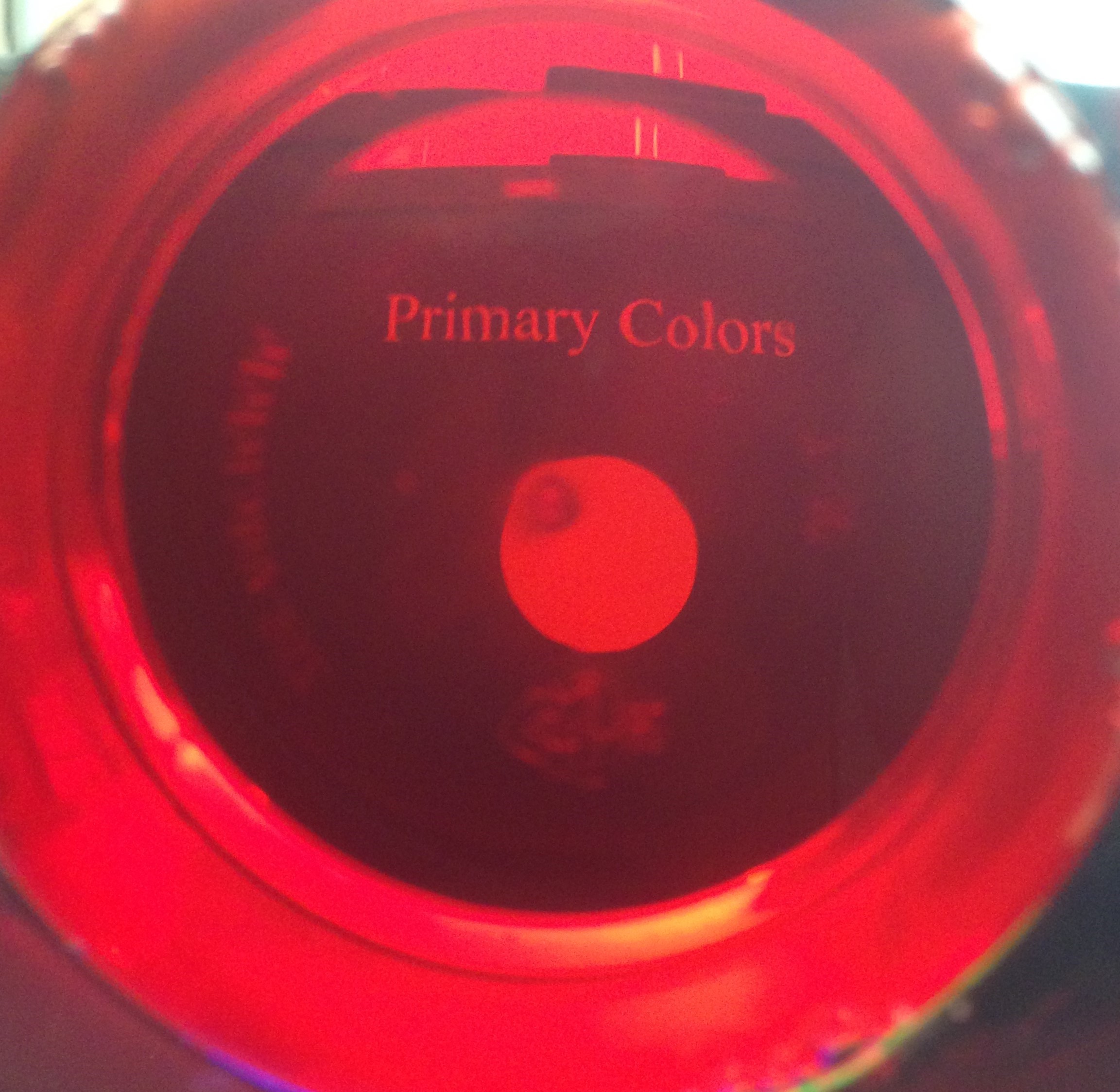

PAEMST: the Presidential Award for Excellence in Math and Science Teaching
by Rebecca Vieyra, 9 March 2017
Reference this post: http://aapt.org/K12/K12-Blog.cfm#9March2017
During this webinar, learn about PAEMST as an opportunity for teacher professional development and leadership. The award process includes the creation of a classroom video recording and a portfolio featuring the teachers' classroom, community, and wider educational leadership. Dozens of AAPT members have been recognized for their excellence through this program. Join this virtual gathering to learn more from the perspective of a number of AAPT awardees.
Physics teacher Juan Botella of Monona, WI, was named a recipient of PAEMST on 22 August 2016, and was one of AAPT's seven prestigious members to have received it last year. As is the case for many teachers, the PAEMST application process is often a turning point for teachers in their instructional practice, and teachers find that they build an incredible professional network when they have the opportunity to meet their fellow awardees.
Although PAEMST recognizes excellence, most PAEMST awardees will readily admit that they are not perfect! The application process itself is a step that a good teacher can take toward becoming excellent - apply for this award isn't just something that good for personal growth, but for the improvement of physics education for all the teacher's students.
If you are not a teacher, but know one, please consider nominating him or her for this award. The nomination process takes only a few minutes, but the impact of winning this award can last a lifetime. During the webinar, any PAEMST applicants, finalists, and/or awardees who are in attendance are encouraged to share photographs and personal stories about their journeys.
Self-nominations are strongly encouraged. If you are a teacher or know someone who might be interested in applying, submit a nomination by April 1. Applications are due on May 1.
REGISTER FOR THIS WEBINAR
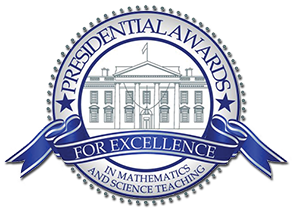
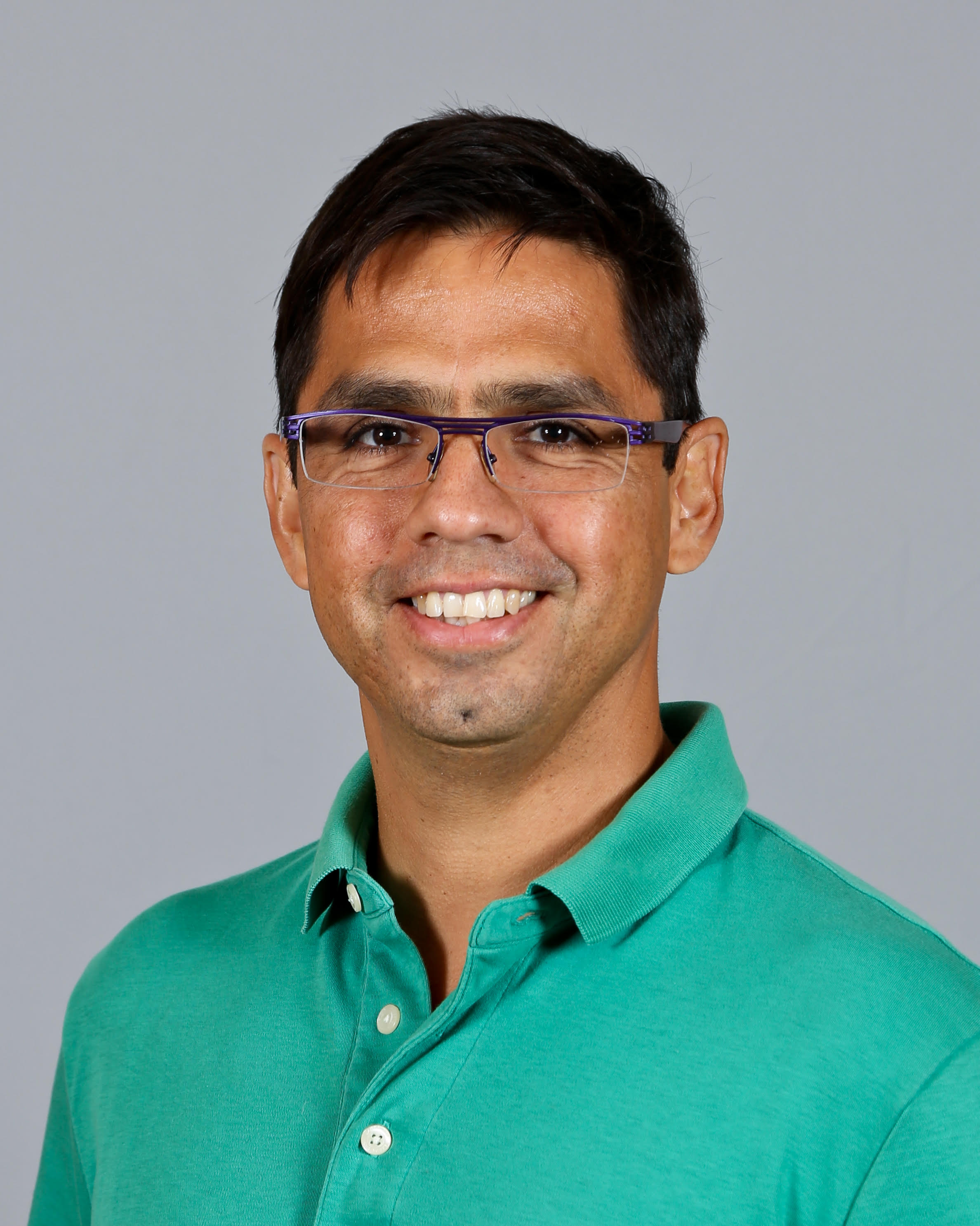
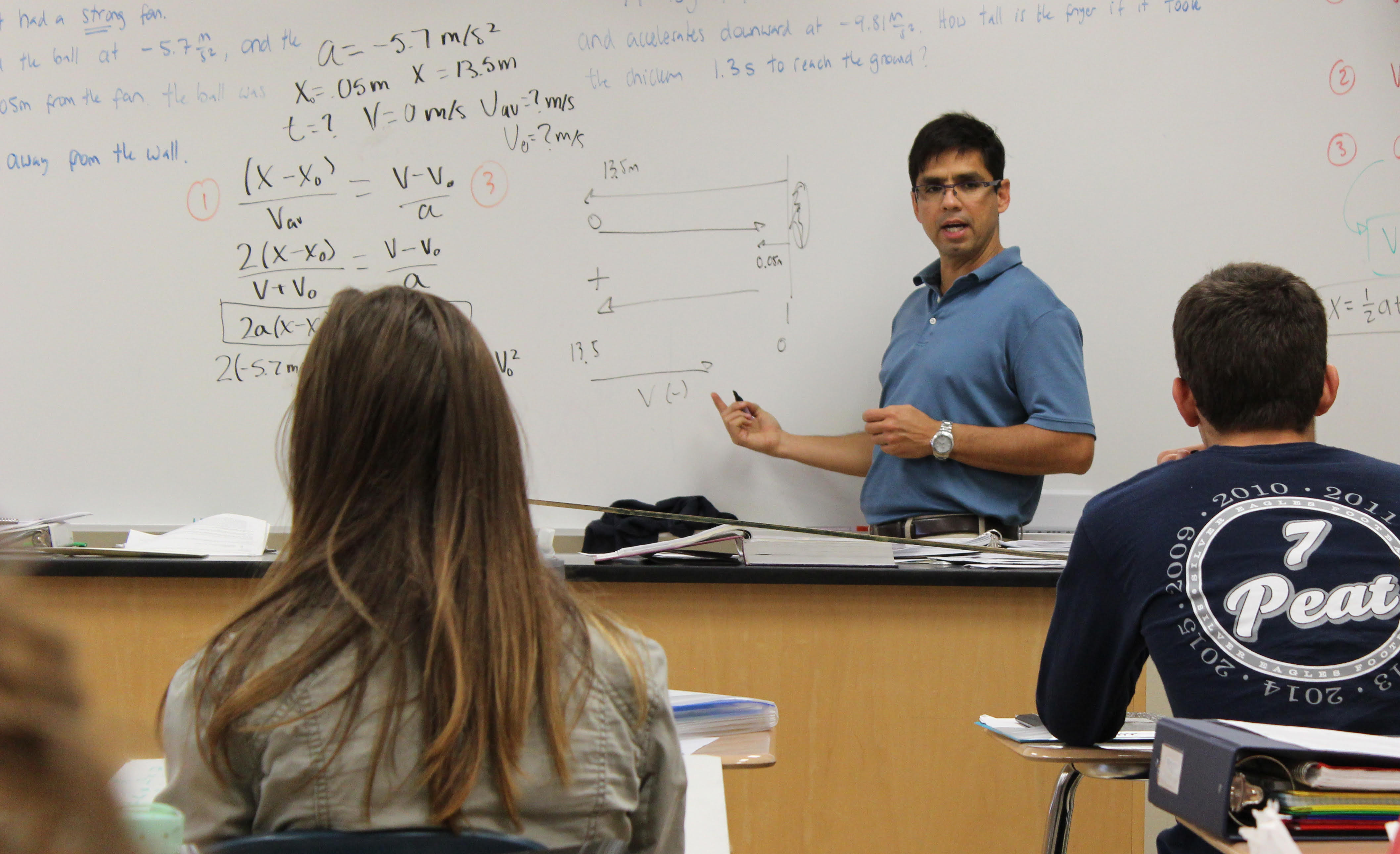


Celebrate International Women's Day by Teaching About Great Female Scientists
by Rebecca Vieyra, 8 March 2017
Reference this post: http://aapt.org/K12/K12-Blog.cfm#8March2017
If you haven't yet had the opportunity this year to explicitly address equity issues in STEM professions with your students, this is the month to do it! Yesterday, a YouTube video about Rosalind Franklin came across my Facebook feed that I found to be quite touching. It features images of Rosalind as a child and a young girl with captions describing how she was discouraged from pursuing her science interests (and encouraged to consider something more "womanly").
Has the climate for women in science changed from then to now? Plenty of data are available on the numbers of women in physics and astronomy, and can be found through the American Institute of Physics Statistical Research Center. However, numbers don't always tell the full story. Considering that my own encounters with many scientists suggest that Rosalind Franklin is generally unrecognized or regarded merely as a footnote to the work of Watson and Crick, there is still lots of work to be done. A 2011 article by Gregory Braun, Dennis Tierney, and Heidrun Schmitzer in The Physics Teacher helped to draw international attention to Franklin's work by sharing multiple ideas for helping introductory physics students to model her work and the discovery of the structure of DNA through her Photo 51. Using only a pen spring, a laser, and a protractor, students can draw conclusions about DNA's structure from a replica Photo 51.
Inspired by the article, a DNA Digi Kit was assembled by AAPT digital content specialist Caroline Hall. In this Digi Kit, you will find both teacher and student guides for performing the laboratory activities described in the Braun, Tierney, and Heidrun article, in addition to a wealth of digital models, simulations, videos, animations, and content background for understanding both the physics and the biology of DNA X-ray diffraction. The kit also contains supports for teaching about the historical context of Franklin's discovery, even including a modern TedTalk featuring Watson as he describes his work with Crick and Franklin. (Find more Digi Kits at the AAPT K-12 Portal).
Looking for more resources to teach about women in physics? Check out the AAPT's HERStories video project, which includes four lesson plans appropriate for introductory science courses. AAPT members can check out an archived webinar on the HERStories project. The American Institute of Physics' historical library also provides online Teaching Guides on Women and Minorities.
Are you a woman in physics? Various supports are available through AAPT and its partners. Check out the new AAPT eAlliances peer mentoring program available for women physicists and astronomers. AAPT high school physics teacher members can always find help from the AAPT eMentoring program.
Teaching About the 2017 Eclipse: Research-Based Resources from NASA HEC
by Rebecca Vieyra, 28 February 2017
Reference this post: http://aapt.org/K12/K12-Blog.cfm#28February2017
Are you prepared for the Great American Eclipse? Whether or not you fall along the path of the eclipse, take advantage of this exciting cosmological event as an impetus to teach your students about fundamental astrophysics. Despite some students' great familiarity with the Sun and Moon in the sky, students often struggle to make sense of their motion and interactions.
During our March webinar, hear from the AAPT/Temple University team that has been working with NASA as a part of the Heliophysics Education Consortium to develop research-based teaching resources for eclipse education. The team participants will share some initial research findings about what their own college students know and struggle to understand, as well as describe many of the hands-on activities, tutorials, concept questions, and homework activities they have developed for this project. All of the activities developed build upon research-based teaching methods from physics and astronomy education research, including Peer Instruction, Physics by Inquiry, and Lecture Tutorials for Introductory Astronomy. Many of these resources and methods can be easily adapted to high school courses as well, and can be used to supplement many well-known digital resources for simulating eclipses, such as the UNL Eclipse Shadow Simulator and this Eclipse Interactive.
At the webinar, we also encourage participants to share some of their own resources and tips for teaching about eclipses in the context of astronomy, physics, or Earth and space science courses. Please join us!
REGISTER FOR THIS WEBINAR
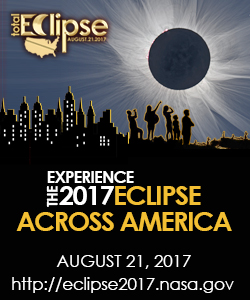

Physics First Modeling: A 3-Week Computational Modeling Development Opportunity
by Rebecca Vieyra, 1 February 2017
Reference this post: http://aapt.org/K12/K12-Blog.cfm#24January2016Are you a physics teacher who uses Modeling Instruction? Join the American Association of Physics Teachers (AAPT), the American Modeling Teachers Association (AMTA), STEMteachersNYC, and Bootstrap's Pyret team for a 3-week development project at Teacher's College, Columbia, in New York City from July 31 - August 18, 2017, to integrate computational modeling using Bootstrap's Pyret language in Modeling Physics First. For this project, a total of 21 teachers from around the nation and the state of New York will be joined by the 9 teachers who participated in a preliminary development workshop last year, funded by 100Kin10.
Last year's participants used the capabilities of Pyret to help students more deeply develop conceptual models about mechanics topics, and included the creation of modules intended to be used in the Modeling cycle as an additional representation for student thinking. For example, sample activities include using computational definitions of elements of state to more precisely define physical systems, and helping students to write, modify, and debug programs that demonstrate accurate or inaccurate motions of objects in frictionless environments. In this preliminary workshop, participants developed computational modeling resources to support students' understandings of (1) qualitative energy, (2) constant velocity, (3) uniform acceleration, (4) inertia and force pairs, and (5) Newton's 2nd law. Development this summer will include both revision and refinement of existing modules as well as development of additional modules.
These efforts are now supported by both 100Kin10 and the National Science Foundation, and the preliminary efforts were recognized during CS Ed Week by the White House in December 2016.
We are seeking teachers from around the nation who have the following characteristics:
- Experience teaching physics (8th/9th grade Physics First is preferred)
- Completed at least one Modeling Instruction in Physics workshop
- Implemented Modeling Instruction successfully in their physics classrooms
- Interest in integrating computer science and physics (No prior computer science experience is necessary.)
- Evidence of being an innovative teacher in their instructional approach, curriculum development, and/or educational technology
- $3,000 stipend for 3-week workshop
- $500 stipend for academic year involvement
- Travel, lodging, and meals (for non-local participants)
Learn More About this Project. See this blog entry from last September that describes both the outcomes of the preliminary 100Kin10-funded workshop last summer as well as the award of the NSF grant.
Apply for This Opportunity: COMPLETE THIS FORM
Applications will be accepted on a rolling basis. For further information or to ask questions about this opportunity, please contact AAPT K-12 Program Manager Rebecca Vieyra at rvieyra@aapt.org.
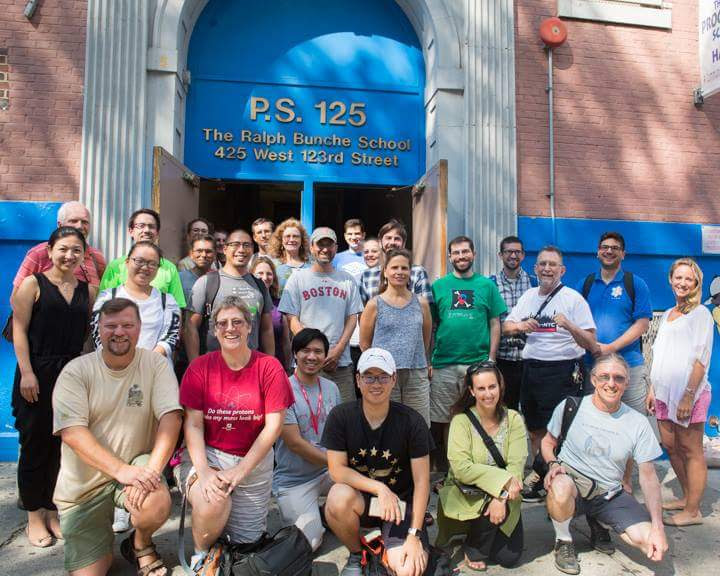
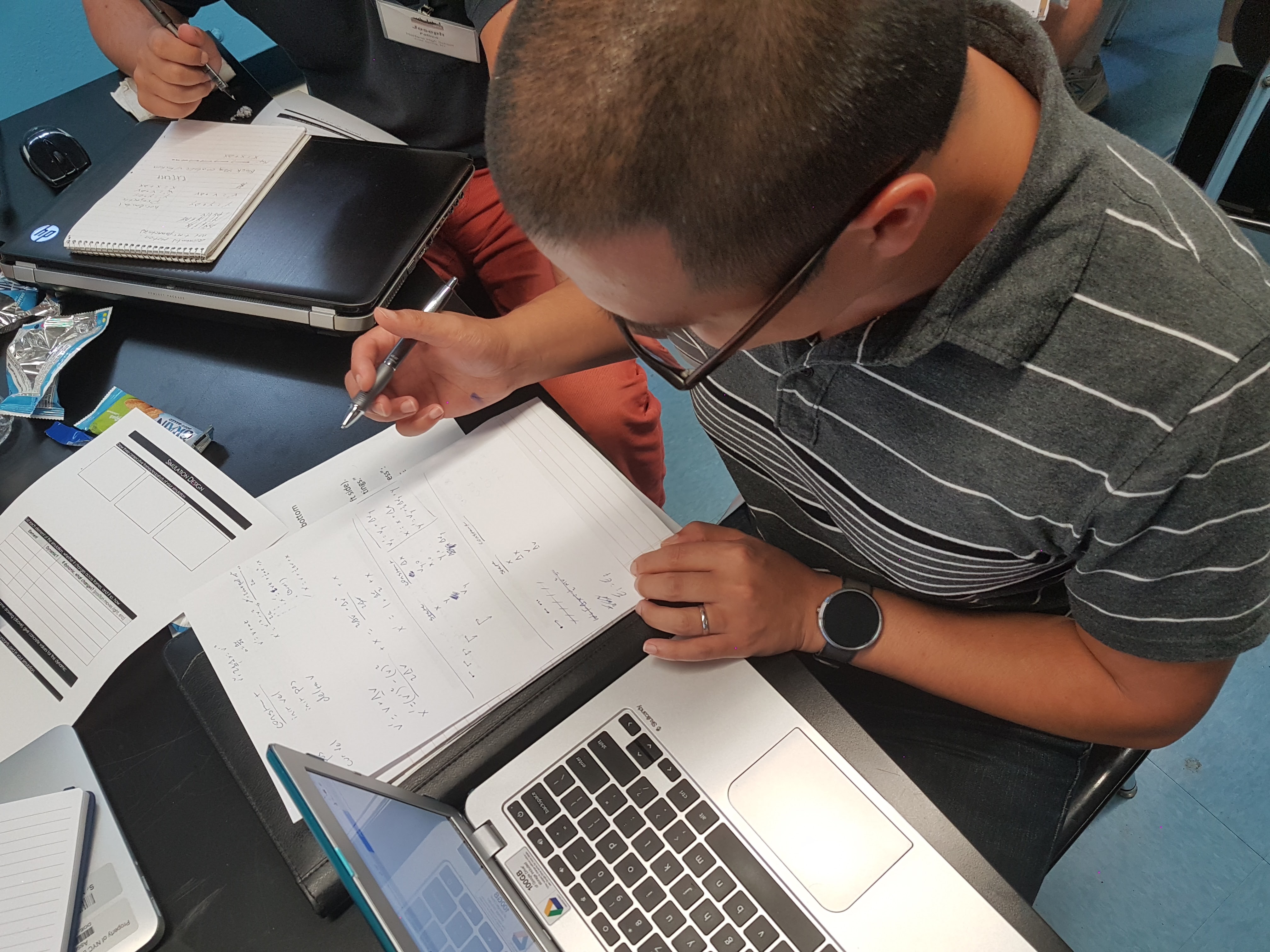

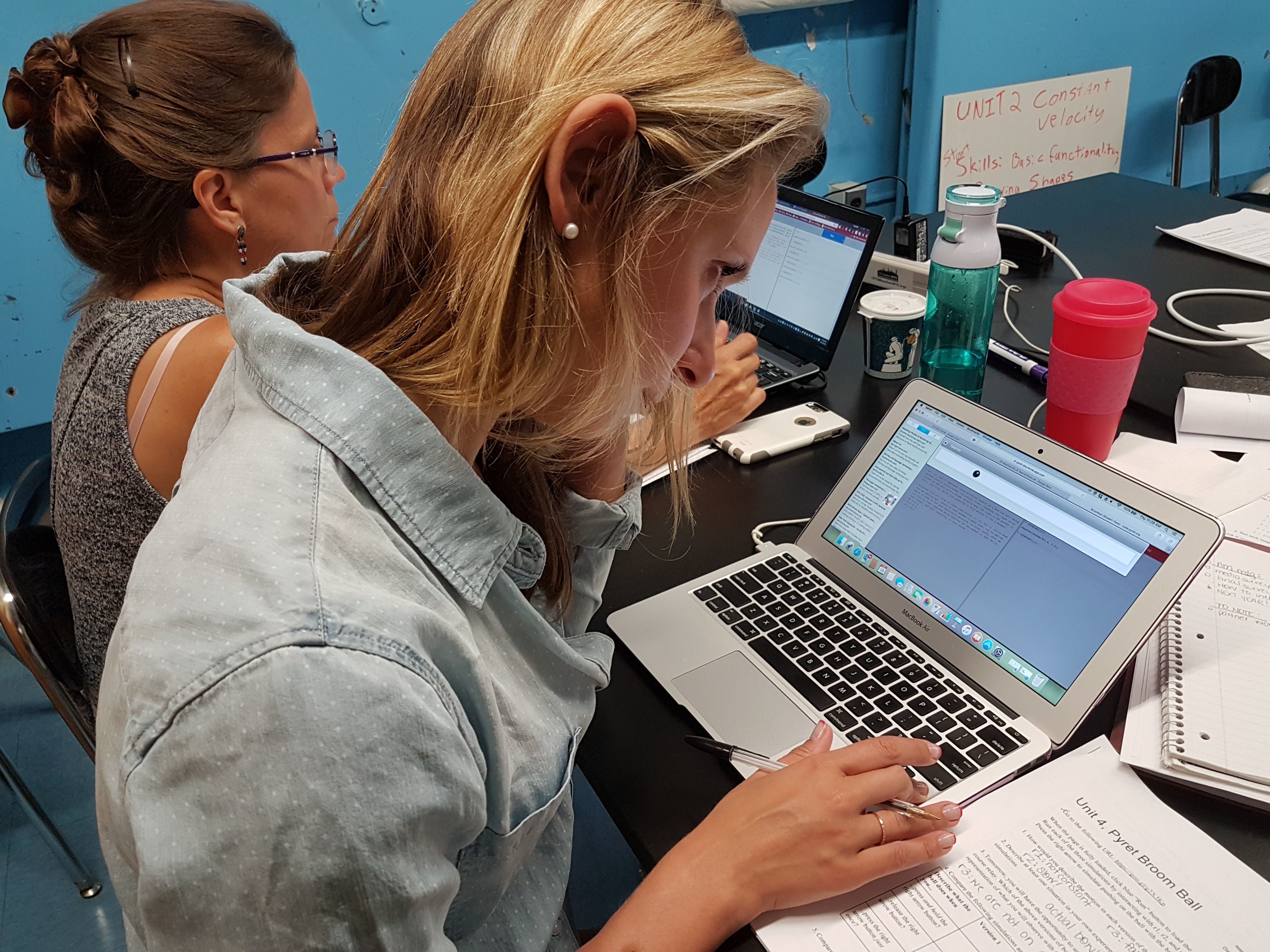
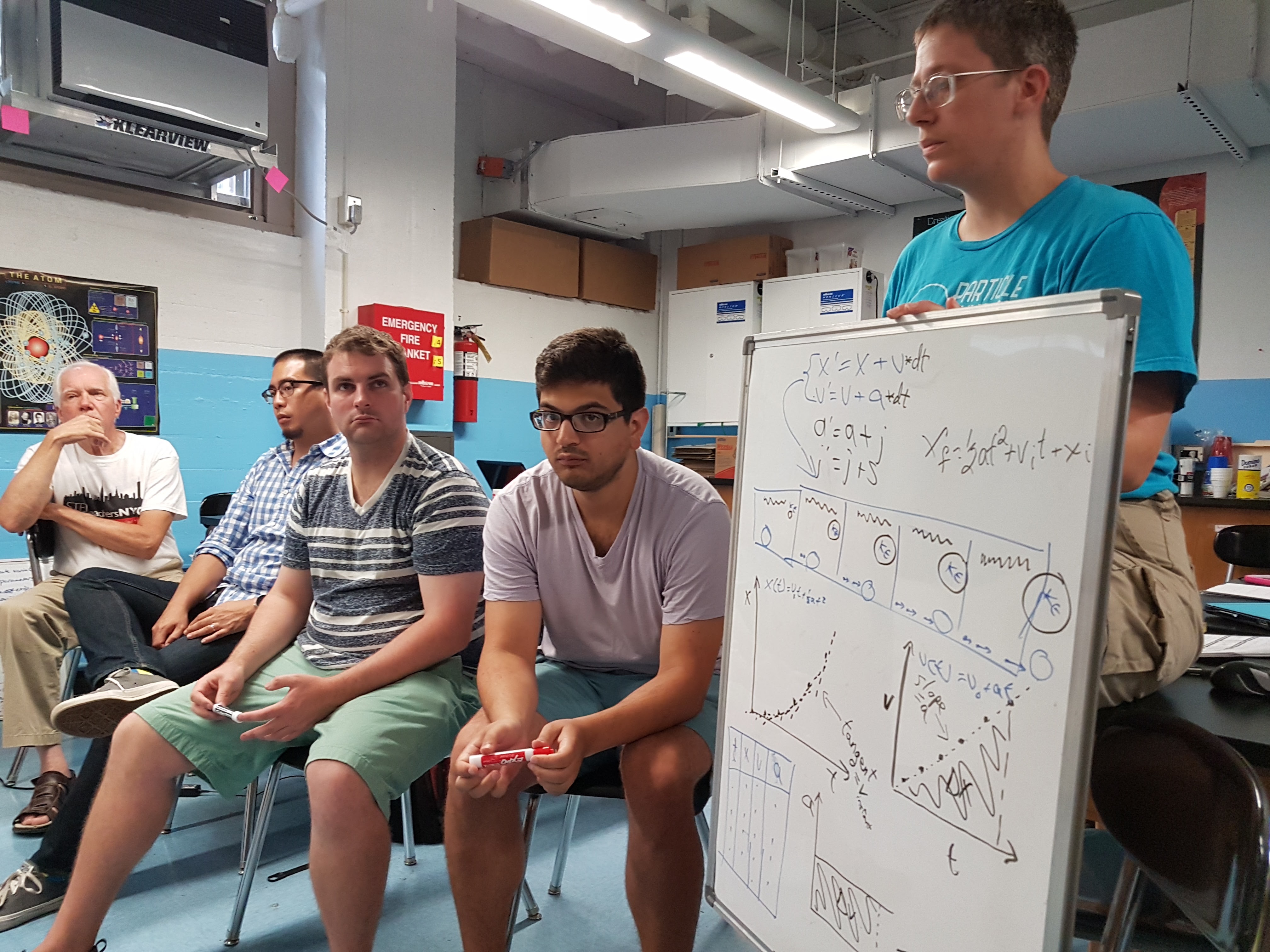
AAPT Seeks Undergraduate Intern for K-12 Physics Education
by Rebecca Vieyra, 20 December 2016
Reference this post: http://aapt.org/K12/K12-Blog.cfm#20December2016
The American Association of Physics Teachers (AAPT) seeks an undergraduate physics or physics education Society of Physics Students intern to help design and revise resources for AAPT's K-12 teacher professional development programs, including face-to-face and digital resources for the summer of 2017.
Program dates run from May 30 - August 4, and includes:
- Travel to and from Washington, DC
- On-site housing in Washington, DC
- Stipend: $5,000
Summer interns get to experience physics education from a 1,000-foot height at the federal level, while also interacting directly with teachers and students. Special activities are also coordinated between all Society of Physics interns placed at various societies and on Capitol Hill to learn about each others' work. Last year's intern worked closely with AAPT's K-12 program to do the following:
- Visit the Department of Education to provide guidance on the implementation of ESSA's provisions for STEM teacher leadership
- Do outreach to the general public at the National Astronomy Night on the Mall
- Support Physics First teachers who are in the process of integrating computational modeling into their courses in New York, NY
- Develop a suite of 9 lesson plans in coordination with the Optical Society of America
- Present lessons to K-5 educators as part of the Maryland Master Teacher program
- Attend the AAPT summer meeting in Sacramento, CA
- Design and co-teach a workshop to K-8 teachers at the AAPT summer meeting
- Work with high school teachers at the High School Teachers Lounge at the AAPT summer meeting
Curious to know more? Reach out to Rebecca Vieyra at rvieyra@aapt.org. Learn more about last year's summer intern, physics undergraduate Simon Wright by reading his biography and blog.
APPLY HERE by January 15th.
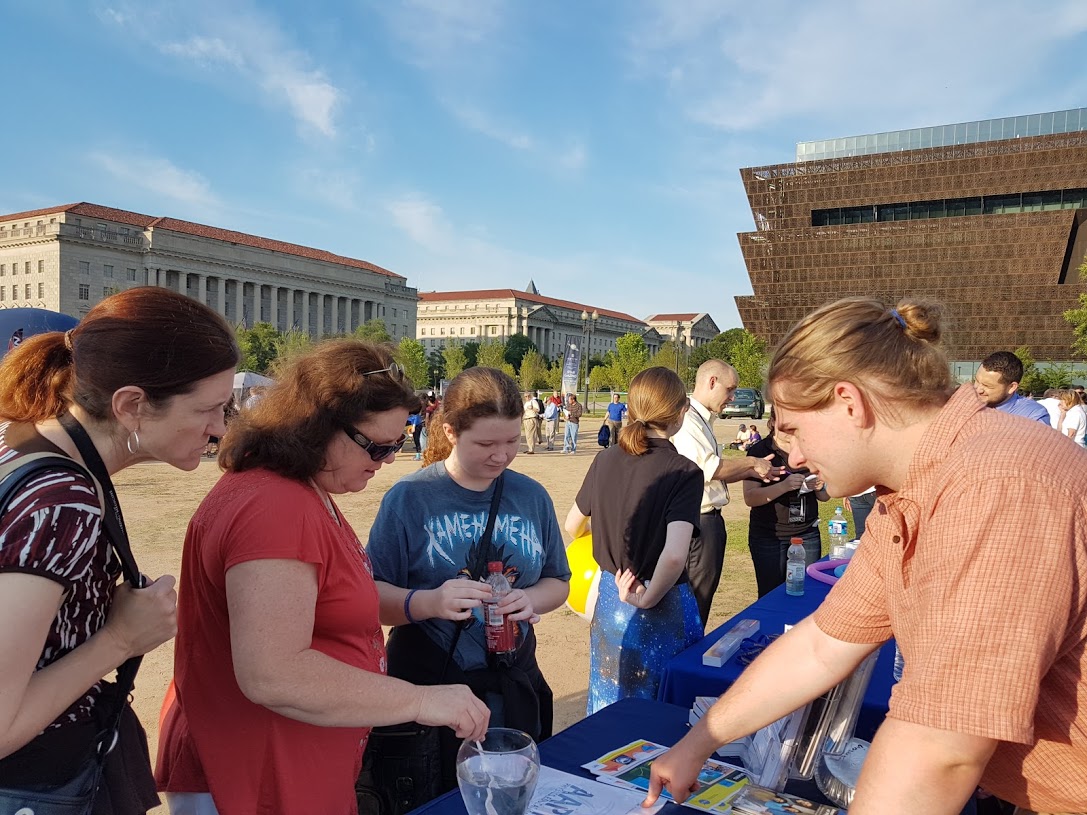
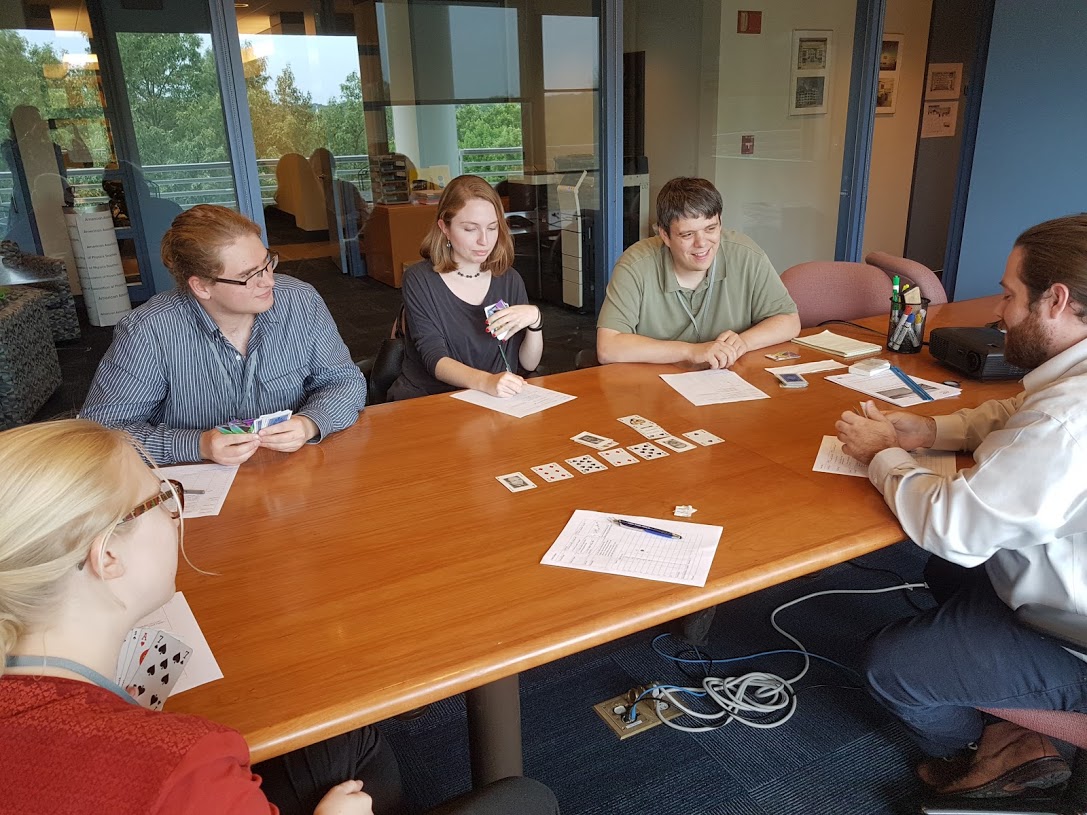
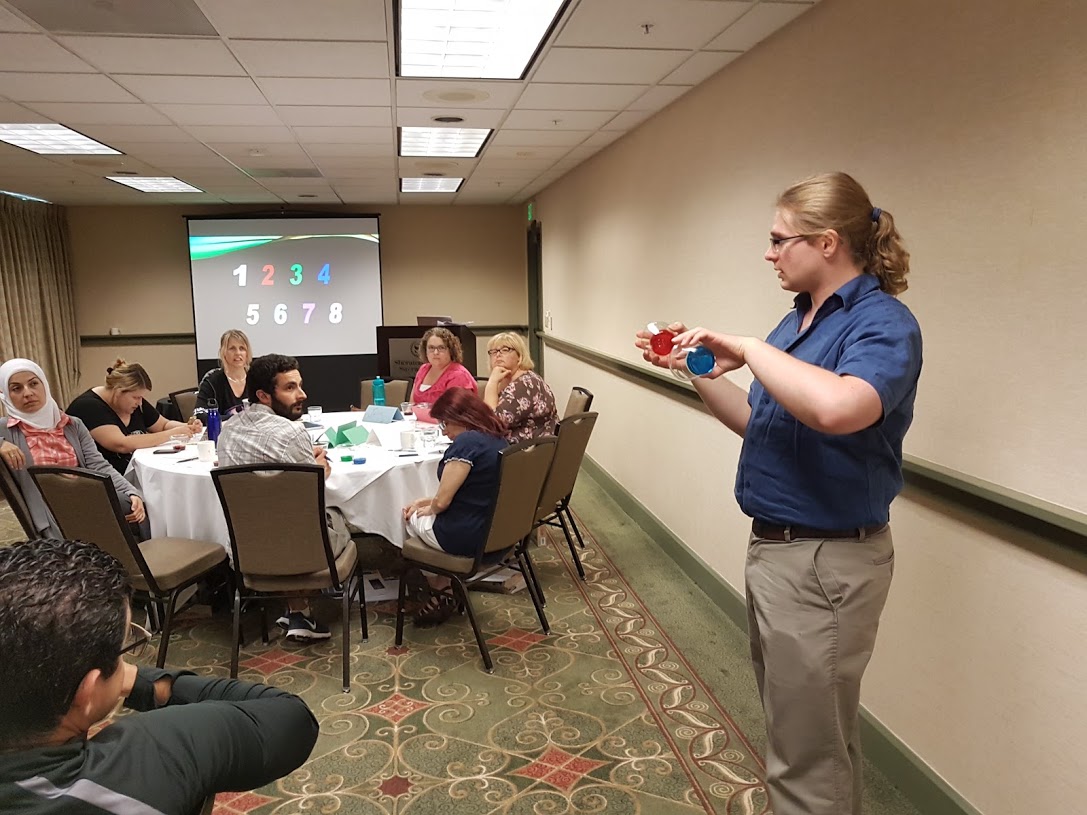
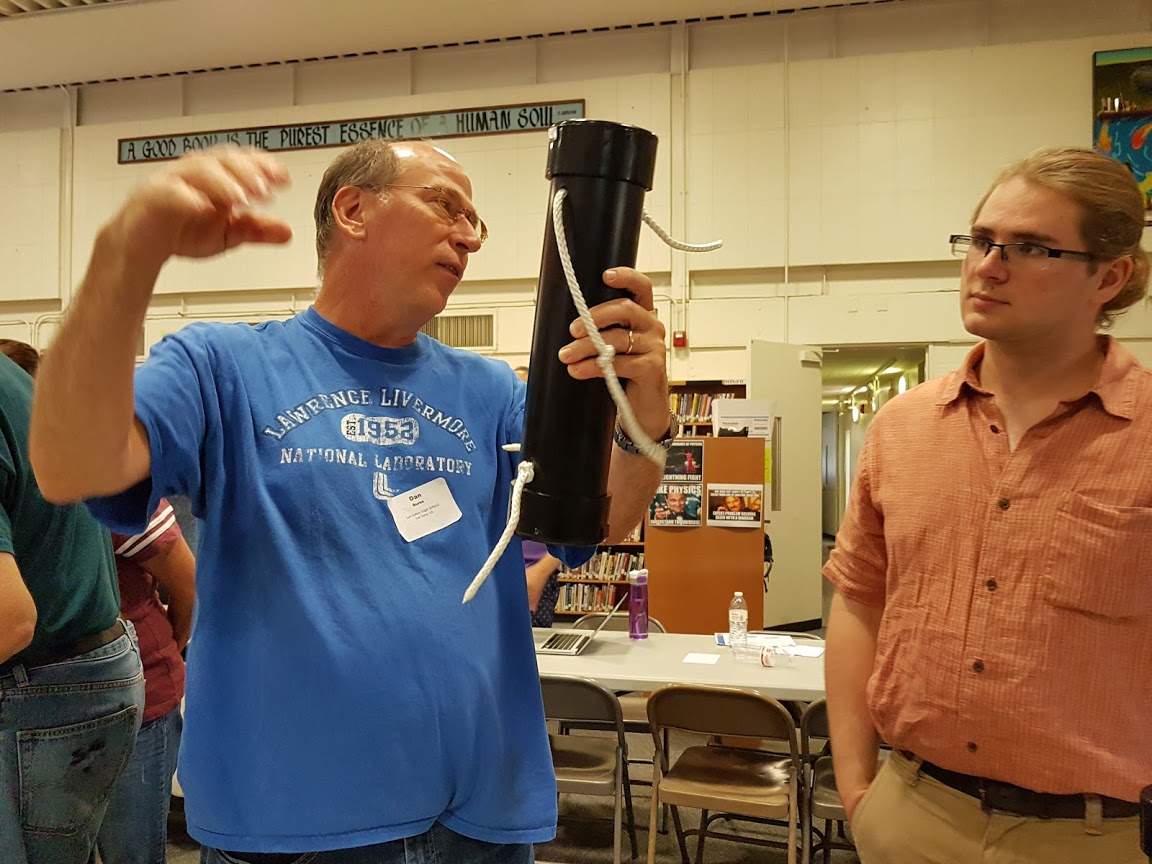
Smartphone Physics for Sensor-Based Labs
by Rebecca Vieyra, 1 December 2016
Reference this post: http://aapt.org/K12/K12-Blog.cfm#1December2016
Because commercial science probeware might not always be available or at the appropriate student-sensor ratio, it is worth considering the role of personal mobile tools. There has been such interest in the use of these tools that the AAPT has dedicated a monthly column to "iPhysicsLabs" topics in The Physics Teacher publication. Check out some of these clever, easy to replicate ideas in recent editions:
- On the Inflation of a Rubber Balloon
- Inexpensive Audio Activities: Earbud-based Sound Experiments
- Video Analysis on Tablet Computers to Investigate Effects of Air Resistance
- Analyzing Stevin's Law with a Smartphone Barometer
- Exploring the Atmosphere Using Smartphones
- Locating a Smartphone's Accelerometer
- Going Nuts: Measuring Free-Fall Acceleration by Analyzing the Sound of Falling Metal Pieces
Perhaps the element that is most interesting about smartphone physics is that this approach has a uniquely international appeal. (Indeed, the publications listed above were authored by individuals from as far-reaching placing as England, France, Germany, Italy, and Uruguay, in addition to the United States). During a webinar on December 10, engage in discussion with individuals such as Ann-Marie Pendrill, a K-college physics teacher educator in Sweden who uses smartphones in amusement park field trip experiences. Learn more about the efforts of smartphone user and app developer Joel Chevrier of France, who ealier this year ran a Massive Open Online Course (MOOC) to teach physics using smartphones, and Jean Luc Richter, co-author of "Smartphones in Science Teaching." Additionally, learn about Italy's massive efforts to bring digital learning into the physics classroom through teacher leaders such as Alfonso D'Ambrosio and Stefano Macchia. See Alfonso's blog statement (use Google Translate option, if necessary) on "why smartphones in science" and one example of classroom innovation to teach about Bernoulli's principle from Stefano.
If you are interested in a deeper learning experience, make sure to attend the AAPT Winter Meeting and register for the workshop "Everything You Wanted to Know about Using Smartphones in Your Classroom: 10+ Engaging Labs to Teach Mechanics, Sound, Light, E&M, and Modern Physics" with Martin Monteiro and Arturo Marti of Uruguay. Check out some of their publications at Martin's blog.
Curious about how some of these sensors work? Check out AAPT member Wolfgang Christian's Mobile Device Models, hosted on the AAPT's comPADRE.org digital library to investigate a model about how smartphone acceleromters work. Want to know more about the actual physical components, the microelectromechanical systems (MEMS), that make up the various other sensors as well? Check out my own personal blog (unaffiliated with AAPT), here.
Join a "round-table" discussion during a webinar on December 10th to learn more about how you can use smartphones in your classroom, to share an interesting idea or experiment, and to get to know like-minded fellow educators. Register here.
Image credits from top to bottom: (1) University student performing centripetal motion experiment in Brazil; (2) High school students using magnetic field sensors to find metal in the field; (3) AAPT member Bree Barnett Dreyfus showing a colleague sound intensity measurements during a school rally.


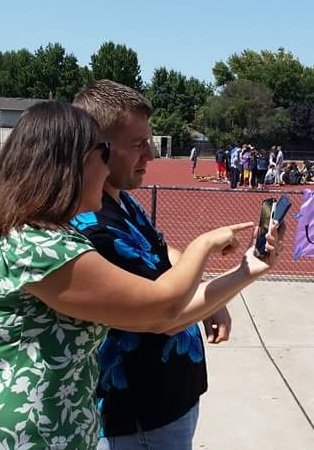
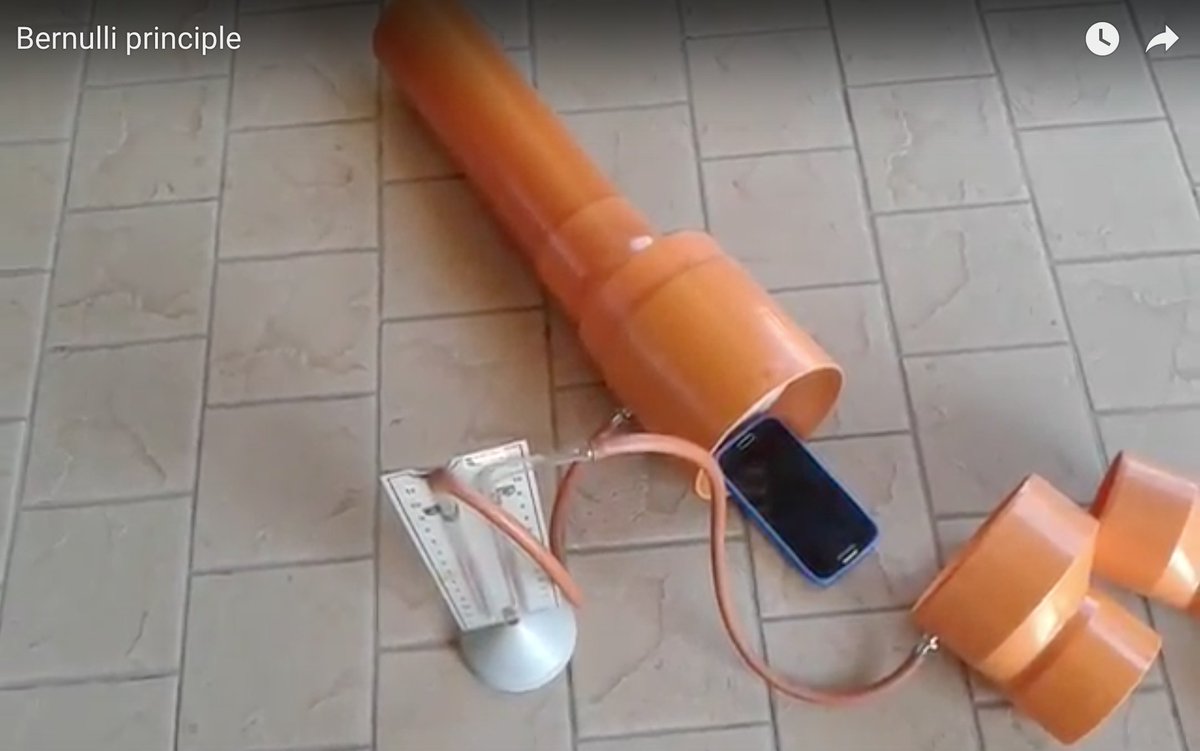
Revealing the Nation's Report Card in Science
by guest blogger Stefanie Wills, AAPT Marketing Coordinator, 27 October 2016
Reference this post: http://aapt.org/K12/K12-Blog.cfm#27October2016
This week, the nation has turned its attention to "active learning" as one way to motivate and engage students. One panelist, Susan German, eighth grade science teacher from Missouri, allows for active learning in her classroom, stating that "Teaching can happen when students learn something new." To balance the underperforming students with the above average students in her classroom, Susan utilizes a process called instructional scaffolding. She uses simulations and computers in her class, but teachers can't always rely on these tools due to a lack of funding. Susan encountered funding issues and managed to write grants to fund some of her computer activities. "It's hard, but I search long and hard for these grants."
Marty Kelsey, Education Specialist for Digital Learning at the National Air and Space Museum (NASM) mentioned that if you cannot get your students out to a museum due to lack of funds, that the NASM's video series "STEM in 30" can bring the Smithsonian to teachers use quick videos with teachers in mind.
According to the results of the Report Card, based upon assessments taken across the United States, there has been no change in average students scores, or between student groups in twelfth-grade science since 2009. (These student groups are categorized by race, gender, geography, disabilities, and highest level of parental education). Panelist Linda Rosen, CEO of Change the Equation, was very clear in her message: "I find it very troubling that only 22% of twelfth-graders perform at above proficient levels." Considering there will be over two million STEM jobs over the next decade, how can we improve their proficiency? "We know that young people prefer active learning, Linda explained.
Yet, the new report wasn't all negative. In 2015, a higher percentage of twelfth-graders reported taking courses in biology, chemistry, and physics as compared to previous years. As Peggy G. Carr, Active Commissioner, National Center for Education Statistics, concluded, "There's some good news from the report; the gap is narrowing for girls and minorities. However, there is still a lot of work to be done."
Getting students engaged and inspired to learn science is crucial in moving these numbers forward. Being "hands on" is a tip from twelfth-grade Anacostia student Dejah Wright, who is currently analyzing a cadaver in her class. She's currently testing the blood type, finding out the cause of death, and more. She says "Everything I do in science is hands-on, and that's why I like it." We totally agree.
Learn more about the AAPT and how to join as a member in our mission to promote active learning at aapt.org.
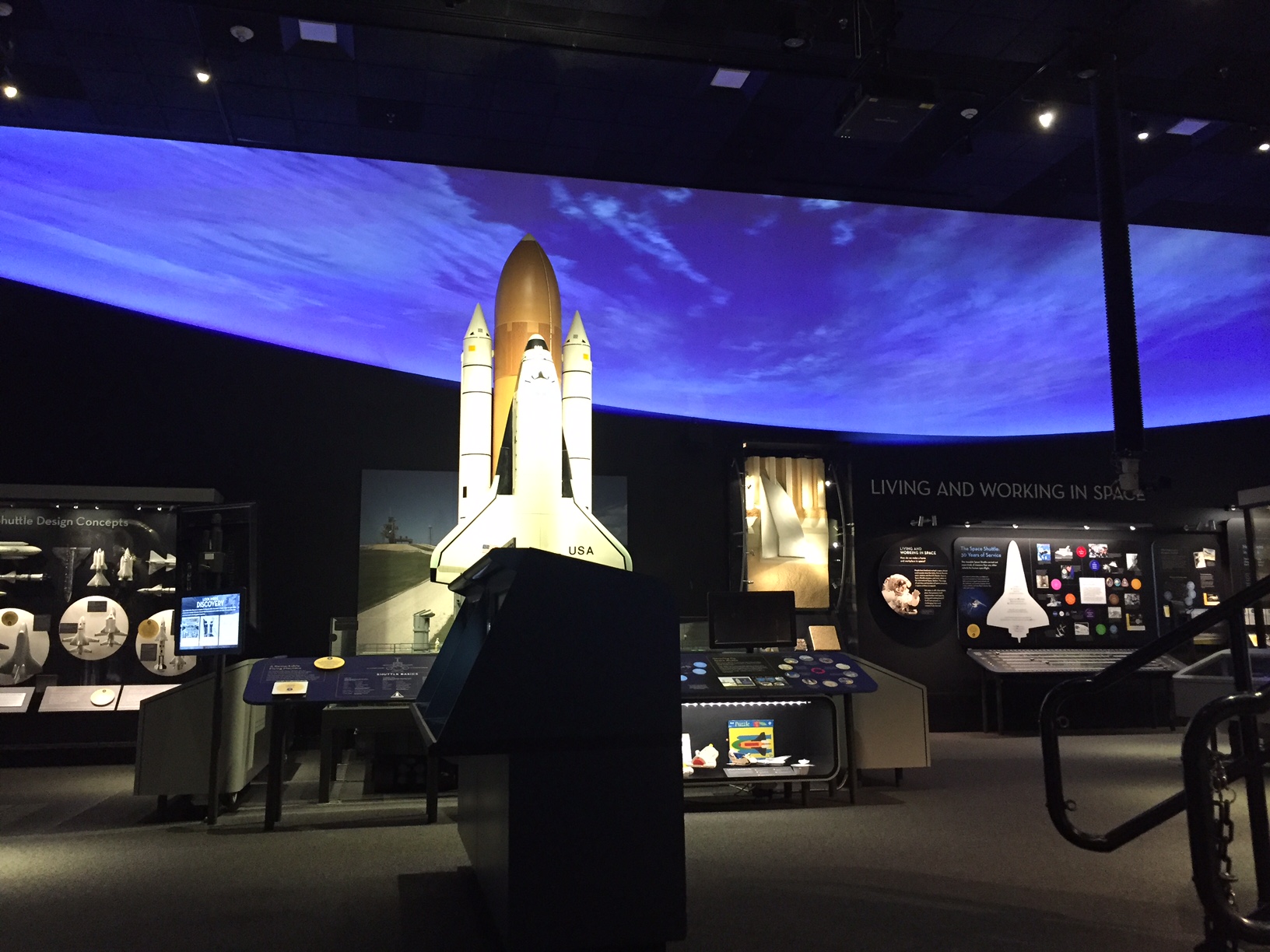
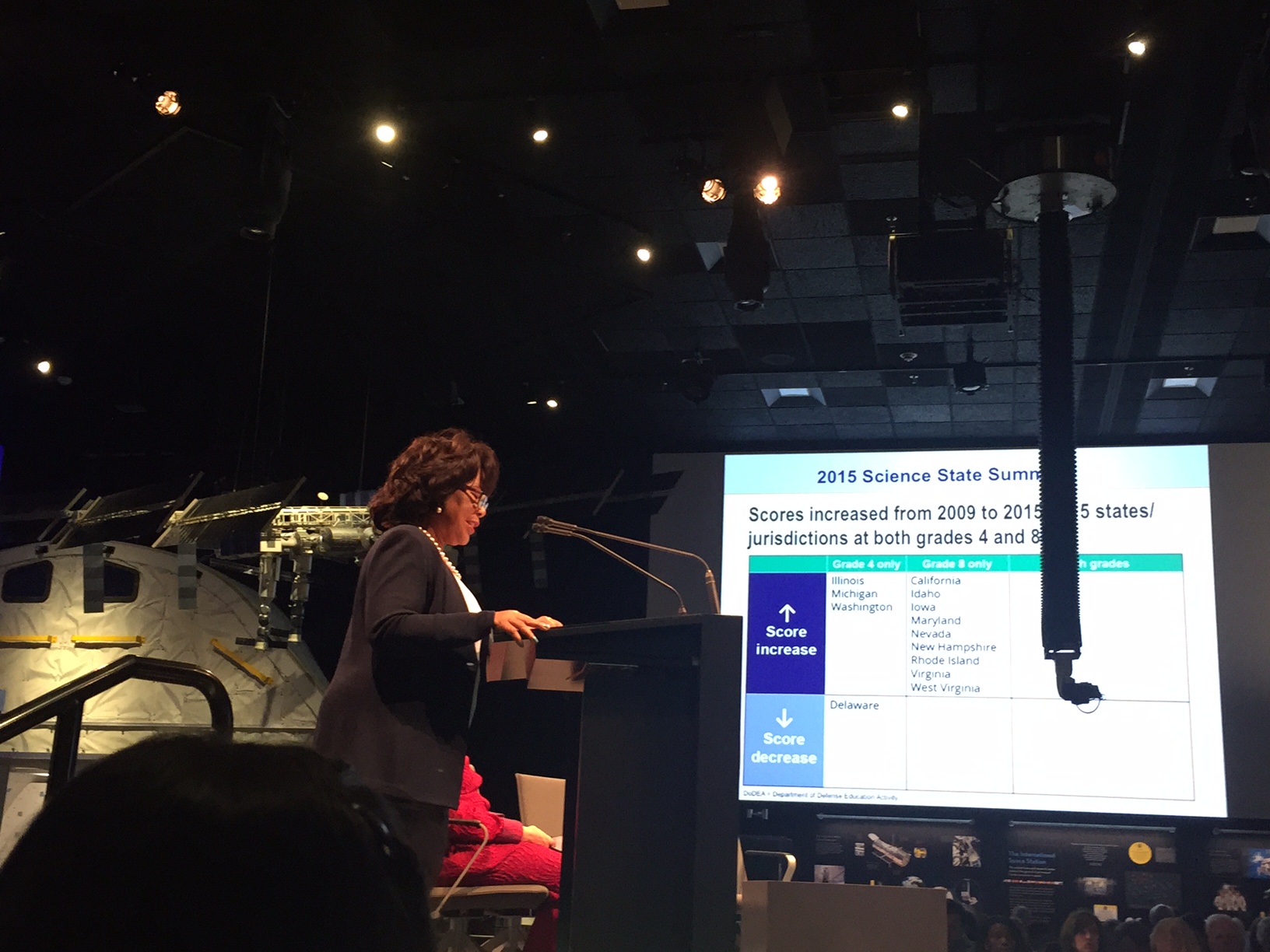
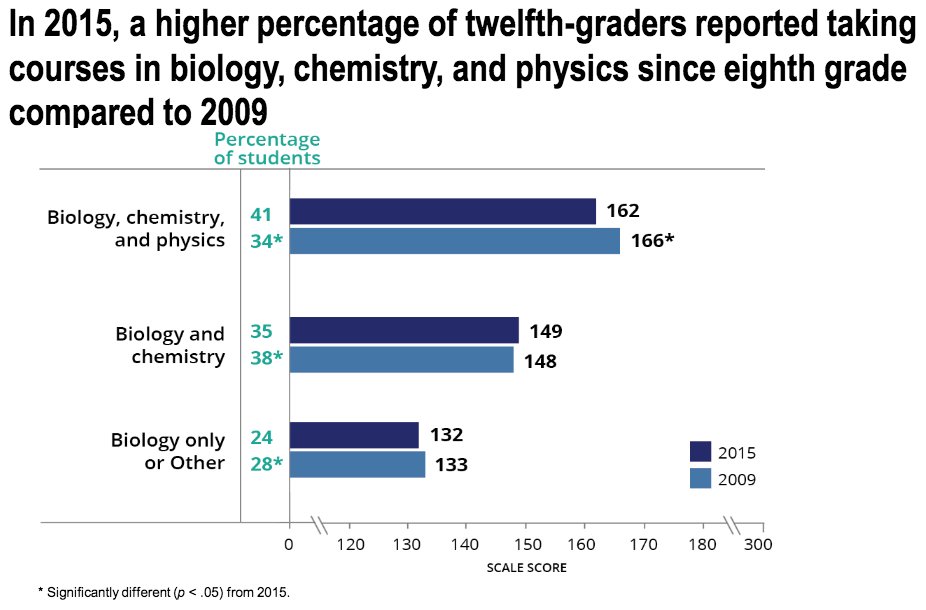
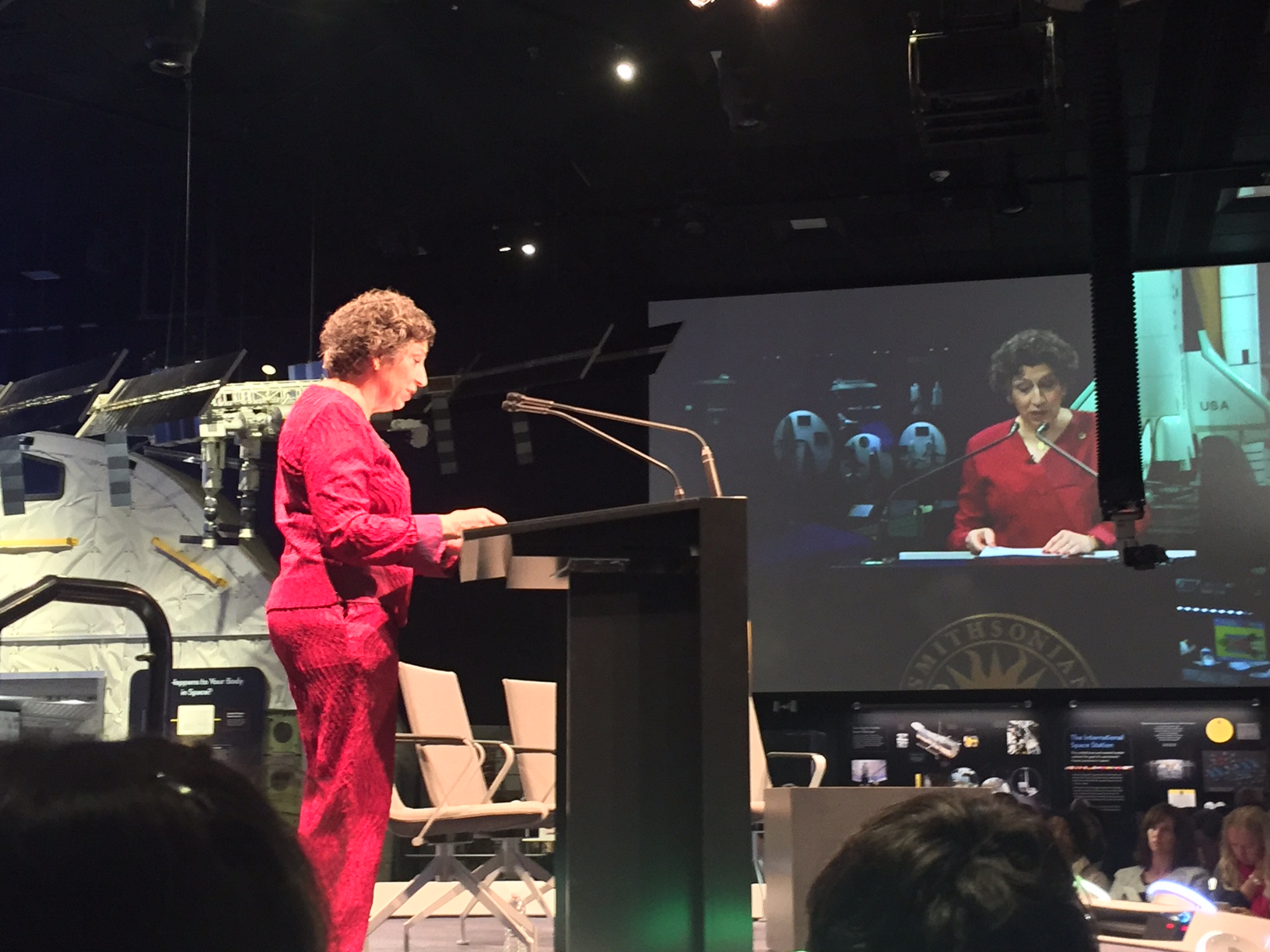
Celebrate Active Learning Day 2016
by Rebecca Vieyra, 25 October 2016
Reference this post: http://aapt.org/K12/K12-Blog.cfm#25October2016
"The American Association of Physics Teachers (AAPT) has been a long-time supporter of active learning and a leader in promoting research-based active learning methods for K-12 education. Our activities support both in-service and pre-service teachers.
AAPT Promotes Physics Education Research Providing Evidence for Active Learning
For more than 40 years, AAPT has fostered the development of Physics Education Research that has provided the evidence of the effectiveness of active learning in physics education at all levels. A synthesis of that research can be found in Jennifer L. Docktor and José P. Mestre, “Synthesis of discipline-based education research in physics,” Physical Review Special Topics – Physics Education Research 10, 020119 (2014).
AAPT Provides Extensive Resources for Active Learning
To make active learning strategies more accessible to faculty, AAPT, with support from the National Science Foundation developed the web site PhysPort.org, which provides curated guides to more than 50 active learning strategies (with summaries of the evidence of their effectiveness) and more than 80 research-based assessment tools to test for the effective implementation of those strategies.
AAPT Provides Active Learning Professional Development for K-12 Teachers
At the K-12 level, AAPT has provided peer-led professional development for teachers of physics through its Physics Teaching Resource Agents for more than 30 years. That program has emphasized the importance of active learning and provides teachers of physics with the content knowledge and the pedagogical knowledge needed to implement active learning effectively for all students.
AAPT Promotes Integrating Computational Thinking and Physics to Aid Active Learning
Recognizing the importance of computational thinking in all STEM careers, the AAPT leads an NSF-funded STEM+C project and co-leads a 100Kin10-funded project to integrate Modeling Instruction (an active learning strategy developed for physics) and Bootstrap (an active learning approach to learning algebra through computer science). These efforts are focused on “physics first” courses in schools where all students take physics, thus making computational thinking work accessible to a much wider range of students compared to those served by the typical stand-alone computer science courses in secondary schools.
AAPT Increases the Number of Highly Qualified Physics Teachers Using Active Learning
AAPT and APS, with support from NSF, have developed the Physics Teacher Education Coalition to enhance the engagement of physics departments in the education of future K-12 teachers of physics. As a result of that program, the number of highly qualified physics teachers has almost doubled in the past ten years. In addition, the diversity of these new physics teachers is significantly greater than that of physics majors overall and that of the current cohort of teachers of physics nationwide.
AAPT Engages Physics Master Teacher Leaders to Promote Active Learning
AAPT has recently established the Physics Master Teacher Leader Corps to provide the Association with guidelines and recommendations for enhancing its professional development programs for K-12 teachers of physics. Many teachers in the Corps will become leaders in those professional development programs, which then provide a platform for them to enhance the teaching of physics across the country.
AAPT Foster the Development and Dissemination of Active Learning Strategies through Meetings and Publications
AAPT’s national meetings and its annual Physics Education Research Conference are the primary mechanisms for physics teachers and physics education researchers to meet, share the results of their work, and to develop new ideas to further enhance the adoption of active learning techniques at all levels of physics education. The AAPT’s journals, The Physics Teacher, The American Journal of Physics, and Physical Review Special Topics: Physics Education Research support the dissemination from researcher to practitioner."
Learn more about the AAPT and how to join as a member in our mission to promote active learning at aapt.org.
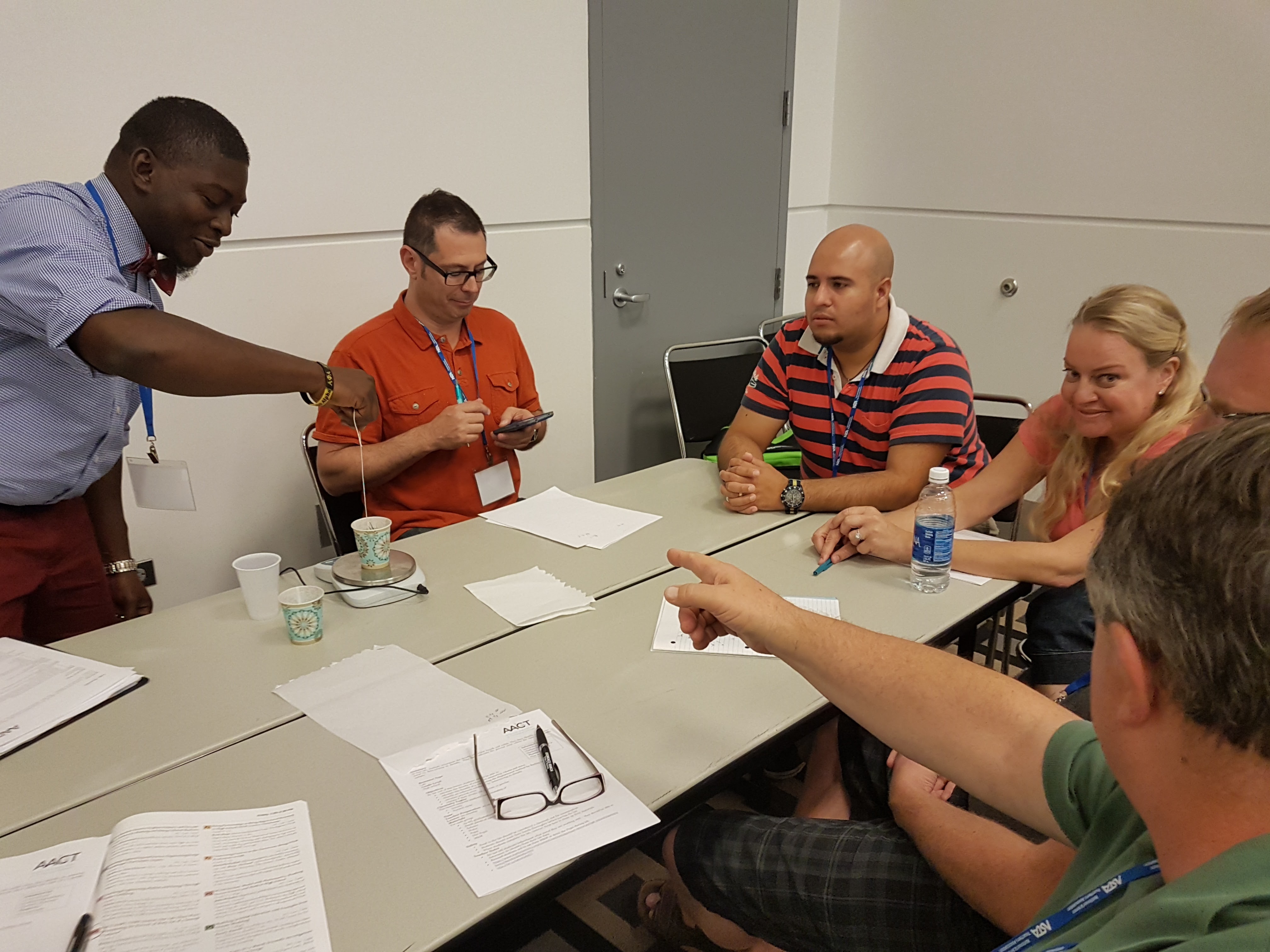

Recognition Opportunities for Outstanding Physics Teachers
by Rebecca Vieyra, 18 October 2016
Reference this post: http://aapt.org/K12/K12-Blog.cfm#18October2016
PhysTEC Teacher of the Year: Applications due November 1.
The PhysTEC Teacher of the Year program aims to recognize exemplary high school physics teachers who are graduates of PhysTEC institutions. PhysTEC is a national coalition of over 300 universities that are committed to preparing highly qualified K-12 physics teachers by helping teaching candidates develop deep content knowledge through a physics degree while also earning a teaching certificate.
If you are a graduate of a PhysTEC institution, and have at least three years of high school physics teaching experience, please contact your physics department to seek nomination before applying. Departments may nominate only one candidate.
LEARN MORE ABOUT PhysTEC Teacher of the Year HERE.
The winner of PhysTEC Teacher of the Year will be receive a number of professional benefits, including funds to attend the PhysTEC Conference in February 2017, the AAPT 2017 Summer Meeting in July 2017, and a classroom materials grant of $1,000, in addition to press coverage.
Other AAPT Awards for K-12 Physics Teaching Excellence
If you aren't a graduate of a PhysTEC institution, please consider nominating yourself (or asking someone to noinate you) for other opportunities available through the AAPT to high school physics teaching members.
Barbara Lotze Scholarship: This award recognizes individuals planning to become teachers who are currently high school seniors accepted to a physics teaching program or undergraduates in a physics teaching program. Winners receive a $2,000 scholarship.
Paul W. Zitzewitz Award: This award recognizes K-12 teachers of physics. Winners receive a monetary award, funds to attend an AAPT national meeting, and are asked to deliver an address to the meeting attendees.


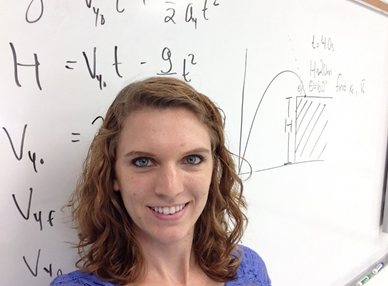
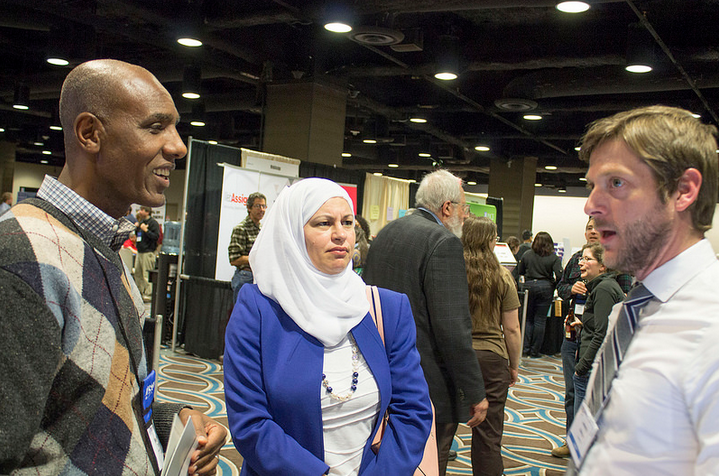
Building Professional Learning Networks for STEM Educators
by Rebecca Vieyra, 5 October 2016
Reference this post: http://aapt.org/K12/K12-Blog.cfm#5 October2016
A New PD Model
Another format that merits consideration and adoption comes from the K-12 math education community: math teachers' circles. Math Teachers' Circles are "professional communities centered on mathematics...that connect teachers and professors through shared mathematical discovery. Groups, often consisting of fewer than ten teachers, meet regularly to work on rich mathematics problems, allowing teachers to enrich their knowledge and experience of math." This approach places an emphasis on teachers as practitioners of their discipline and invites creativity and differentiated learning.
The work of the Math Teachers' Circles (MTC) is typically organic in nature, with small groups and localized networks coordinated and supported by the national Math Teachers' Circle Network. The MTC Network provides logistical support to seed the small communities and to provide suggested content for gatherings. The MTC Network video series and MTC Network YouTube channel provides detailed suggestions for how to run gatherings, and provides insights into teachers' thinking throughout the problem-solving sessions.
How Does this Connect to Physics?
As described in the MTC Network's video series, "An Introduction to Problem Solving," the heart of MTC is "becoming comfortable with not knowing how to solve a problem," a challenge also present among both teachers and learners of physics. Many of the metacognitive strategies present in their approach can be applied to physics, such as demonstrated in this MTC video, "Grid Power," in which the lead instructor encourages divergent thinking and investigations about what initially seems to be a mundane topic: grid paper. In the problem series "Bicycle Math," more direct connections between math and applied physics are drawn into a detailed investigation of force vectors, linear and rotational motion, and bicycle tracks.
Learn about both the MTC approach, try an MTC problems, and more with Brianna Donaldson, Director of Special Projects from the American Institute of Mathematics at an upcoming webinar on 12 October 2016.




PhysPort - Improve Your Physics Instruction with Research-Based Teaching Resources
by Rebecca Vieyra, 21 September 2016
Reference this post: http://aapt.org/K12/K12-Blog.cfm#21September2016
- Subject (i.e. mechanics, thermodynamics, E&M, astronomy)
- Level (i.e. teacher education, middle school, high school, intro/advanced college)
- Setting (i.e. lab, lecture, homework)
- Student Skill Development (i.e. conceptual understanding, multiple representations, metacognition)
- Instructor Effort to Implement
- Research Validation
- Resources Required
- Subject
- Level
- Assessment Focus (i.e. content, problem-solving, beliefs)
- Format (i.e. pre/post, multiple choice, rubric, observation protocol)
- Research Validation
- Available Foreign Languages


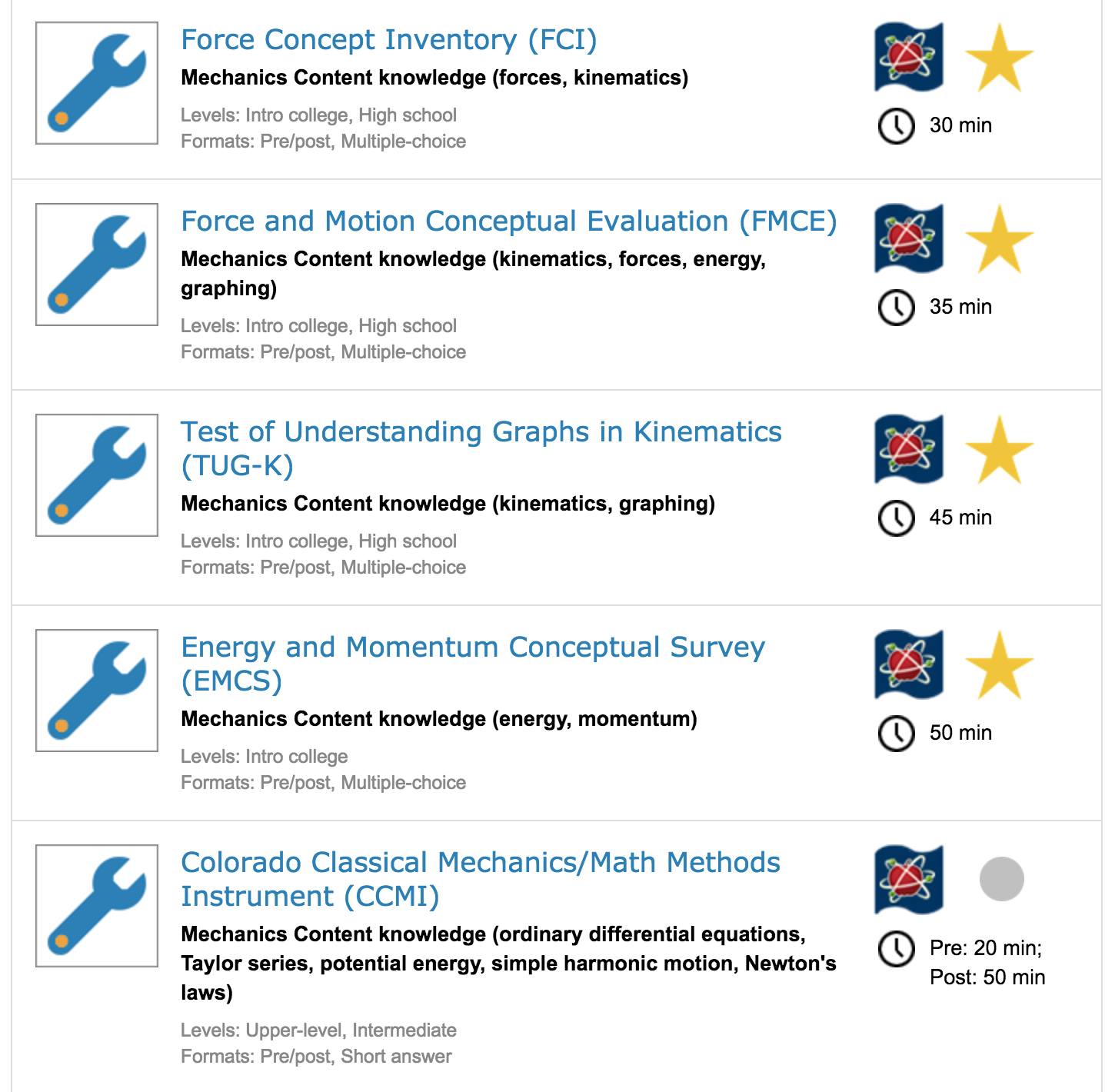

Build Your Career During Peer Review Week
by Rebecca Vieyra, 20 September 2016
Reference this post: http://aapt.org/K12/K12-Blog.cfm#20September2016
Share an Idea, Start a Movement: Publish!
You have valuable ideas to communicate to the world - ideas that could improve your colleague's curriculum and instructional practice and improve science education. Recognizing the profound impact that teachers can have upon one another and on their students, a number of K-12 teachers have created professional blogs and professional learning networks. The professional, peer-reviewed journal publication is yet another way that you can share highly vetted ideas with a very different community.
While you might have included attending professional conferences and giving presentations or workshops in your annual or career goals, have you considered formally publishing your ideas? With over 25,000 readers, middle school and high school teachers are encouraged to publish in The Physics Teacher (TPT), AAPT's journal that serves the interests of introductory physics educators around the globe. Many contributors to the journal find that their articles are high-impact, and often start a domino-effect that results in the development of thematic communities of colleagues with the same interests.
In my own experience, teachers are often so humble that they discredit their excellent teaching ideas. Others are eager for a helping hand and a friendly colleague to lead them through the editing process. Interested contributors can learn more about the publication process here, reach out directly to the editors of TPT at tpt@appstate.edu to share a publication idea, or contact me at rvieyra@aapt.org if you would like to be put in touch with another teacher to help you through the publication process.
Pay it Forward - Serve as a Peer Reviewer
To improve your own publication skills, a valuable practice is to volunteer as a peer reviewer for other contributing authors. Generally, this process occurs over the period of a number of weeks, and entails receiving an invitation from the editor to review an article, a multi-week period in which you are asked to read a raw manuscript and to provide feedback on the accuracy, relevance, and style of the article, and - in some cases - the opportunity to again review any major edits that might have been made by the contributing author. Generally, both the peer reviewer and the contributing author find this process to be a wonderful learning opportunity to improve both their article and their communication skills.

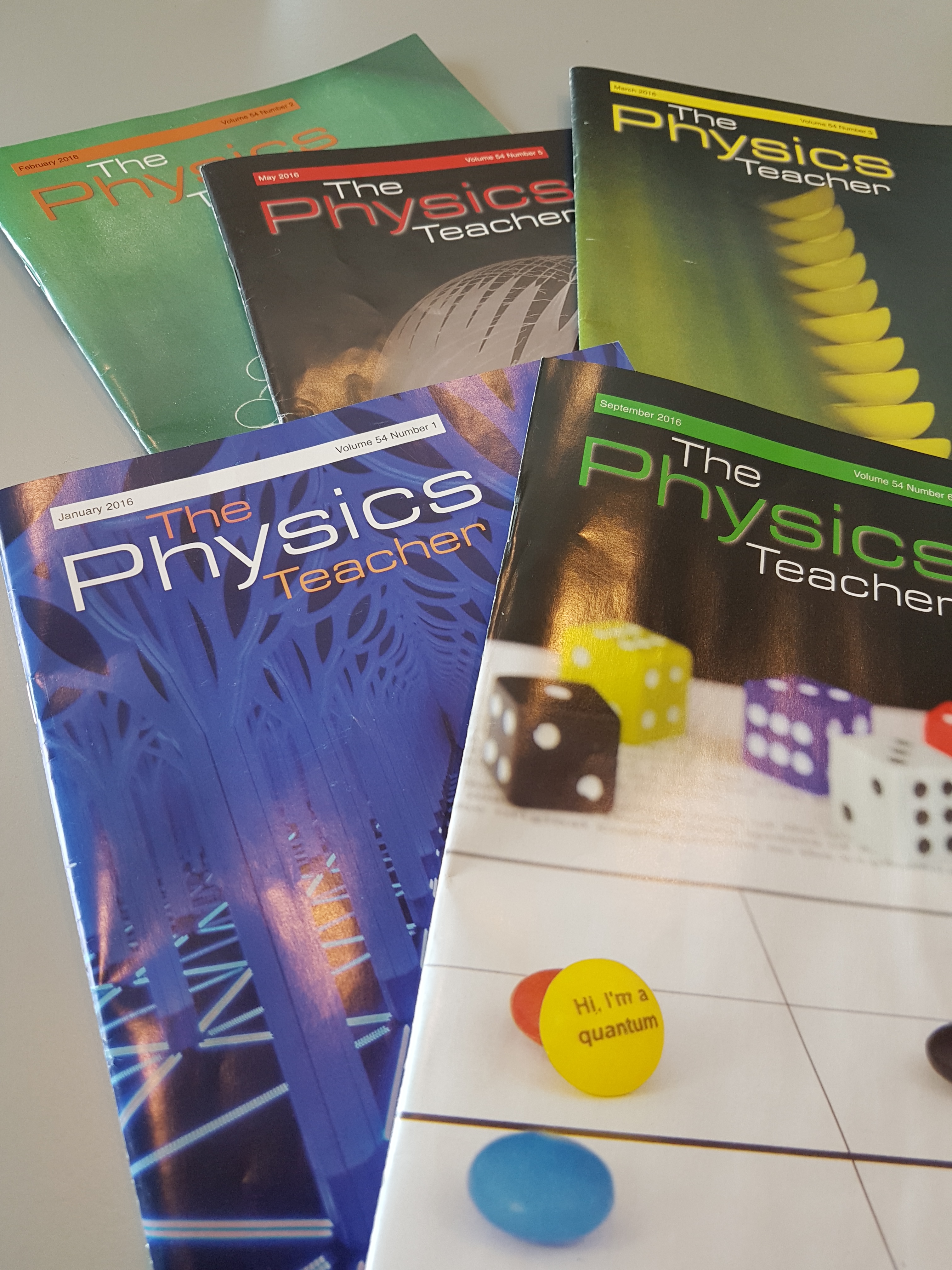

"Explore Optics" to Celebrate the OSA Centennial with New Resources
by Rebecca Vieyra, 16 September 2016
Reference this post: http://aapt.org/K12/K12-Blog.cfm#16 September2016The AAPT is pleased to be a partner in co-sponsoring a number of events to promote optics education. At the AAPTSM16 in Sacramento, CA, over a dozen local K-8 educators attended a one-day optics workshop. A full unit-worth of lessons were developed by the AAPT for the event, and can be found in our Optics Collection. The resources focus on fundamental concepts with properties of color and geometric optics, and were developed using low-cost, easily-accessible materials. Click below to see the lessons.
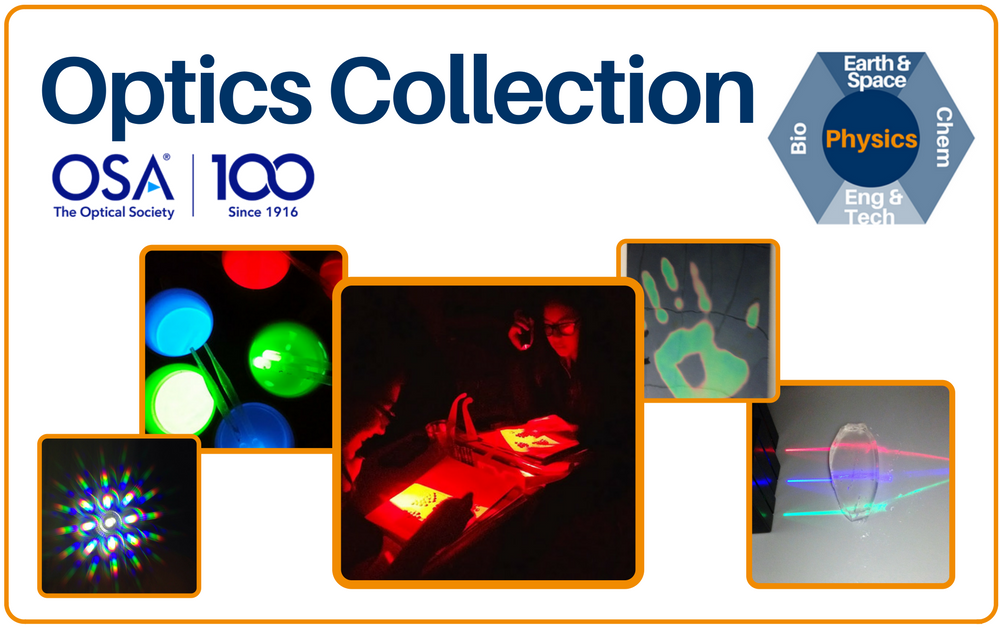
Want to Know More about Optics?
The OSA provides a wealth of resources for K-12 and informal education. Visit their Youth Education page to access additional lesson ideas and kits, including the Optics Suitcase Demonstration Kit developed by the OSA Rochester Section and used with children around the world. Look to connect with graduate students and professionals in optics careers on the same page to get in contact with OSA Student Chapters and Local Sections.
Additionally, the AAPT will be co-sponsoring OSA Educator Days (E-Days) at a number of upcoming OSA FiO conferences. If you are a K-12 teacher or educator in the Rochester, NY area, please join us on October 16th for a free workshop and luncheon. Register by completing this form. For additional information, please contact AAPT K-12 Program Manager Rebecca Vieyra at rvieyra@aapt.org.
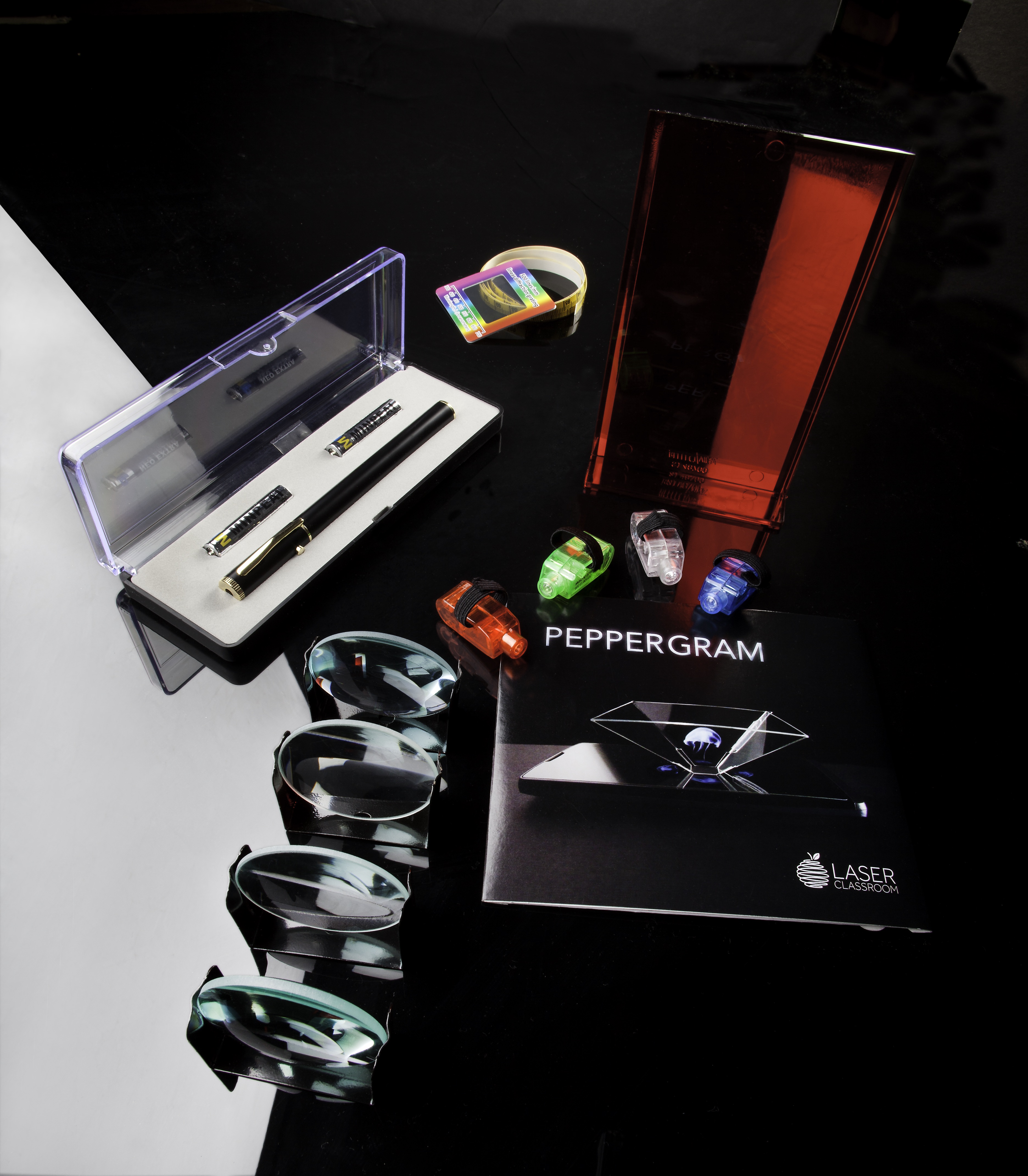

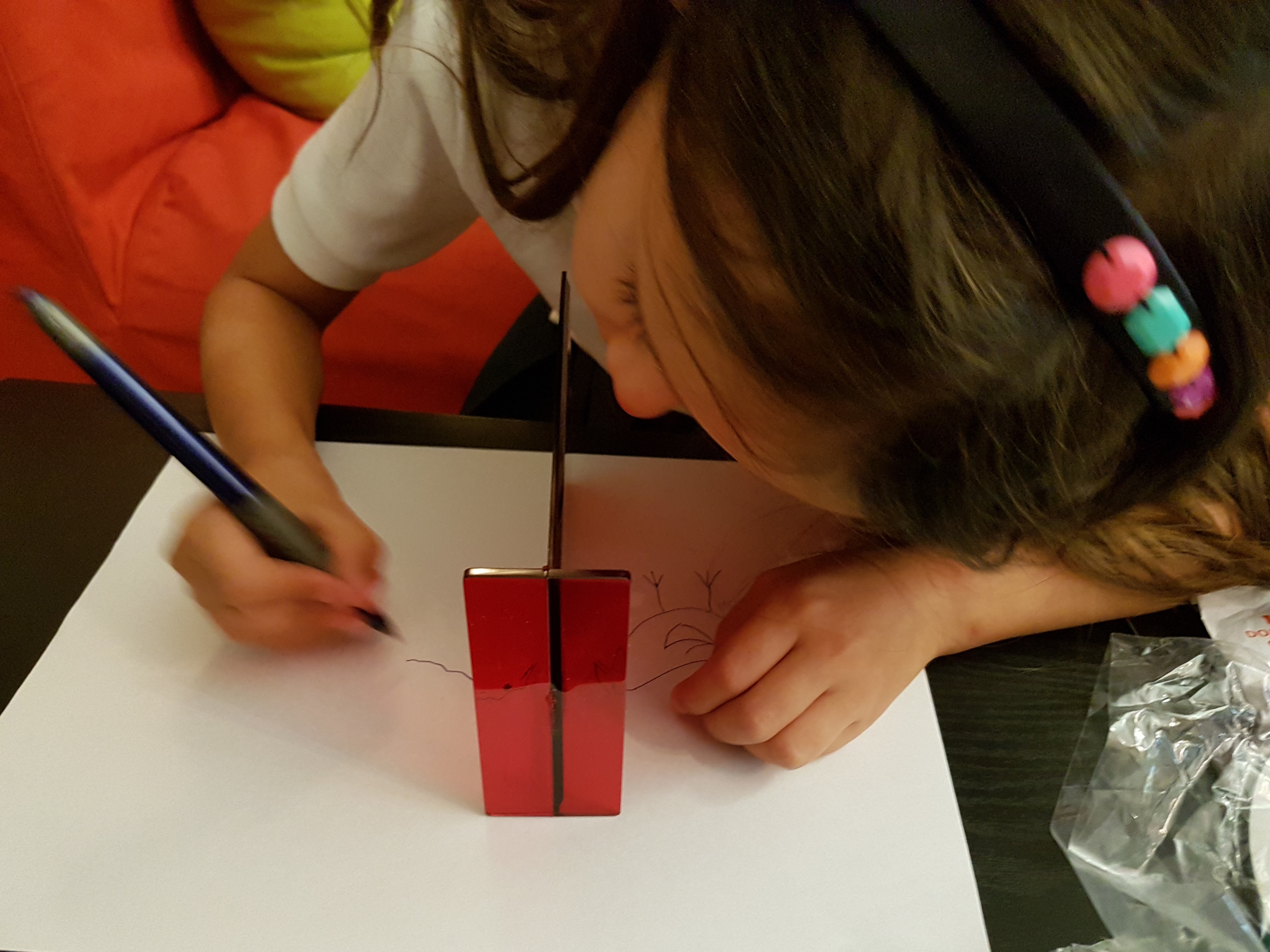

AAPT and Partners AMTA, STEMteachersNYC, and Bootstrap Awarded $1.247M STEM+C Grant
by Rebecca Vieyra, 15 September 2016
Reference this post: http://aapt.org/K12/K12-Blog.cfm#15September2016
This grant will support collaborative efforts between the AAPT, American Modeling Teachers Association, STEMteachersNYC, and Bootstrap. Read the full description of award NSF #1640791. The NSF award was made just after the first three-week summer workshop of a two year parallel project funded by 100Kin10. In August 2016, this project brought together 12 New York area middle school and high school Modeling physics teachers to learn programming using the Pyret language from the team that developed the nationally-recognized Bootstrap project to teach algebra to students through computer science. During the workshop, participants developed curricular resources - compatible with Modeling Physics First courses - that they will implement throughout the remainder of the school year. Next summer, these teachers will again participate in a summer workshop to revise and improve their resources, to involved additional teachers. Read the press release of this New York-based pilot effort.
High school physics teacher and AAPT Physics Master Teacher Leader Zhanna Glazenburg has already begun to implement some aspects of the developed materials in her classroom. "They are loving it," she said about her students' initial exposure to the Pyret programming environment. She shared that the addition of computational modeling tools to her classroom has encouraged her students to ask questions that otherwise students wouldn't typically ask. Although her students have used data analysis tools to create regression lines for data, she was confronted with students asking, "We want to know how it [graphical analysis] works!" for the first time.
Expanding upon Existing Efforts
The recent NSF award will expand the New York-based efforts to include teachers nation-wide and to develop additional modules beyond the integrated modules already developed this summer (Qualitative Energy, Constant Velocity, Uniform Acceleration, Force-Particle Model, and Constant Force Model). An additional component of the NSF grant is the inclusion of a significant research effort. The project investigators aim to learn more about what types of computational thinking content and skills students and teacher can learn in the context of Physics First, how integration impacts an understanding of physics, what types of resources teachers build and how they fit into the Modeling Instruction learning cycle, and how student and teacher attitudes about CS change throughout an integrated course.
Why Computer Science in Physics?
At the core of both of these projects is the hypothesis that the use of computational modeling in the context of lower-grade, algebra-based Physics First courses might improve underrepresented students' access to opportunities to learn and apply computational thinking practices in service of learning physics and solving physics problems.
In particular, participants in the summer workshops noted the parallelisms between thinking about motion maps (vector diagrams) and iterative thinking about functions in computational modeling. In supplement to instructional approaches in science that emphasize holistic analysis of data through the derivation and application of curves to represent functions, iterative thinking using programming techniques is perhaps a more natural approach for novice physics students to tackle physical phenomena both conceptually and algebraically.
As an effective tool for assessment of student understanding, students explicitly attempt to communicate their thinking to computers through programming and an objective interpretation by the computer. A common thread throughout the modules developed by the teachers this past summer included the student-development of a program that accurately simulated the application of a net force to a sliding ball. As computers have no raw concept of force, students are challenged to use an understanding of Newton's laws to visually display the effect of net force on an object by allowing a user-created event (such as a mouse click or keystroke) to result in a change in velocity of the object.
Such skills associated with fundamental physics concepts, data analysis, computational thinking, and modeling, are strongly emphasized in the Next Generation Science Standards in the Science and Engineering Practices. Without courses that integrate computational thinking, it is unlikely that students will get much CS exposure at all. Demographic analysis of computer science in U.S. high schools show significant disparities in CS exposure for women and underrepresented minorities. Exposure and success in CS can build toward a longer career pathway in STEM. In physics alone, the AIP's Statistical Research Center research on physics careers has identified that, in addition to physics and astronomy careers that necessitate CS skills, a significant portion of physics majors enter careers in fields associated with engineering, computer science, and technical research, all of which require some element of programming.
Interested in Learning More?
To express interest in learning more about this project and to get notifications about the summer 2017 opportunities for involvement as a workshop participant, please contact AAPT K-12 Program Manager Rebecca Vieyra at rvieyra@aapt.org.


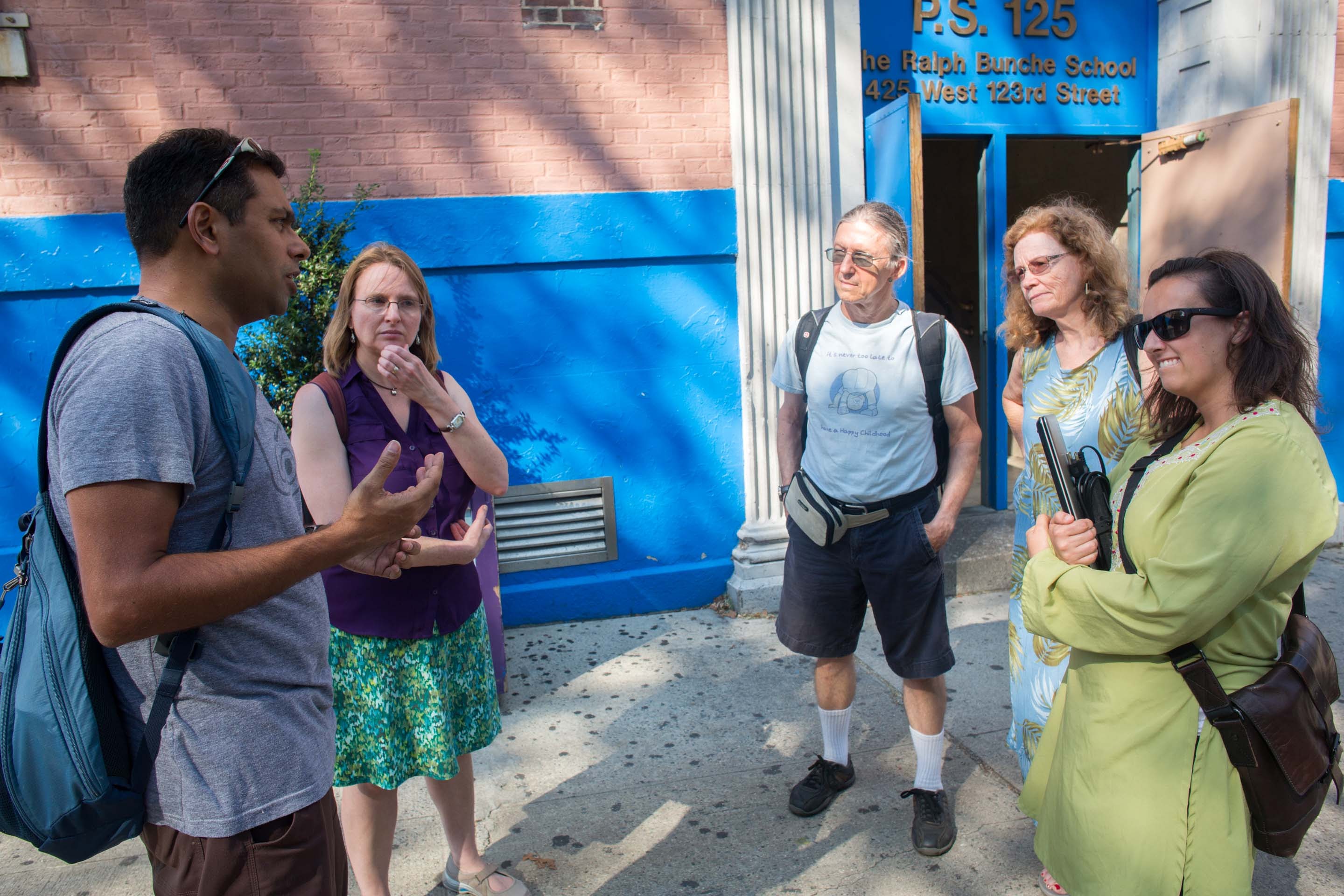
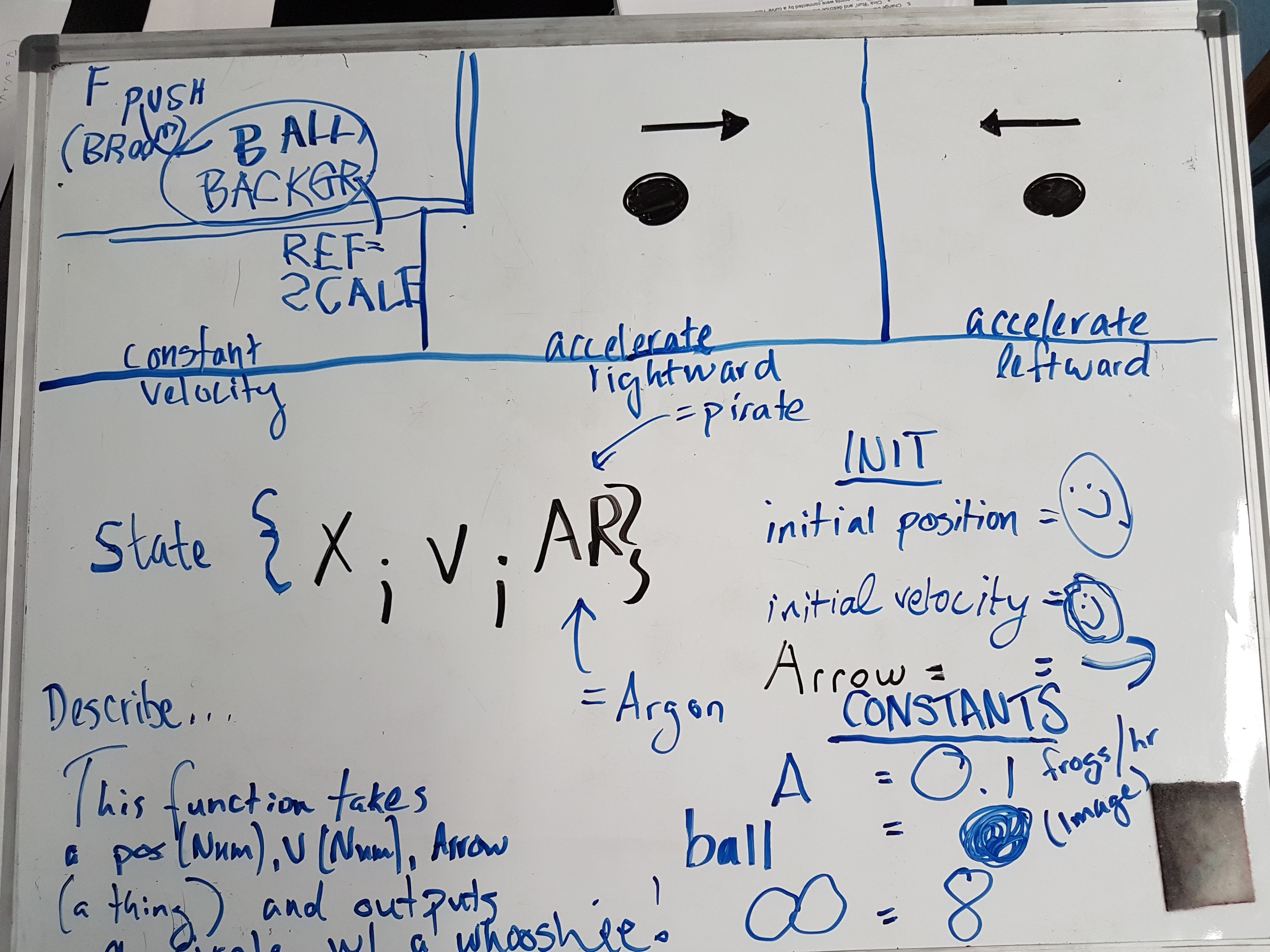

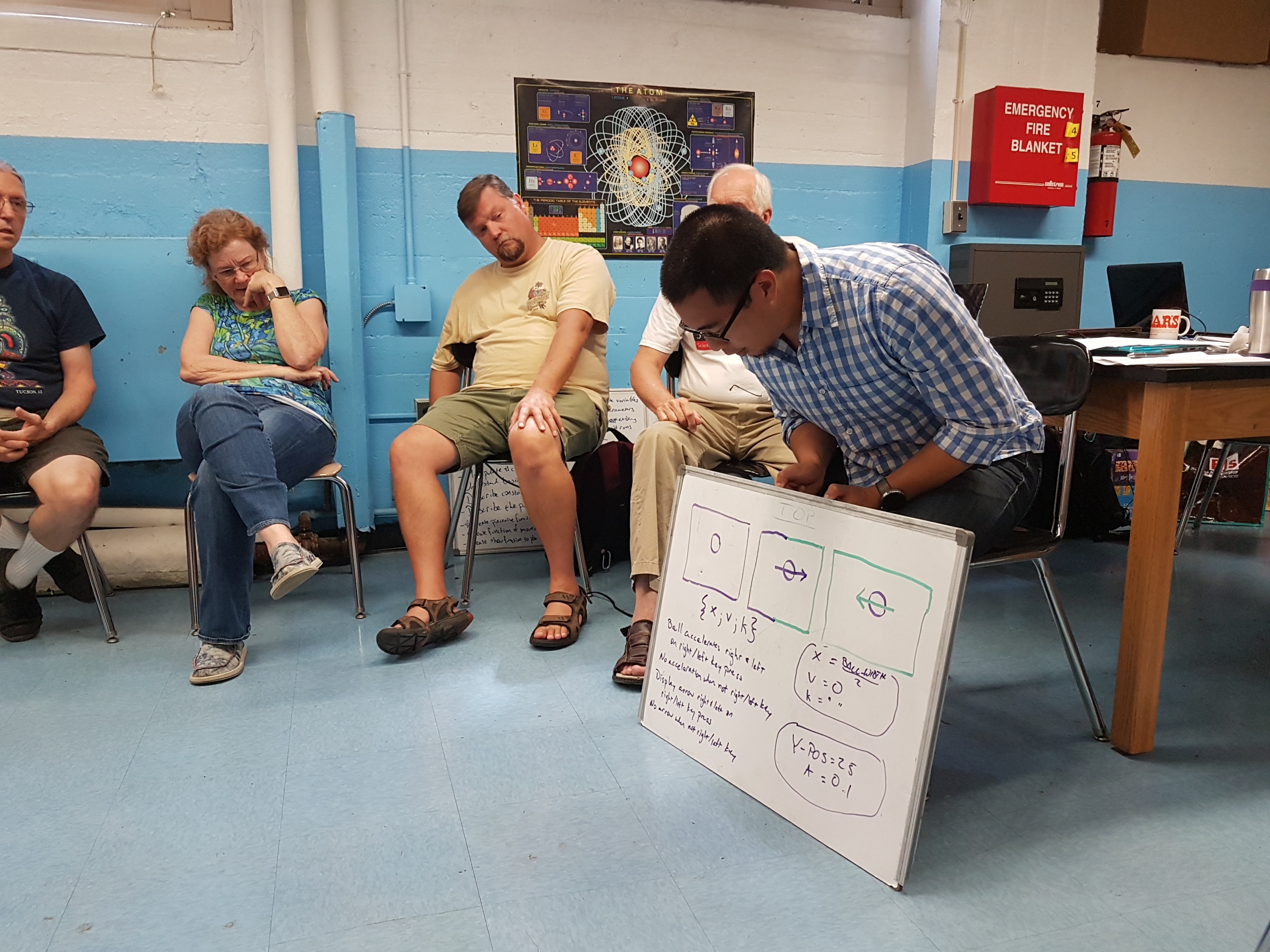
Team America Rocketry Challenge - Bring Engineering to the Physics Classroom
by Rebecca Vieyra, 2 September 2016
Reference this post: http://aapt.org/K12/K12-Blog.cfm#2September2016
The AAPT has been a proud promoter of the Team America Rocketry Challenge (TARC) for over a decade. We welcome you to attend an informational webinar on September 8th learn from program manager Miles Lifson about what it takes to become a volunteer coach or to engage your own grades 7-12 students in the annual competition. Although many groups choose to engage in TARC as an after-school activity, there are many elements of the program that can be directly incorporated into the formal classroom environment.
The physical sciences have long been synonymous with "rocket science" for many people. In a very literal sense, the teaching of rocket science is one effective way to engage students in applying fundamental physical principles to project-based and engineering activities. Recently, the AAPT released a series resources to support the teaching of physics through rocketry. Inspired by a number of articles from The Physics Teacher, including Measuring Model Rocket Engine Curves and This Is Rocket Science!
Titled simply "Rocket Science," the Student Worksheet and Teacher Guide suggest a lesson progression that takes students from measuring impulse of a rocket engine to using principles of conservation of energy and understandings about kinematics to predict the maximum height of the rocket. Later this year, the AAPT will release a "Digi-Kit," a curated collection of vetted online resources, to support the teaching of rocket science. You can find additional TPT-inspired lesson templates here.
Additionally, TARC and the AAPT are excited to identify additional resources for teaching rocket science in the formal classroom context. Do you have ideas to share? If you would like us to feature your teaching idea, or if you would like to express interest in possible future curriculum development project opportunities, please contact AAPT K-12 Program Manager Rebecca Vieyra at rvieyra@aapt.org.


Albert Einstein Distinguished Educator Fellowship Informational Session for K-12 STEM Educators
by Rebecca Vieyra, 3 August 2016
Reference this post: http://aapt.org/K12/K12-Blog.cfm#3August2016
REGISTER HERE for this upcoming webinar on 18 August 2016 at 8PM ET.

Join the AAPT as it hosts an informational session about the Albert Einstein Distinguished Educator Fellowship, an 11-month program that places excellent K-12 STEM educators on Capitol Hill and in federal agencies (such as NASA, the National Science Foundation, and the Department of Energy) to impact nation-wide STEM education. Multiple AAPT members have been honored as fellows since the program's inception. Ask questions about the selection process and learn about the fellowship experience from prior fellows before applications open in August by registering for this webinar, at https://zoom.us/webinar/register/5aafcce34ac214a87510d14dfea9e911
Two members of the AAPT's Physics Master Teacher Leadership Taskforce have served as Albert Einstein Fellows: Jeff Milbourne of California, and Florentia Spires of Virginia. In his own words, Milbourne describes the benefits of the fellowship to his career in education:
"I’ve been fortunate to participate in some excellent PD opportunities in my career, but the Einstein Fellowship was, hands down, the most powerful experience I’ve ever had. I was a Hill Fellow when Congress was rewriting No Child Left Behind, and had the opportunity to help shape the new law. As a classroom teacher, that was incredibly powerful: I went from having little to no voice in policy circles to helping write sections of the most important federal law for K-12 education.
The fellowship taught me how Congress works (or doesn’t), taught me how to think and talk like a policy maker, and gave me an insider’s perspective that makes me a better advocate for educational issues. I also developed a powerful network of colleagues in Washington, folks with whom I still keep in touch. Those contacts have led to even more opportunities to participate in national STEM policy: I’ve been an advisor to the US Department of Education, as well as national groups likes 100kin10. As is often the case with PD, one opportunity leads to another, and then another, creating a domino effect of amazing opportunities. This would have never happened had I not applied for the Einstein Fellowship.
Advice to those who are applying: keep an open mind about which type of fellowship you want to pursue, and trust that the application process will put you in the right position. When I applied, I wasn’t particularly interested in a Hill fellowship, but I kept my options open. As I learned more, and got further into the process, I realized that the Hill Fellowship was a perfect fit for my interests and skill set."
Physics Master Teacher Leader Taskforce Unveiled!
by Rebecca Vieyra, 14 July 2016
Reference this post: http://aapt.org/K12/K12-Blog.cfm#14July2016
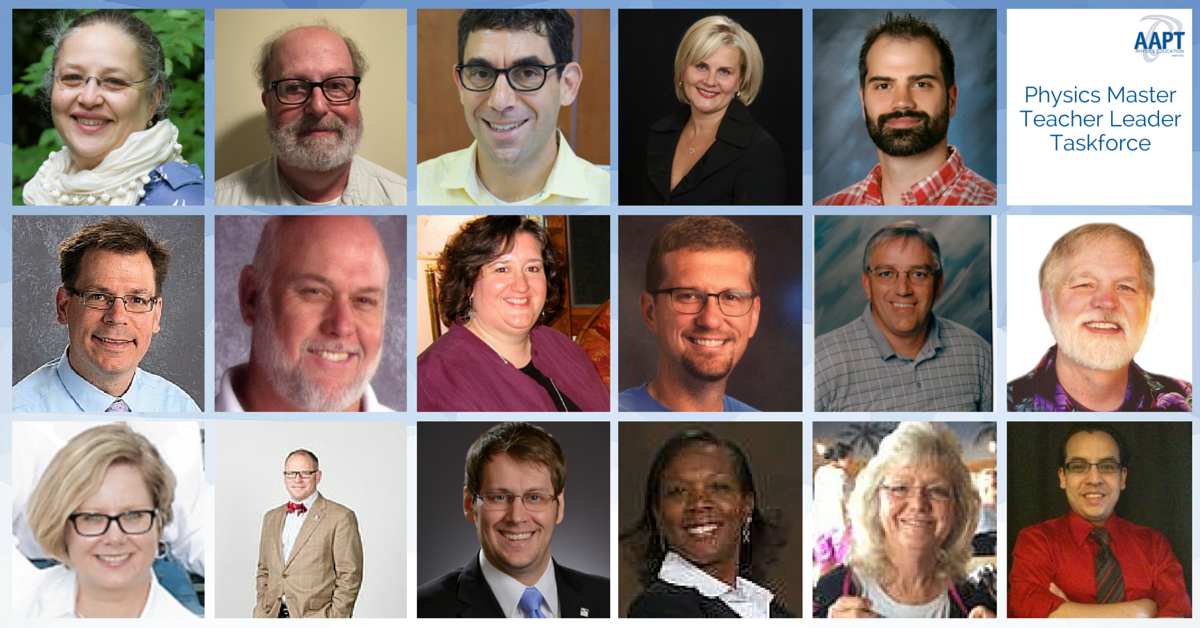
The AAPT and two collaborating organizations selected 17 outstanding leaders in K-12 physics education for the Physics Master Teacher Leader Taskforce. The selection committee included representatives from the AAPT Physics Teaching Resource Agents (PTRA), American Modeling Teachers Association (AMTA), and the Physics Teacher Education Coalition (PhysTEC).
This taskforce is meant to be a response to the growing national need for teacher leadership at the K-12 level. When educators are so frequently challenged by new initiatives, changing standards, and a diversifying student population, it is important that educators feel fully able to advocate for themselves and their students - along with their network of colleagues - at the classroom, school, district, state, and national level. This taskforce will look at ways that the AAPT can support this elevation of the teaching profession through ongoing professional development and leadership programs.
Collectively,
these physics master teacher leaders will work with AAPT HQ to prepare a
report to be presented to the AAPT Board of Directors that details a
new set of aspirational and coherent professional development and
leadership models for K-12 physics education, with an emphasis on
engaging teachers as advocates for change. Their strategic planning will
provide guidance to the AAPT as it endeavors to recruit, prepare, and
retain excellent science educators in the U.S. This work will be based
on the existing collaborative efforts of the AAPT with PTRA, AMTA, and
PhysTEC supported by a 100Kin10 Microchip Grant.
The
taskforce members have demonstrated significant teacher leadership and
comprise a diverse set of personal and professional backgrounds from
around the nation:
- Katya Denisova (Maryland, In-Service Teacher PD)
- Kelli Gamez-Warble (Arizona, Pre-Service Teacher Prep)
- Zhanna Glazenburg (New York, Middle/High School)
- Steve Henning (Massachussets, High School)
- Bradford Hill (Oregon, High School)
- Scot Hovan (Minnesota, High School)
- Martha Lietz (Illinois, High School)
- Mike Mangiaracina (Washington, DC, Kindergarten/Elementary)
- Duane Merrell (Utah, Pre-Service Teacher Prep)
- Jeff Milbourne (California, High School)
- Don Pata (Michigan, High School)
- George Louis Ramirez (Texas, High School)
- Bill Reitz (Ohio, High School)
- Rex Rice (Missouri, High School)
- Ann Robinson (Georgia, High School)
- Florentia Spires (Virginia, Kindergarten/Elementary/Middle School)
- Josh Underwood (Kentucky, High School)
In addition, 13 teachers were selected to serve on a Teacher Advisory group, to provide vital feedback to the taskforce as they prepare their report: Patti Ego, John (Trey) Smith, Leah DeWeez, Kelly O'Shea, Alma Robinson, Jeff Steele, Kenric Davies, Michael Strange, Alice Flarend, Larry Cook, Zeke Kossover, Dan Crowe, and Fran Poodry.
The Physics Master Teacher Leader Taskforce will be supported by a Leadership Advisory group, including AAPT Board Members Karen Jo Matsler, Jan Mader, and Elaine Gwinn, in addition to Pat Callahan (PTRA), Colleen Megowan (AMTA), and Jon Anderson (PhysTEC).
Physics Teaching for Social Justice
by Rebecca Vieyra, 16 June 2016
Reference this post: http://aapt.org/K12/K12-Blog.cfm#16June2016
High school physics teacher and AAPT member Moses Rifkin recently reminded the teaching community that teaching social justice should have a place in the physics classroom. In his February article in The Physics Teacher, "Addressing Underrepresentation: Physics Teaching for All," he shares practical considerations for how to learn about stereotype threat and avoid implicit bias while teaching.
Changes made by a physics teacher can potentially have significant and long-lasting effects on their students and the physics profession. Rifkin quotes Nobel Prize-winning physicist Carl Wieman and psychologists Lauren Aguilar and Gregory Walton: "By investing a small amount of class time in carefully designed and implemented interventions, physics teachers can promote greater success among students from diverse backgrounds. Ultimately, we hope such efforts will indeed improve diversity and health of the physics profession."
Rifkin has developed a five-day unit that is easily reproducible for physics teachers. Read about it and access his teaching materials in his four-part guest post on the Quantum Progress blog, "Teaching Social Justice in the Physics Classroom."
Although social justice and equity extend beyond issues of race or gender, decades of data from the American Institute of Physics demonstrate the need for open discussion about underrepresentation of racial/ethnic minorities (including African Americans, Hispanics, and Native Americans) and women in physics and physics-related fields. Factors that influence a student's decision to pursue a career in the physical sciences start very early. Significant discrepancies exist even in high school physics enrollment (Underrepresented Minorities in High School Physics Physics, AIP, 2015), a issue which educators have been trying to resolve, in-part, through the Physics First movement.
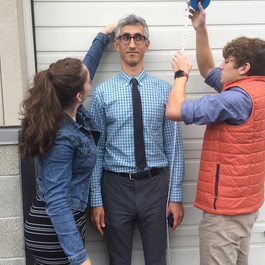
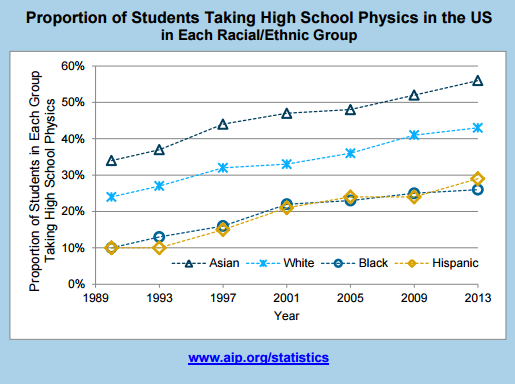
This summer, consider taking some time to learn about ways you can help to make your own classroom - and the physics profession at large - a community that welcomes embraces diversity. Here are three opportunities to learn more:
Webinar: "Physics Teaching for Social Justice" REGISTER HERE
June 28, 2016 8:00 PM Eastern
Equity and social justice are themes in the news these days, and yet very few of us physics teachers have training or experience in how to connect them to our work. In this webinar, we will explore what it means to teach for social justice and why it is crucially important in our classrooms, before moving into a discussion of what it can and could look like in our different classrooms. Attendees will leave with a clearer sense of the relevance of social justice to physics teaching, some ideas to try next year, and a network of physics teachers with whom to continue this work afterwards. Attendees of all experience and comfort levels are welcome!
Round-Table Discussion at the High School Teacher Lounge (AAPT Summer Meeting, Sacramento, CA)
July 18, 2016 2:30-3:30 PM Pacific
Meet with Moses for one-on-one discussions about social justice in the classroom.
Panel Presentation: "Physics Teaching for Social Justice" (AAPT Summer Meeting, Sacramento, CA)
July 19, 2016 1:30-2:00 PM Pacific
Only 4% of professional physicists identify as black or African American, a number far smaller than the 12% of Americans that do, and this underrepresentation is more dramatic in physics than it is in most scientific disciplines. I have developed a curriculum that uses these and other statistics as a jumping-off point for my high school students to explore issues of race, access, and culture in physics. I will share my experiences from a decade of using the curriculum, including how my students respond, how I address the challenges that have arisen, and how this curriculum has evolved. In doing so, I hope both to model the integration of physics teaching and social justice and to motivate attendees to take steps in their own classes.
Apply to the Physics Master Teacher Leader Taskforce
by Rebecca Vieyra, 6 June 2016
Apply HERE
This month, the AAPT announces plans to create a Physics Master Teacher Leader (PhysicsMTL) Taskforce. This one-year recognition and leadership opportunity is a call to bring together the "best of best" of K-12 teachers of physics to create a new set of aspirational and coherent professional development and leadership models for the K-12 physics education community.
Taskforce Description:
The PhysicsMTL Taskforce is a one-year opportunity for national teacher leaders to provide recommendations and strategic planning for AAPT's K-12 professional development and leadership programs for teachers. Together, this cohort will:
- Meet virtually monthly from July-October, with an optional face-to-face gathering at AAPTSM16.
- Tentatively come together for a face-to-face summit gathering in Washington, DC in late 2016 / early 2017.
- Present an executive summary with recommendations to the AAPT Executive Board with an optional face-to-face gathering at AAPTWM17.
Teachers selected as Physics Master Teacher Leaders will be honored for their work both for their prior accomplishments and their efforts on the taskforce through public press releases and national conferences. PhysMTLs have the potential to impact thousands of teachers through their work, and will have the opportunity to remain engaged with AAPT initiatives, including the creation and management of PD&L programs, the co-authoring of reports, guidelines, policy statements, curricular materials, and presentations, and the chance to serve as an AAPT ambassador to science education conferences and gatherings.
Eligibility:
Eligible individuals for the PhysicsMTL taskforce include:
- Grades preK-12 active classroom teachers of physics/science
- Grades preK-12 teacher leaders (those who are retired or in non-teaching leadership positions, and can include administrators and informal educators)
- Grades preK-12 pre-service and novice teachers with high potential for leadership
- University physics teacher educators
- Professional development providers
Qualifications:
PhysicsMTL Taskforce members are expected to have strong national perspectives on physics education, and/or to have demonstrated evidence of commitment to the profession beyond the classroom. Highly qualified individuals might include the following, although all are encouraged to apply!
- Leadership and engagement in the national AAPT (PTRAs, Committee Work, eMentors/eMentees, Awardees)
- Leadership in AAPT sections
- Leadereship in AAPT affiliate organizations and related professional organizations (AMTA, physics teaching alliances, NSTA, ACS/AACT, NABT, NESTA, ITEEA, etc.)
- Leadership in local, state-wide, national, and/or international professional development programs
- National recognition (Einstein Fellowship, PAEMST, NTOTY, Noyce, Knowles, etc.)
K-8 Workshop: "The Science of Light and Color"
by Rebecca Vieyra, 22 May 2016
Register HERE
This workshop, sponsored by The Optical Society's OSA Foundation, will expose educators of K-8 students to a variety of ideas and labs to teach children the science of color and light.
This full-day event will include a focus on the perception of color and geometric optics, in ways accessible from the very young to accelerated middle school students.
All participants will receive a Light Blox kit (a $49 value), and the chance to win an Optics Suitcase (a $350 value).
Lunch is included.
Optional: Bring an idea about teaching color and light to share with your colleagues during lunch (if you have one!)
Workshop activities will include:
- Spectra with Rainbow Peephole
- Glow stick color mixing and painting
- Color by reflection with M&M's
- Color-changing materials with Magic Patches
- Color filters lab with Jell-O, water crystals, and plastic lenses
- Flexible mirrors with Mylar
- Camera dissections
- Color and light storybook connections
Summer AAPT Opportunities for HS Physics Teachers
by Rebecca Vieyra, 17 May 2016
This summer, if you live near Sacramento, or plan to attend the AAPT Summer Conference, don't overlook these diversified opportunities for getting involved!
If you are an active high school physics teacher with a desire to dig deeper into research-based methods for active learning, attend the H.S. Physics Teachers Camp. While we certainly encourage you to attend the full AAPT conference, it's not required in order to take part in this "unconference"-style event. This camp draws motivated physics teachers - novice through experienced - who care about pedagogy. Last year, discussion topics selected by the attendees at the start of day ranged from how to effectively moderate student-led whiteboarding sessions, to a deep analysis of how to appropriately incorporate Direct Measurement Videos. Near the end of the day, take part in a "science fair-style" share-a-thon. For only $25, take part in this full-day workshop and get lunch!
High School Physics Teachers Day is jam-packed with high school-related presentations and poster sessions, the chance to join us at the H.S. Teacher Luncheon, and an evening rapid-fire share-a-thon. Regular conference attendees can enjoy the High School Physics Teachers Day in addition to all of the other conference offerings Monday through Wednesday, including the High School Teachers Lounge, which will be populated with interactive labs and small "make-and-takes." First-time attendees to the AAPT conference can attend High School Teacher Day for only $85.
Ready to take it to the next level? If you haven't yet had the chance to share your own work through a presentation or poster, please consider getting your name in the program at AAPT's winter meeting in Atlanta! Feel free to reach out to me at rvieyra@aapt.org to learn more.
Advanced Science Reading Tools for Students
by Rebecca Vieyra with guest commentary from Melissa McCartney, 11 March 2016
A number of months ago, AAPT featured work by participants of the National Writing Project to encourage science teachers to help their students communicate through writing. This month, we are focusing on how to help students to read technical science journals from those published in Science.
Below, find an overview of Science in the Classroom, a website that helps students use a "learning lens" to make sense of highly technical publications from the physical and biological sciences. Melissa McCartney, director of the project, describes how this tool came to be.
Eager to learn about this resource? Join this month's webinar "Science in the Classroom" on Wednesday, March 16th, at 8PM Eastern presented by Project Director Melissa McCartney.
Science is a leading journal of original scientific research, global news, and commentary. With less than an 8 percent acceptance rate, Science publications present the most exciting findings of scientists and, as such, summaries of these findings are frequently highlighted in the news. Ideally, when used in an educational setting, Science articles can provide an understanding of how scientists design their experiments, present their results, and discuss what steps to take next. How do we make these complex research articles more accessible to a more general audience?
In 2009, Science began an educational initiative called “Science in the Classroom” (SitC) with funding from the National Science Foundation (DUE 1043998). The goal of SitC is to make selected Science content more accessible. The decision was made that SitC would not be an educational resource that simply re-wrote primary research literature. Instead, we would choose our papers carefully and build a web-based educational scaffold, designed to provide students tools to use for interpretation, around the original text of each paper. It was also decided to take advantage of a unique feature of Science, specifically, the vast amount of original News content we generate every week. Our thought was that by including this content, as well as Perspectives, Review Articles, Policy Forums, podcasts, and Editorials, we would be able to place selected primary research papers into a larger context for students and teachers: one that portrays science as dynamic, full of controversies that are constantly being resolved, and involving topics intimately related to people’s lives.
A prototype website was launched in October, 2011, and,
following several rounds of beta testing, the launch of the current website (http://scienceintheclassroom.org)
occurred in October, 2013. In essence, Science in the Classroom is a collection
of annotated research papers and accompanying teaching materials designed to
help students at the advanced high school, community college, and undergraduate
level understand the structure and workings of professional scientific
research. Each annotated Science paper contains a “Learning
Lens,” which is used to selectively highlight and explain original text of the
research article. An interactive glossary and an expanded explanation of the
figures, often with a close-up of the relevant section of the figure itself,
have been built into each research paper.
Also accompanying the papers are a further explanation of the background
materials, the author’s experiments, the conclusions, and the references.
Science in the
Classroom promotes the development of transferable learning skills through
introducing primary literature into the classroom and by engaging students in
the fundamental scientific principles of experimental design and critical
analysis. In essence, students will be exposed to the process of science. By focusing on the universal language of
experimental design and data analysis, Science
in the Classroom presents science as an endeavor grounded on common principles,
rather than a disjointed sum of individual disciplines.
Today, SitC collaborates with volunteers at all levels of SitC resource development. Graduate students and postdocs, who have an interest in science education, serve as annotators and write any additional content that accompanies a SitC resource. This process doubles as a professional development opportunity as annotators learn how to communicate complex science to a more general audience, connect complex science to current science education frameworks and standards, and develop an educational resource for use in classrooms. Feedback from annotators strongly suggests that the SitC annotation experience is a valuable addition to a CV.
Moving forward, we are looking for opportunities to
involve teachers and the teaching community in the process of resource
development and use. This collaboration
could include the review of resources to make sure they target the correct
language/content level, the creation of teacher guides to accompany SitC
resources, or working with their students to collect data on the teaching and
learning gains taking place around SitC use.
SitC depends on volunteer contributions from science and science education experts at all levels. If the idea of SitC resonates with you, and you would like to become involved, please let us know! We would love to hear your ideas and call you a partner.
Melissa McCartney
Project Director, Science in the Classroom
mmccartn@aaas.org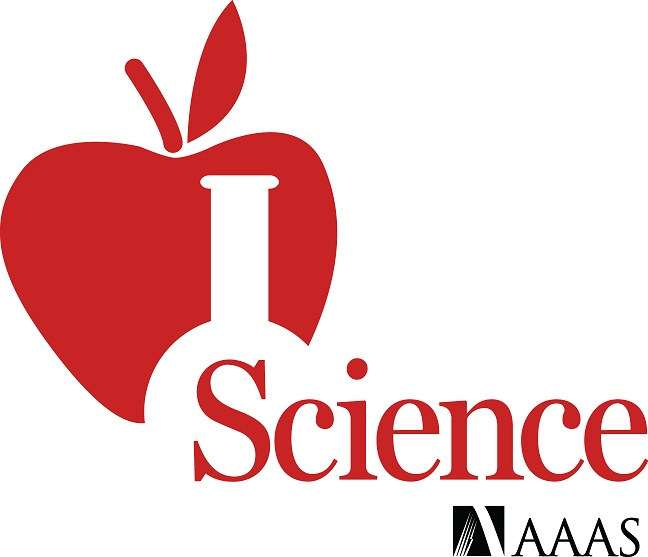
Simulations for K-12 Physics Teachers
by Rebecca Vieyra with guest commentary from Byron Philhour, 23 February 2016
Physics teachers find benefit in using online simulations with their students in many ways: they help students interact with phenomena that might be too expensive, dangerous, or time-consuming to physically do. More importantly, they can help students to conceptualize phenomena that is not always visible. Although physics teachers might have familiarity with with Physics Education Technology simulations (PhETs) or Open Source Simulations, among others, another resource that provides simulations in addition to other curricular and instructional materials is CK-12.
AAPT member and physics teacher Byron Philhour shares how he uses CK-12 resources in his own classroom:
I use the CK-12 simulations in many different ways, depending on the types of inquiry activities I am using in a given school week. Some simulations I like better as an introduction to a concept, with the thought that it will generate questions from students that can be answered during class. The Airplane simulation is good for this because it is such fun to fly. Other times, I use the simulations as a way to revisit material in new ways. Block and Tackle allows students to see visually that the work done by pulley systems with different mechanical advantage stays the same. Occasionally, I project the simulations at the front of the class and we talk through them together. One example of this is Irwin-2D - we adjust the velocity vs. time graphs in the horizontal and vertical direction and then see what happens. I like having all these different arrows for my quiver that I can use as I like. The set of simulations is so large that I'm sure you'll find something you can use with your students that is fun and for free.
Byron Philhour, Ph.D
byron.philhour@sfuhs.org
@bphilhour
Would you like to learn more about CK-12 simulations? Join this month's webinar "CK-12 Physics Simulations" on Thursday, February 25th, at 8PM Eastern presented by AAPT member Sonia Tye.
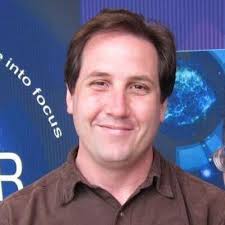
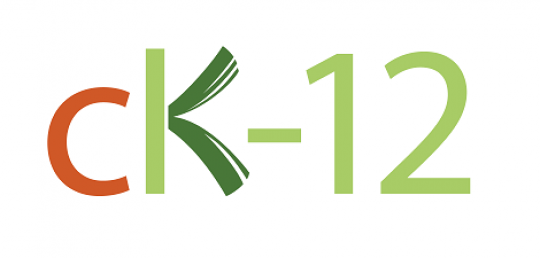
Mentoring: Nurturing the Physics Teaching Profession
by Rebecca Vieyra, 7 January 2016
Mentoring is integral to most professions, and it's no different for physics teachers. Look for a physics teacher in any high school, and you will most likely find that she or he is the only physics teacher in the school. Although isolation is often experienced by teachers regardless of their discipline, about 80% of physics teachers are the only physics teachers in their school (AIP, 2012).
What this often means is that physics teachers turn to the wider community - they attend conferences, workshops, and join professional societies such as the American Association of Physics Teachers, or even start their own networks online.
What's your role in physics education? As a profession, we all have the responsibility to take care of each other. Mentoring is one solution to inducting and retaining new physics teachers, while supporting and re-energizing those who have been in the profession for a while. In fact, a report recently found that after 5 years of teaching, those teachers who had a mentor in their first year had an 86% chance of remaining in the classroom, as compared to only 71% of teachers who did not have a mentor in that first year (DOEd, 2015).
One immediate action you can take is to join the AAPT's eMentoring Program, and register to be either a mentor or a mentee. Essentially, the program pairs up mentors and mentees with similar teaching situations, and, if possible, similar geographic locations. Mentoring relationships often develop through e-mails, over the phone, or sometimes even in person.
What's in it for you? As a mentor or mentee, a mentoring relationship gives you a "physics buddy" with whom you can bounce ideas, share lessons, and work out challenges. Mentees often seek out a mentor for help with fundamental physics and teaching strategies. Mentors can benefit from the exchange of new ideas, and the knowledge that they are having a significant impact outside of the classroom as well as within it. A number of mentoring relationships have resulted in classroom visits to meet each other in person and offer feedback, co-publications in professional journals, or even co-presentations at national workshops and conferences.
The AAPT's eMentoring Program also supports monthly webinars for mentors, mentees, and the general public. Join this month's webinar on NGSS-Based Strategies for Facilitating Student Learning in Chemistry and Physics with AAPT eMentor Frank Lock, in coordination with the American Association of Chemistry Teachers.
Meet a mentor: John Roeder.
I can remember wanting to be a teacher as far back as my elementary school days, but it wasn't until I took Dr. Lambe's introductory physics course (that was recommended for math majors) when I was a freshman at Washington University that I got interested in physics and Dr. Lambe persuaded me to become a physics major. He also recommended that I go to Princeton for graduate school. After getting my Ph.D. there in 1966, I spent two years as an intelligence analyst in the Army (they knew my thesis was in nuclear physics) and then taught five years at Transylvania University in Lexington, Kentucky. After that, my wife Rae Ann and I moved back to Princeton (where I had first met her), and I started teaching at The Calhoun School, on the Upper West Side of Manhattan, where I am now spending my 43rd.
I think that the most important lesson I have learned in more than forty years of teaching is the importance of student engagement in the learning process. To this end, I like to create situations in which students are asked to do things that enable them to discover basic concepts and principles of physics for themselves. This, to me, is more meaningful and lasting than having them hear someone "tell" them what the concepts and principles are.
My professional involvement with AAPT began when I applied to become a Physics Teaching Resource Agent (PTRA) (and was accepted) in 1985. This networked me with a lot of other eager physics teachers, and from working with them I realized that I had a lot to give to my professional physics teaching community and that it was time to do so. In addition to being a PTRA, I also accepted the position as Secretary-Treasurer of the Physics Club of New York (an organization of mostly high school physics teachers that meets monthly to hear speakers) and have served AAPT in a number of capacities. It then only seemed natural that I should volunteer to be one of AAPT's eMentors. I suppose I've had about half a dozen mentees by now, and the one I think I shall remember most was Natasha, then in Baltimore, who liked to have me call her every Sunday night.
American Institute of Physics. (April 2012). Challenges high school teachers face. Retrieved from https://www.aip.org/sites/default/files/statistics/highschool/hs-teacherchall-09.pdf
U.S. Department of Education. (April 2015). Public School Teacher Attrition and Mobility in the First Five Years: Results from the first through fifth waves of the 2007-08 beginning teacher longitudinal study. National Center for Education Statistics. NCES 2015-337. Retrieved from http://nces.ed.gov/pubs2015/2015337.pdf
For more details and information about AAPT's K12 Programs, please contact the K-12 Program Manager, at K12programs@aapt.org




